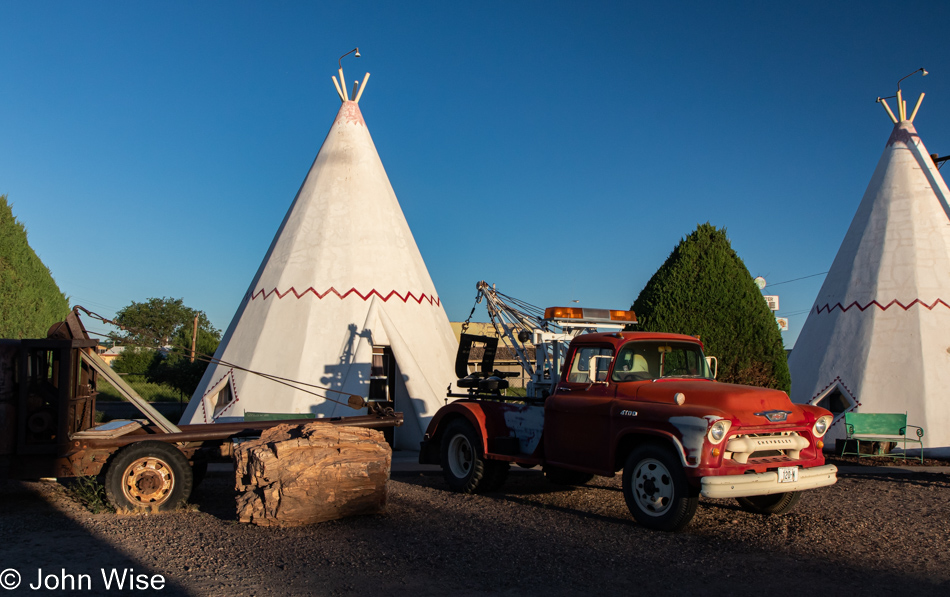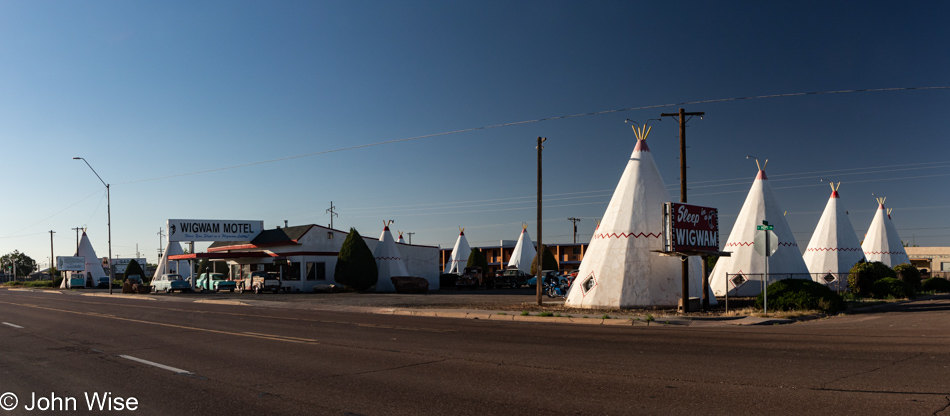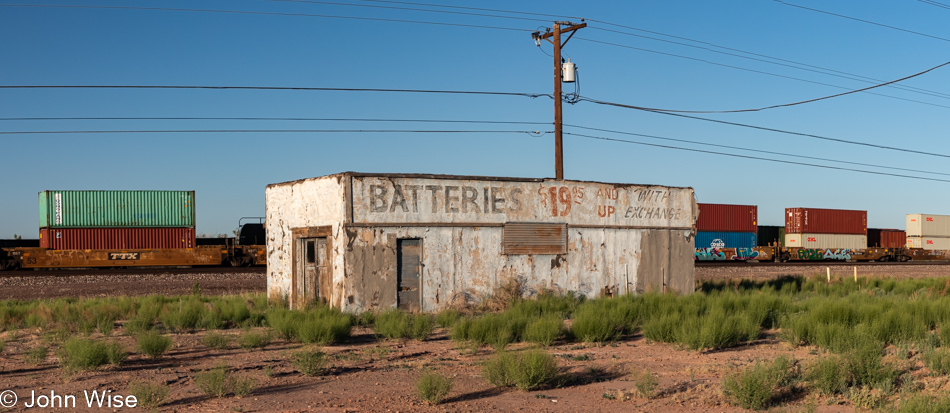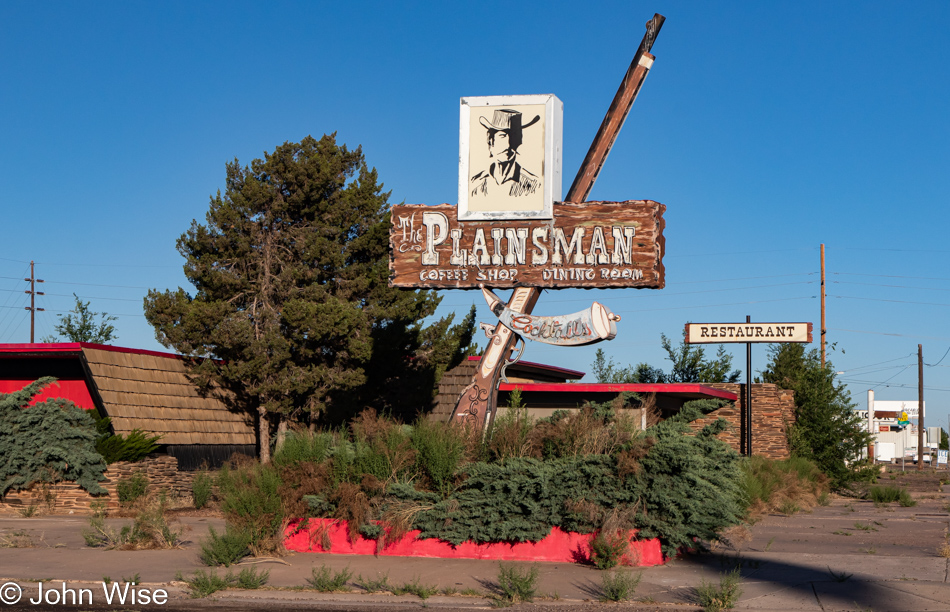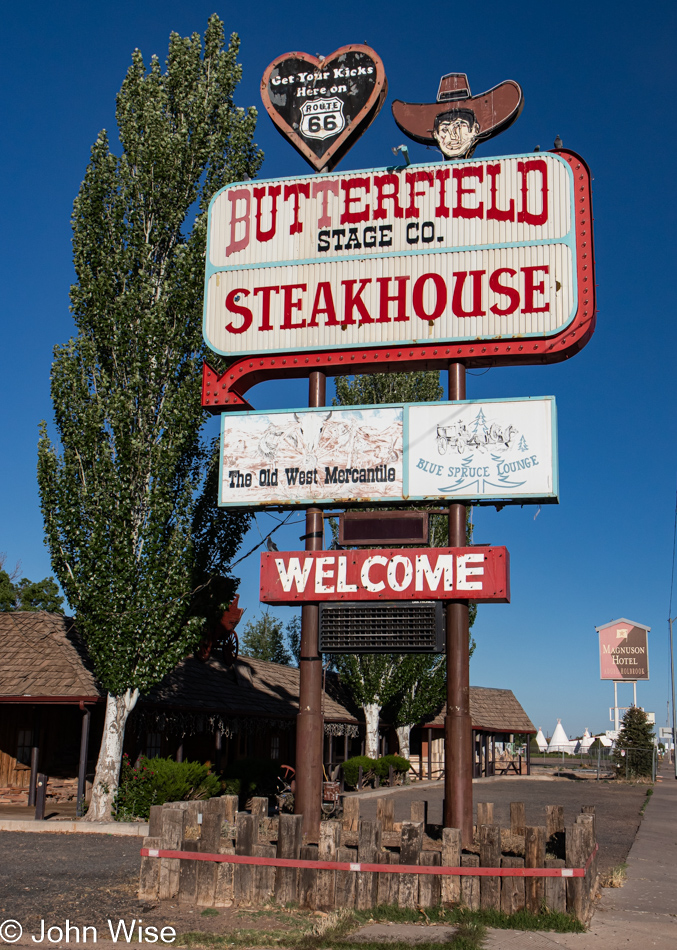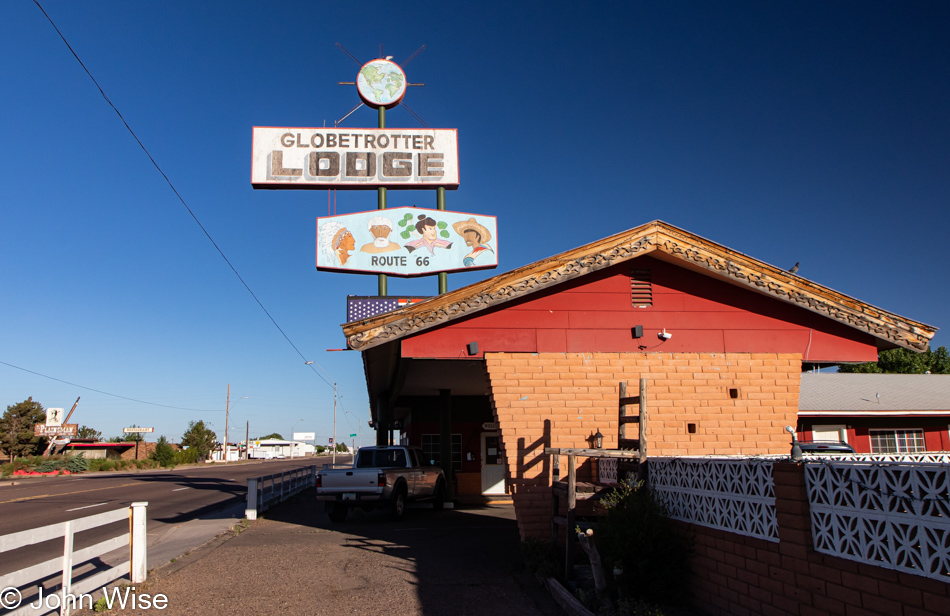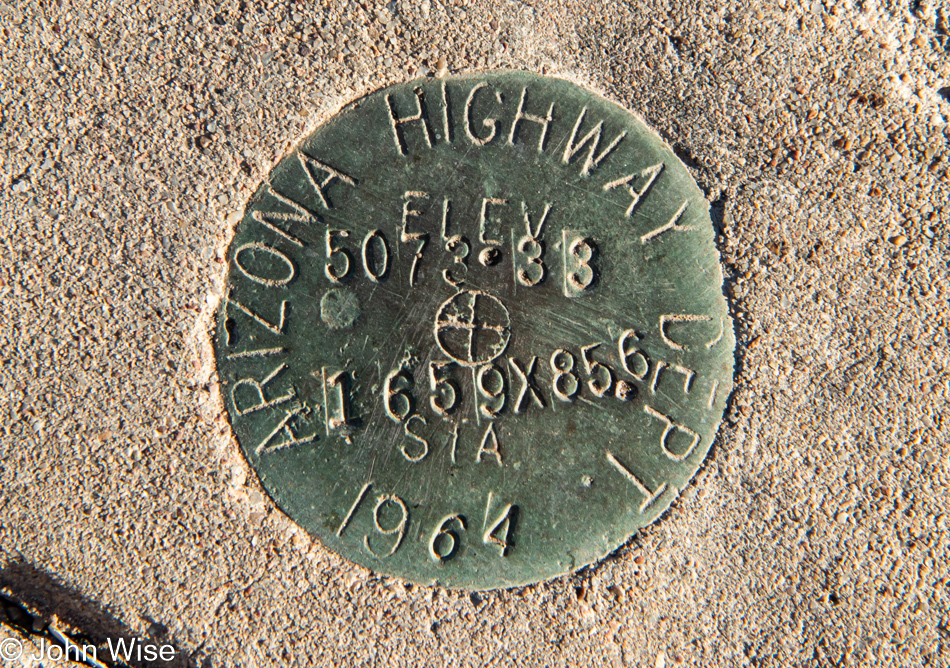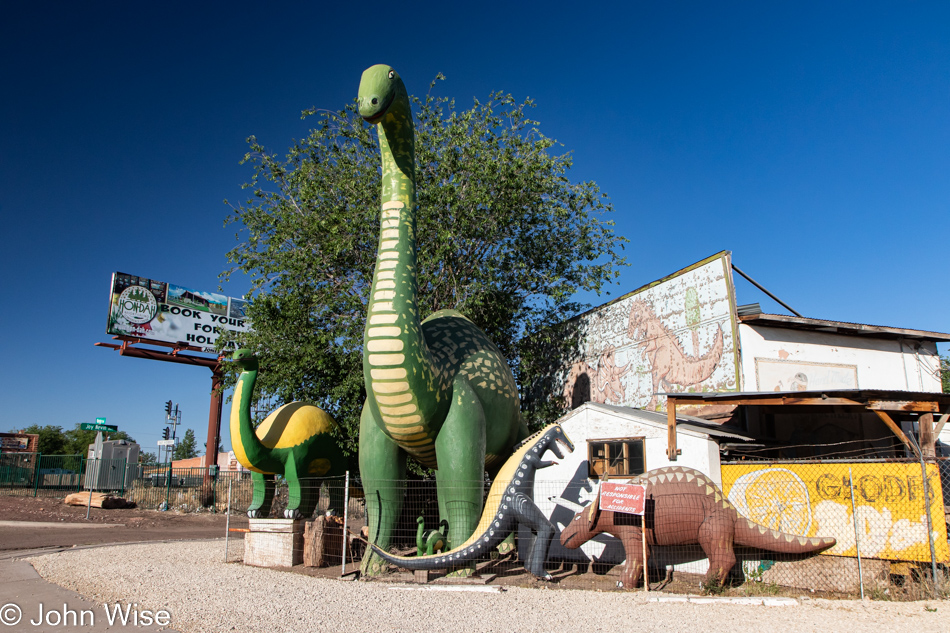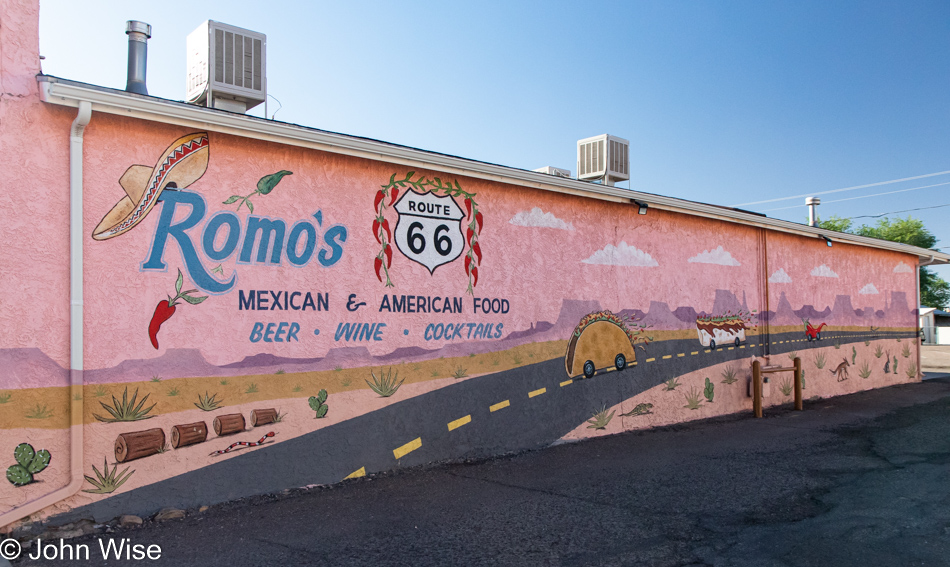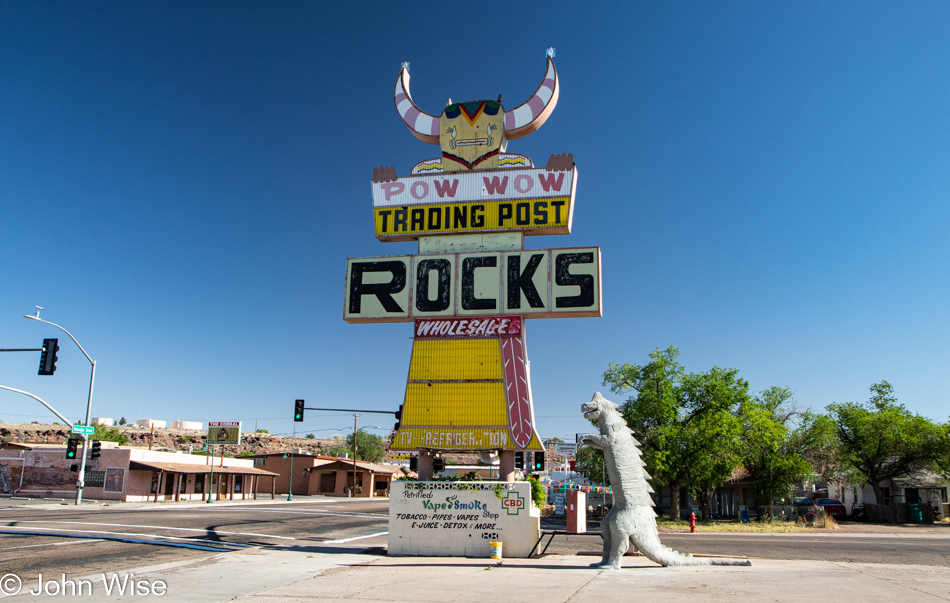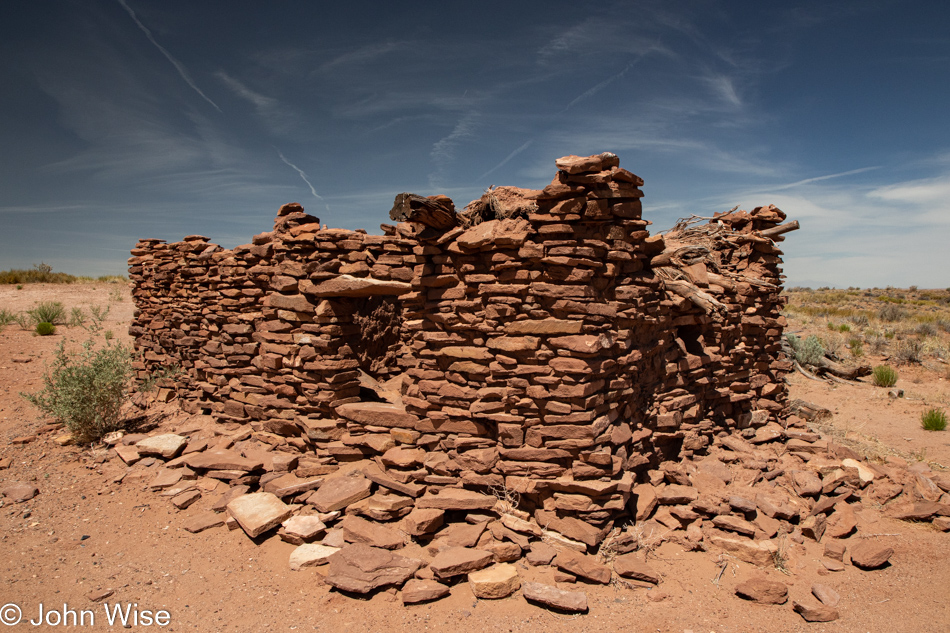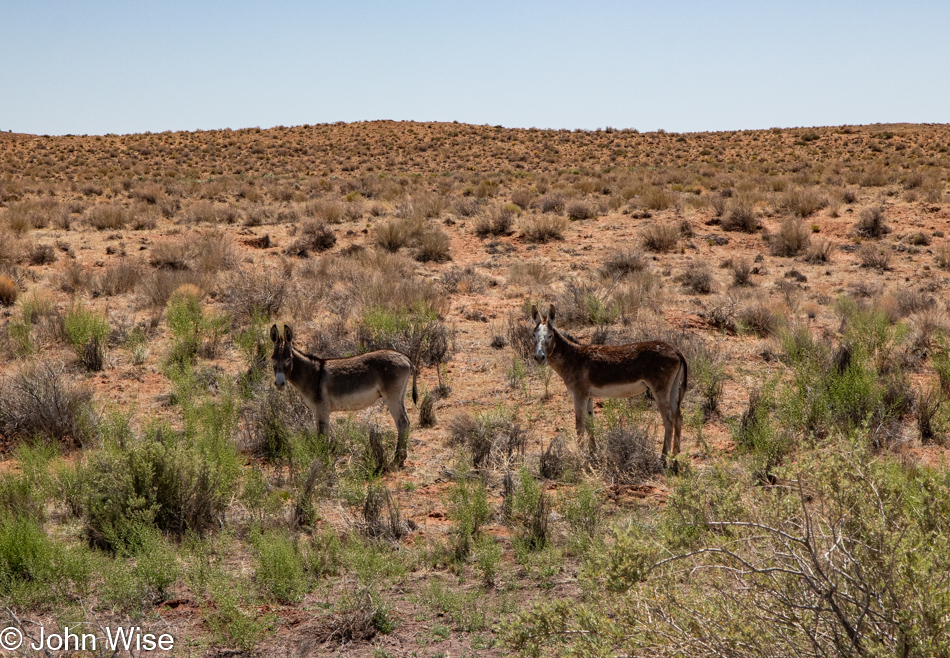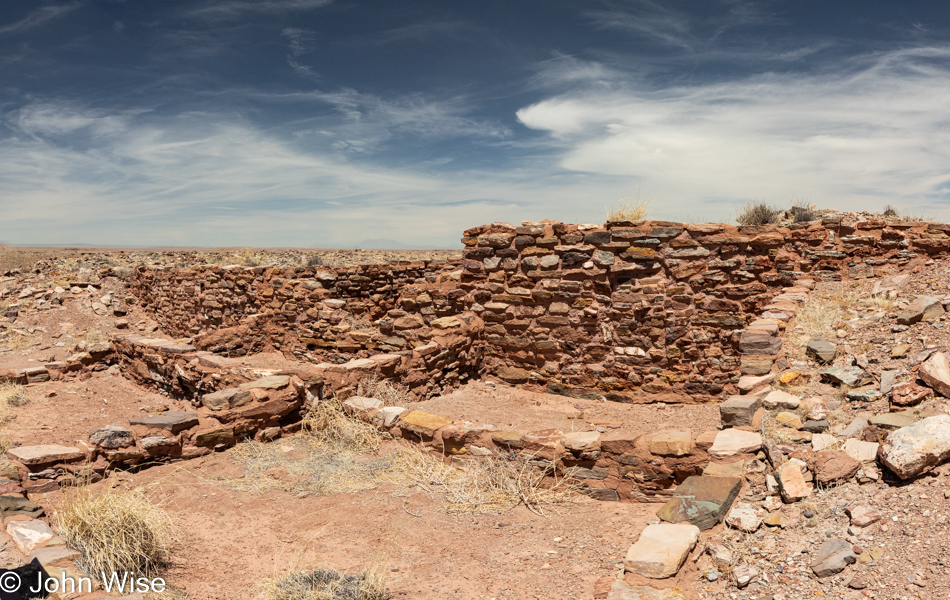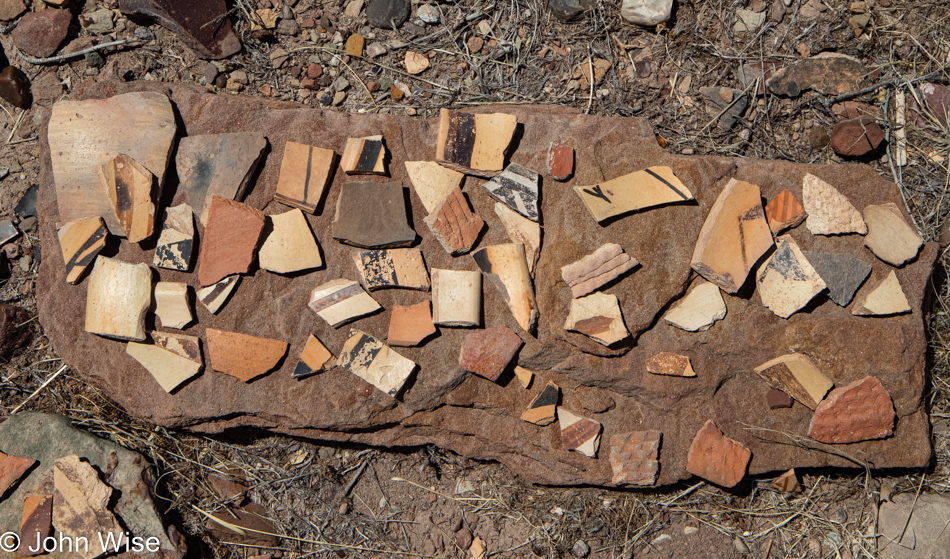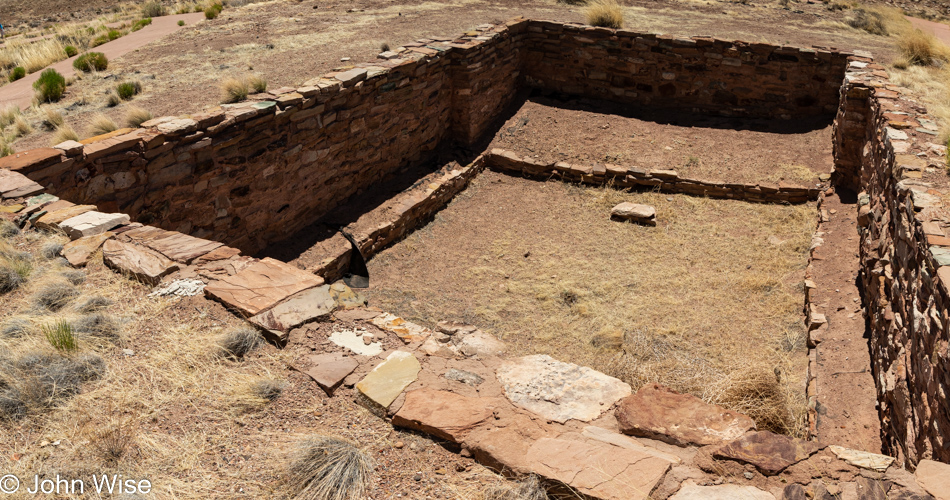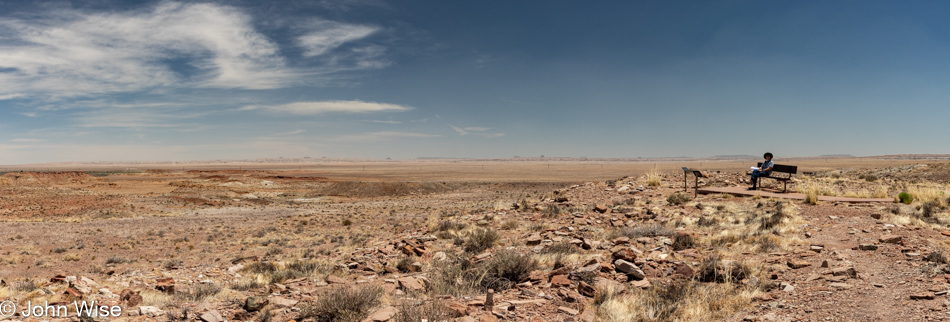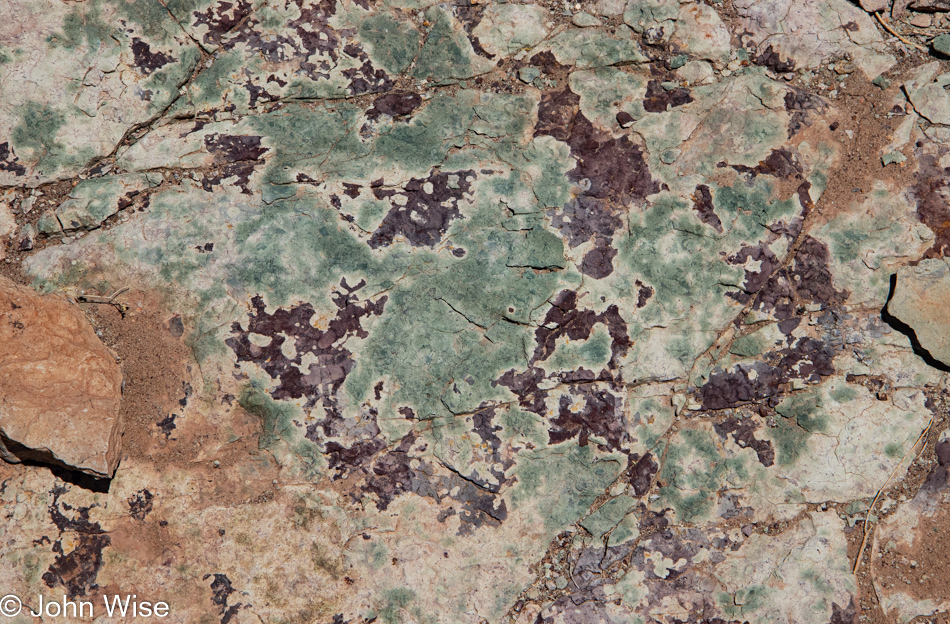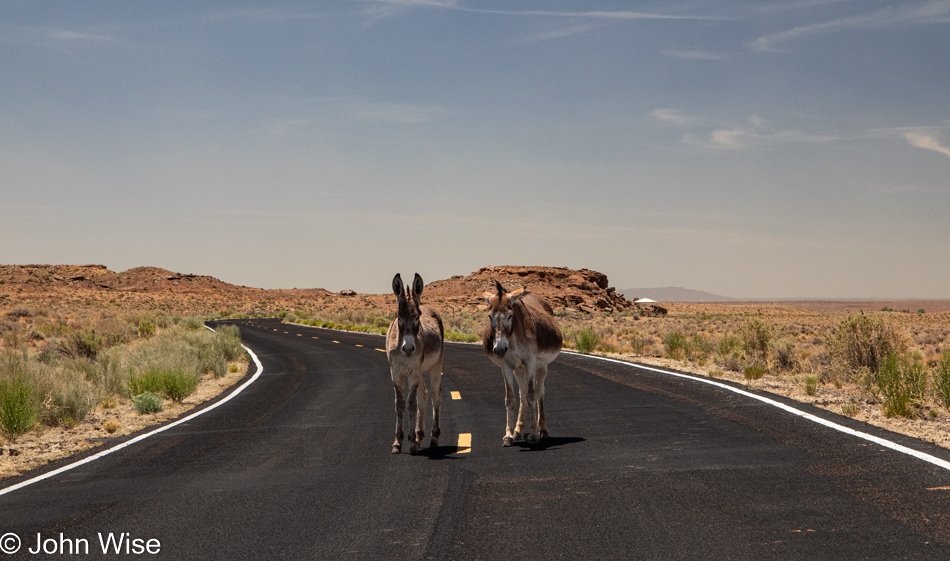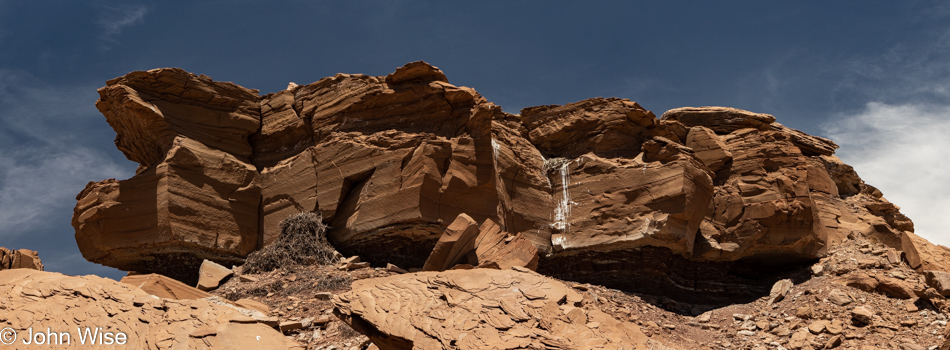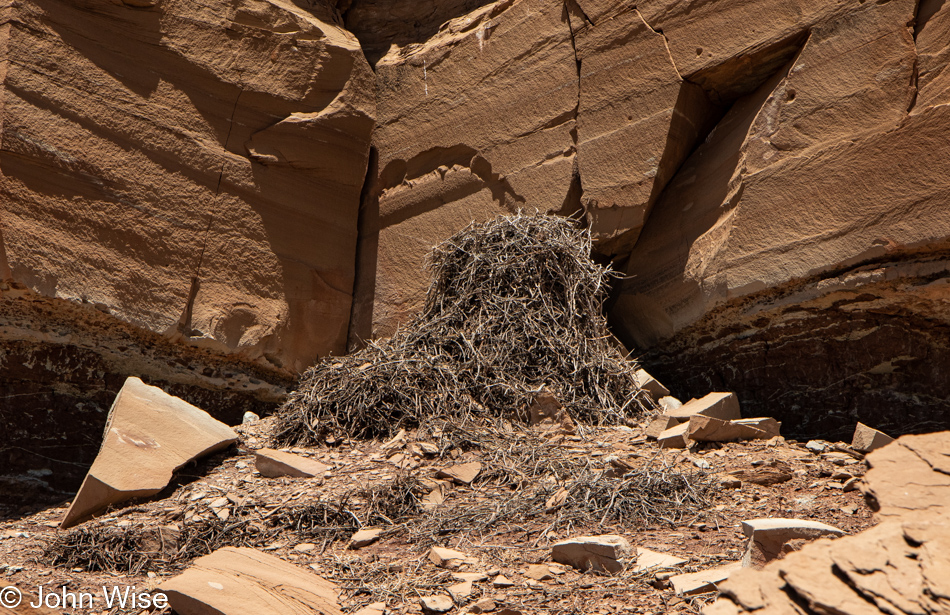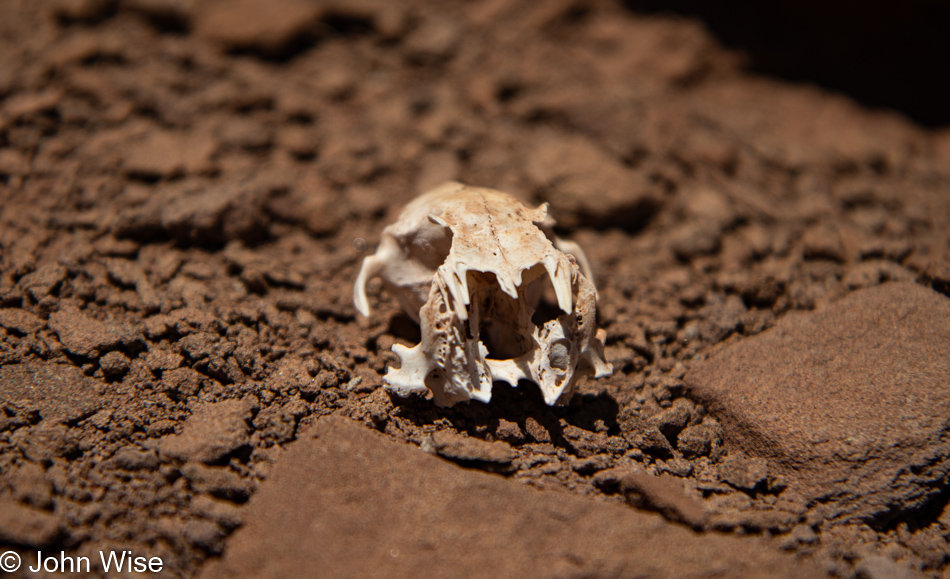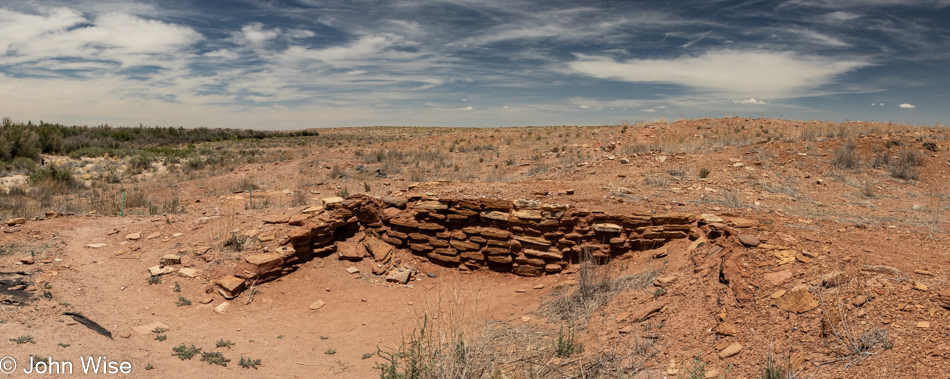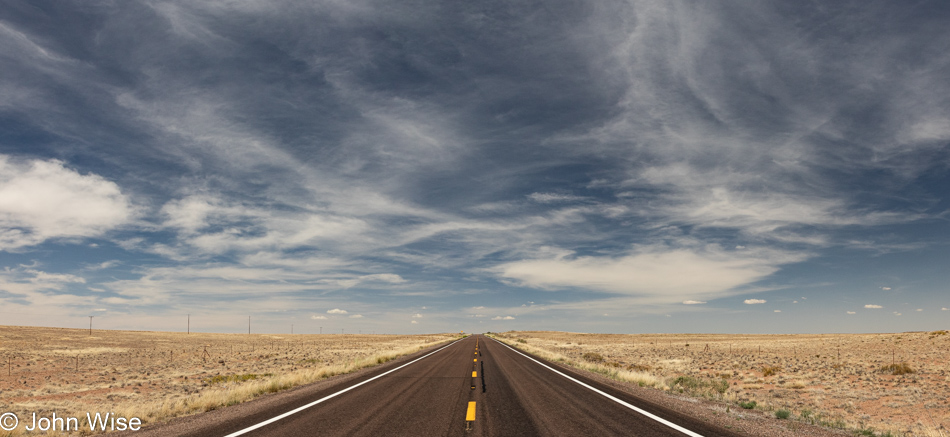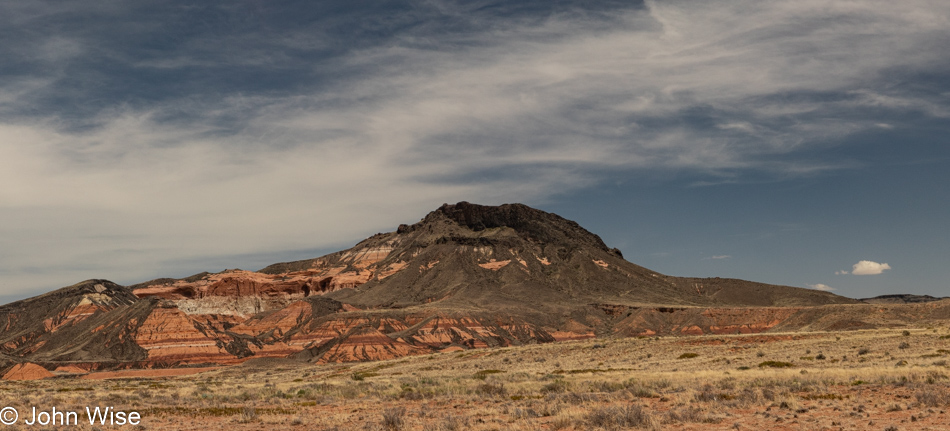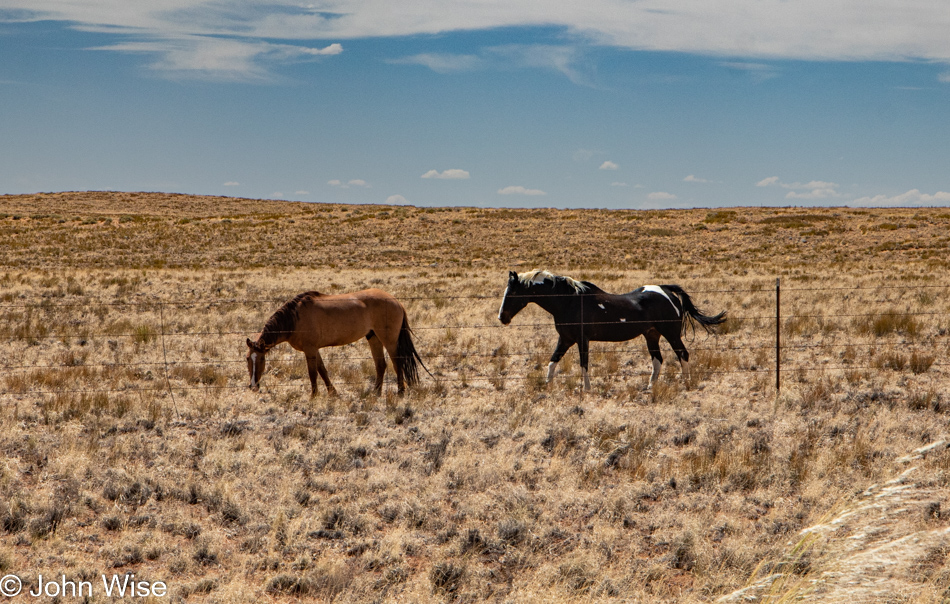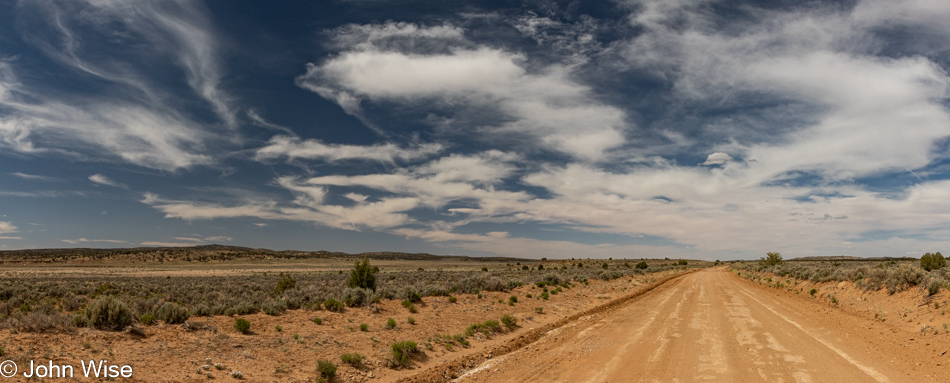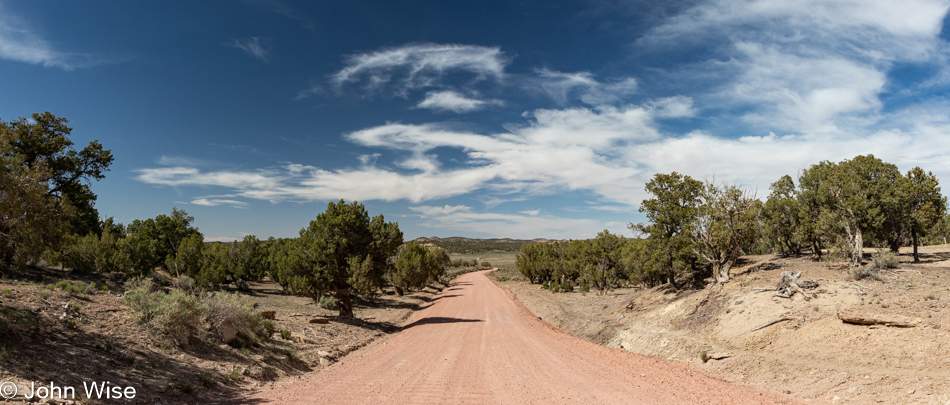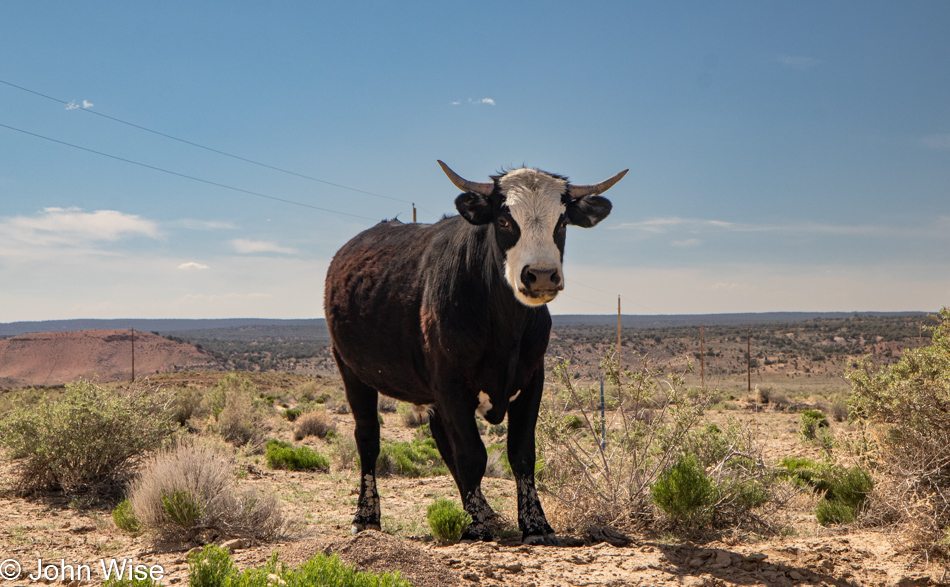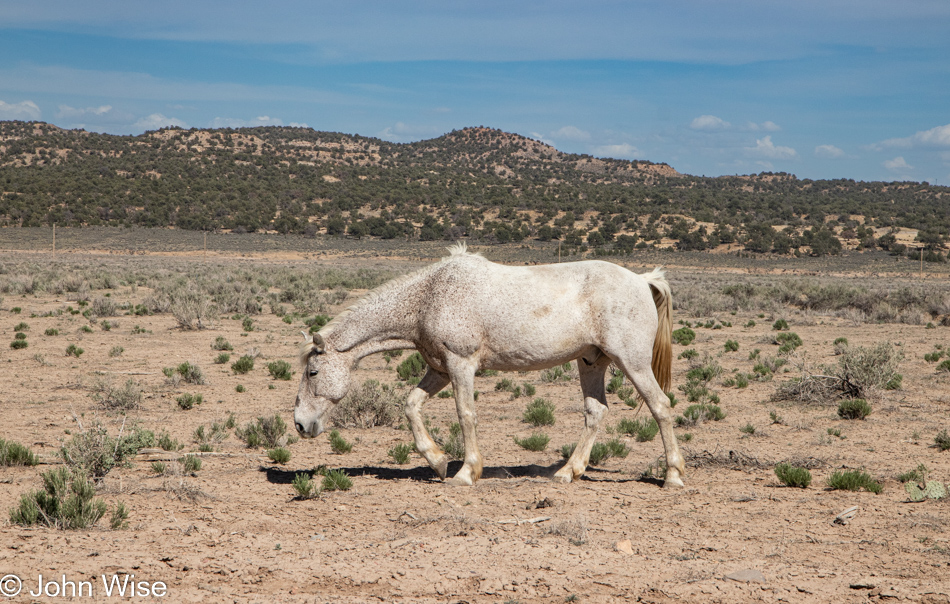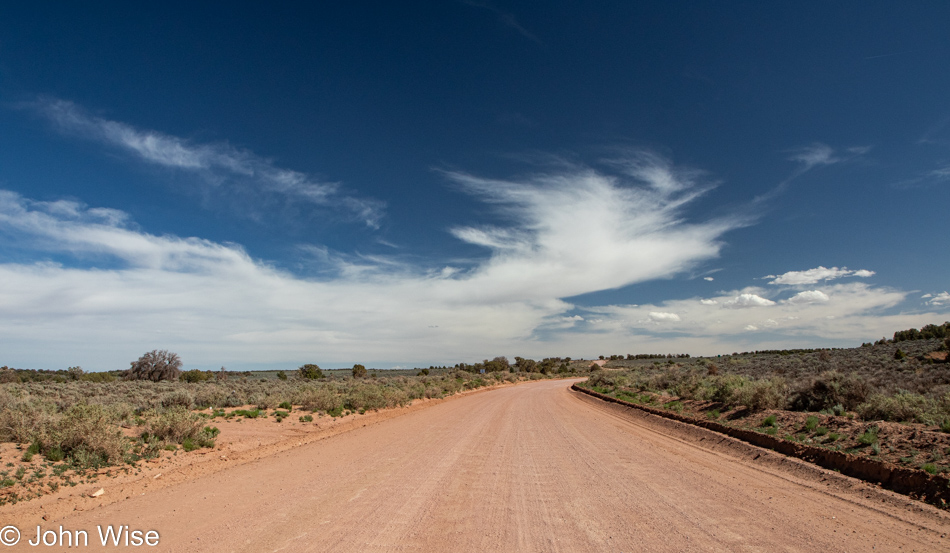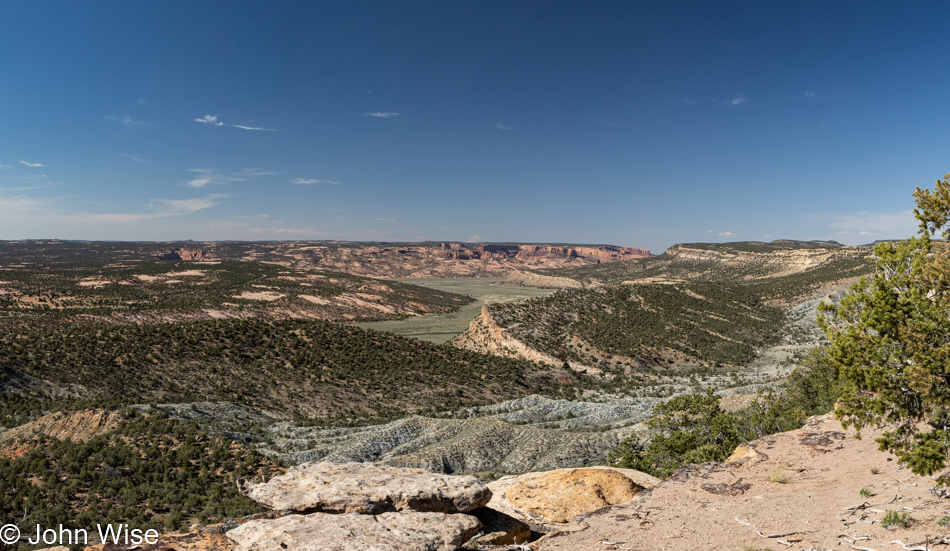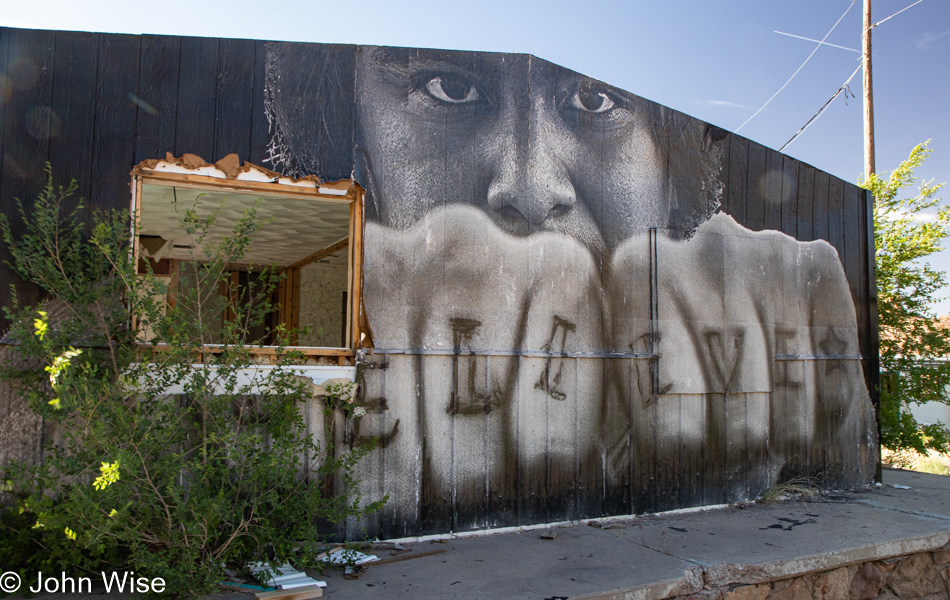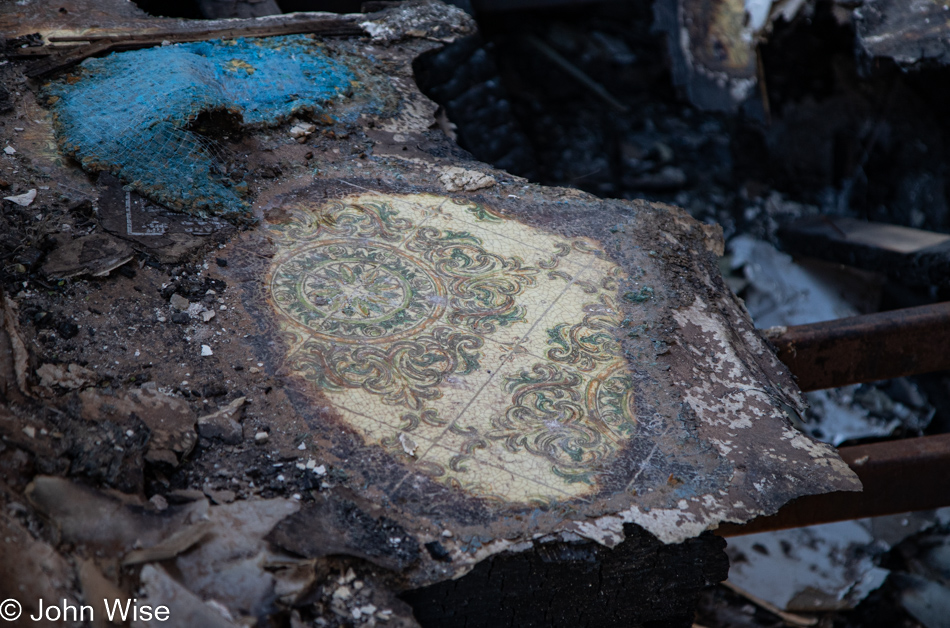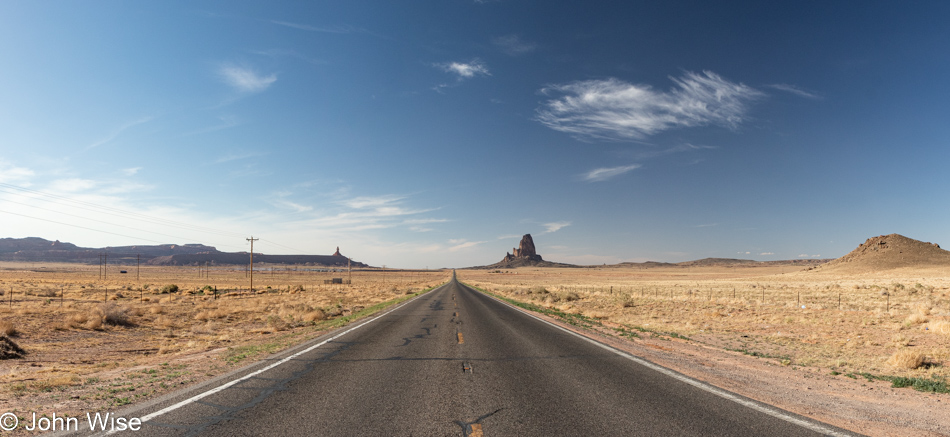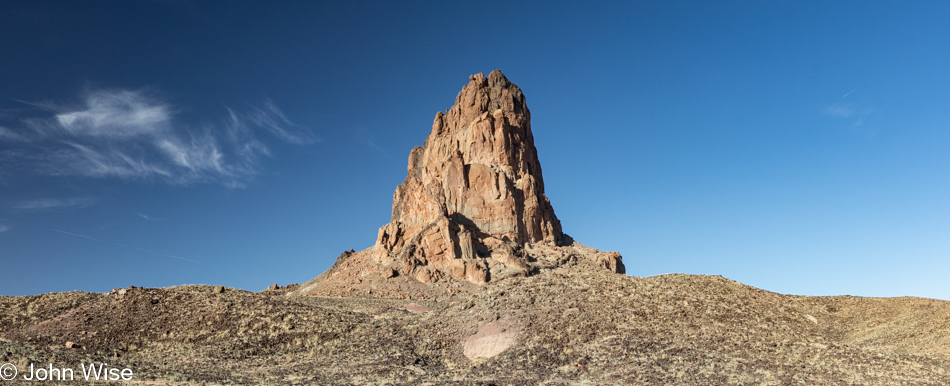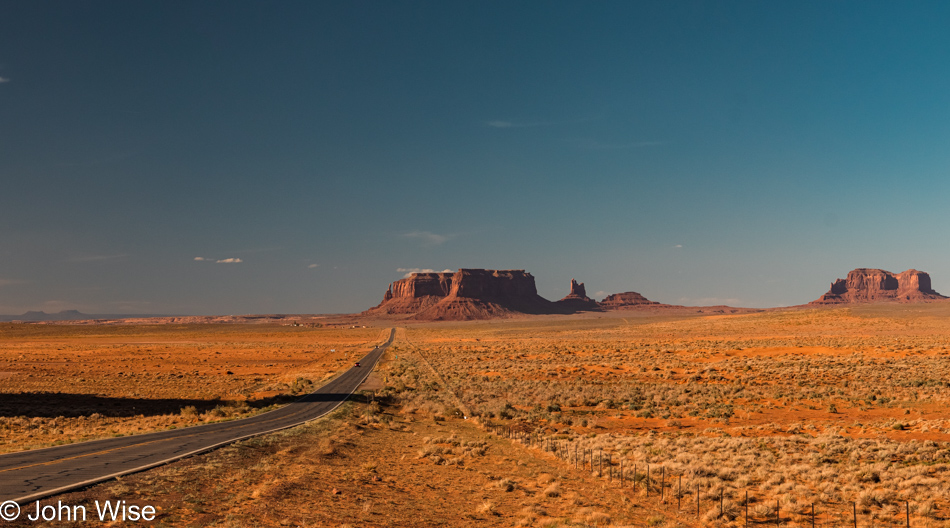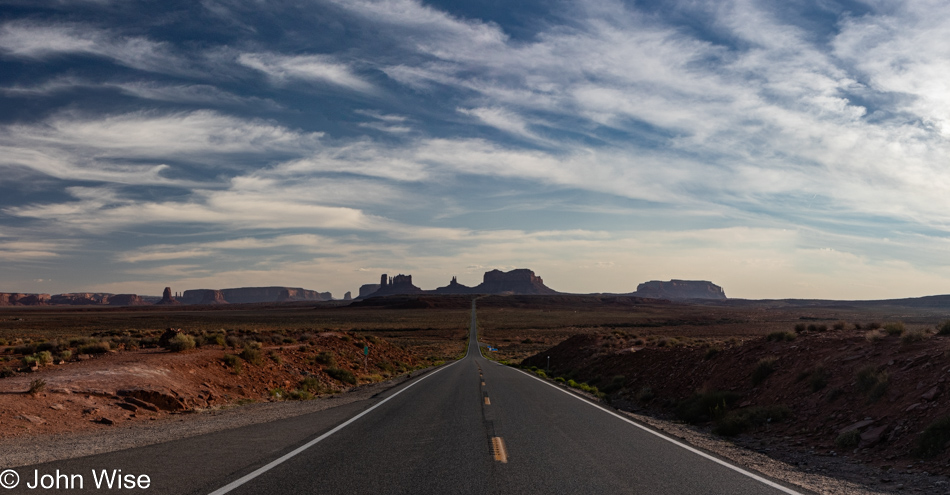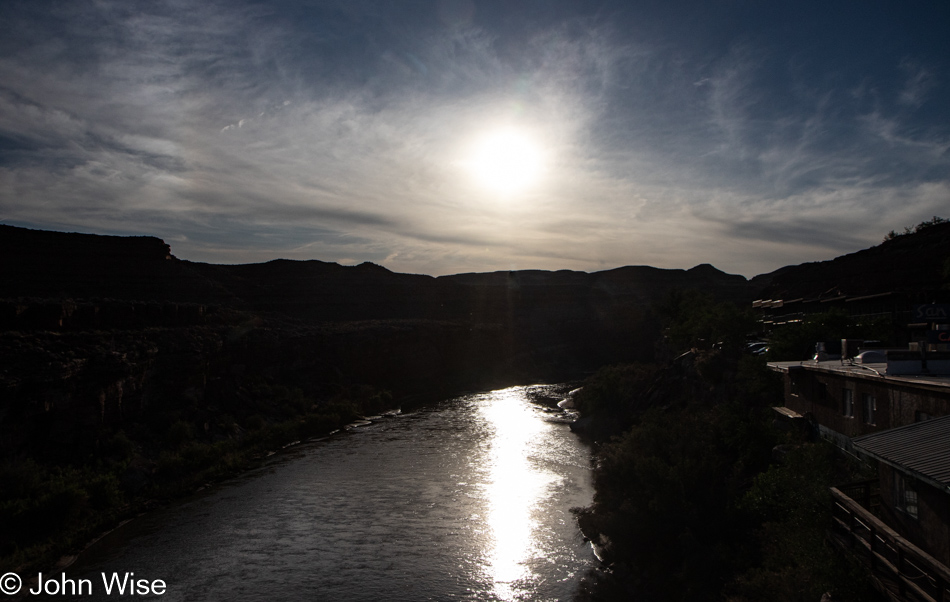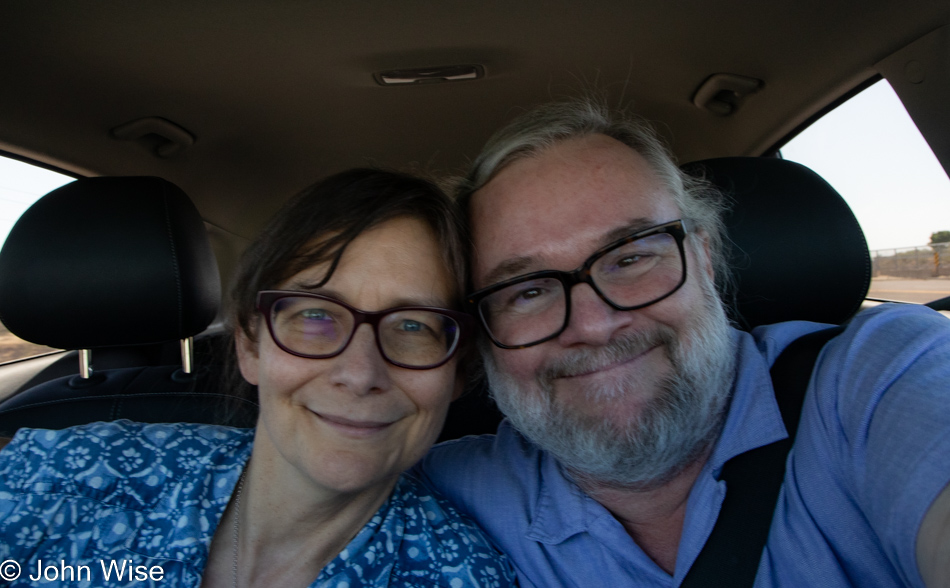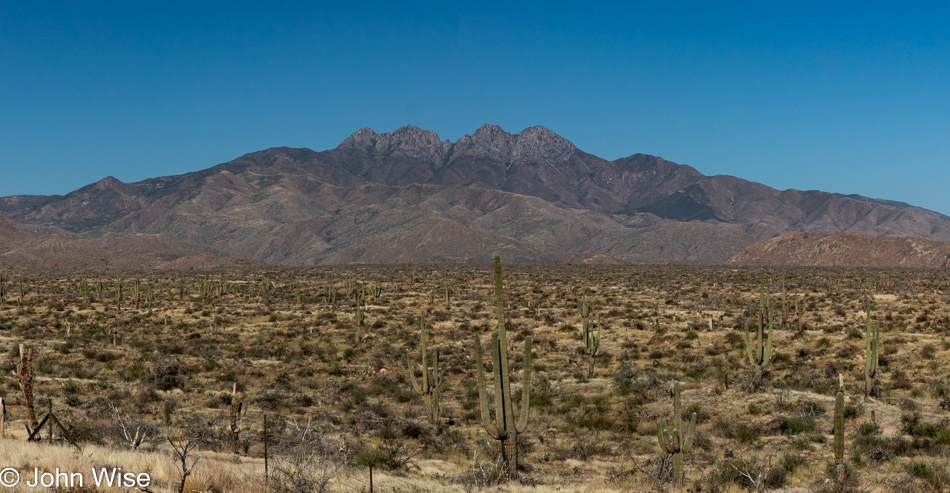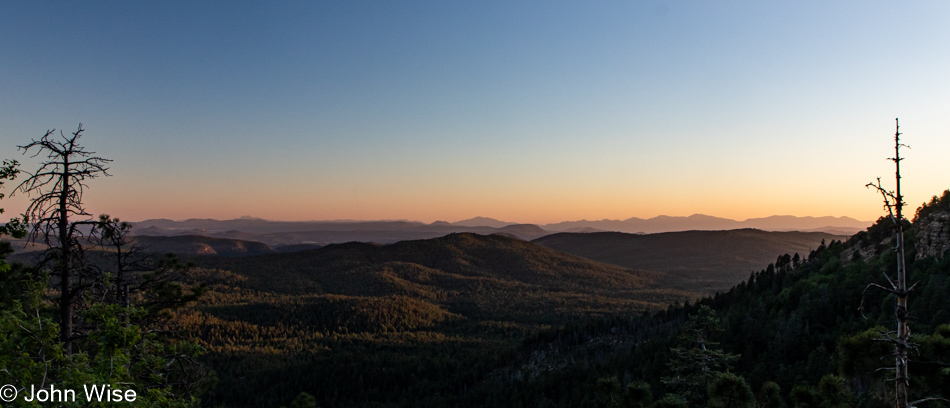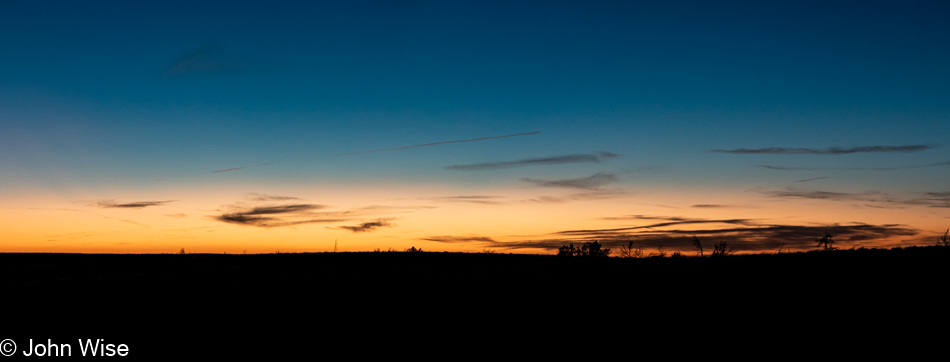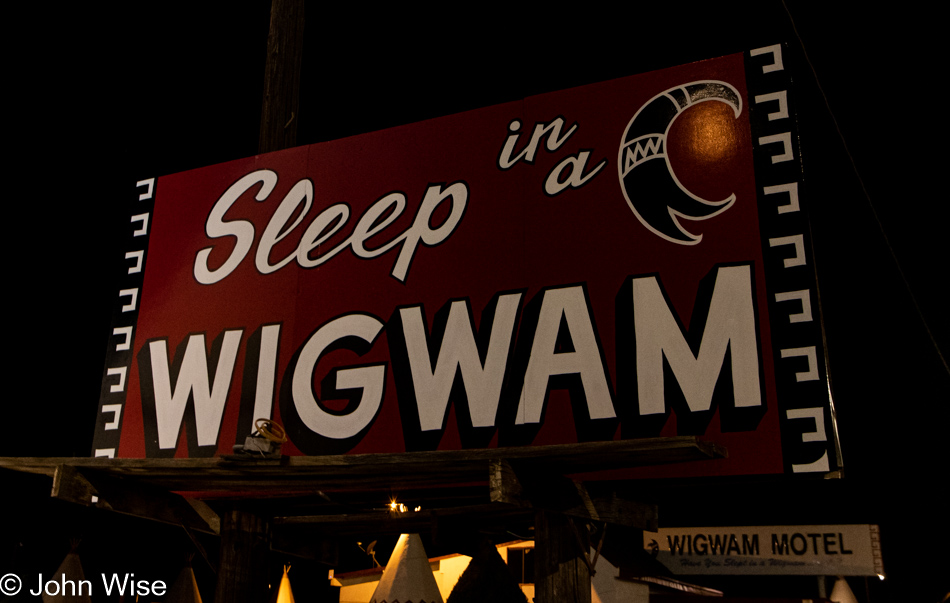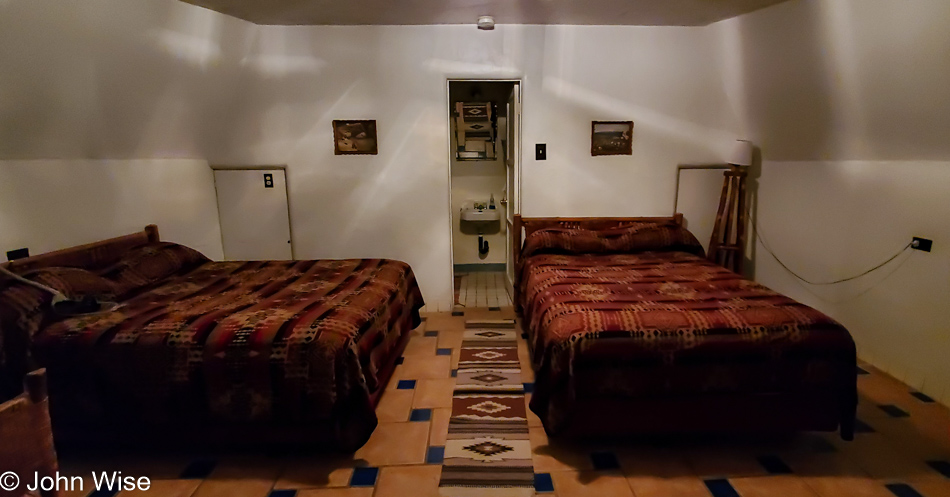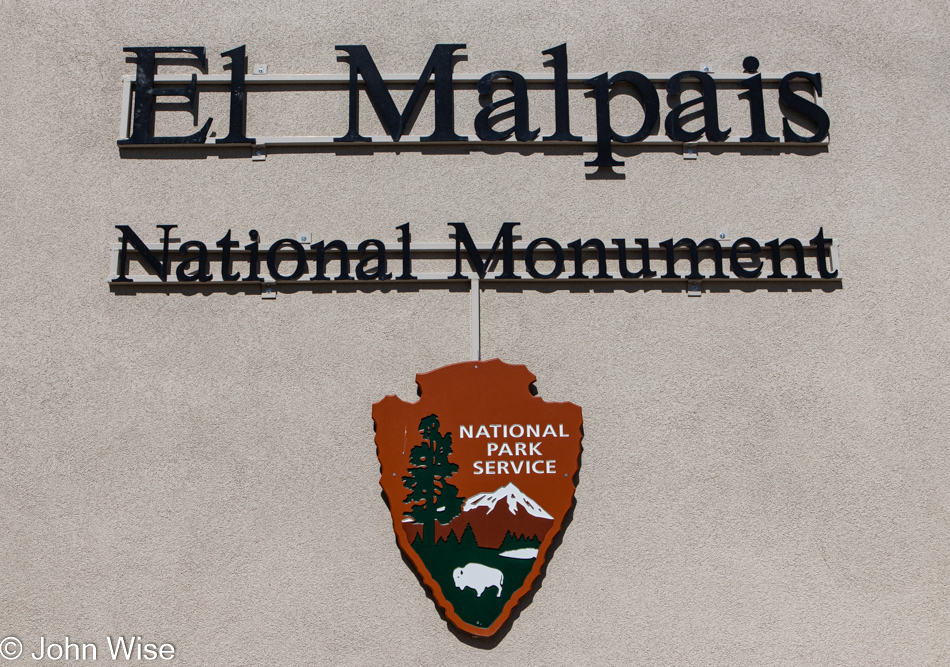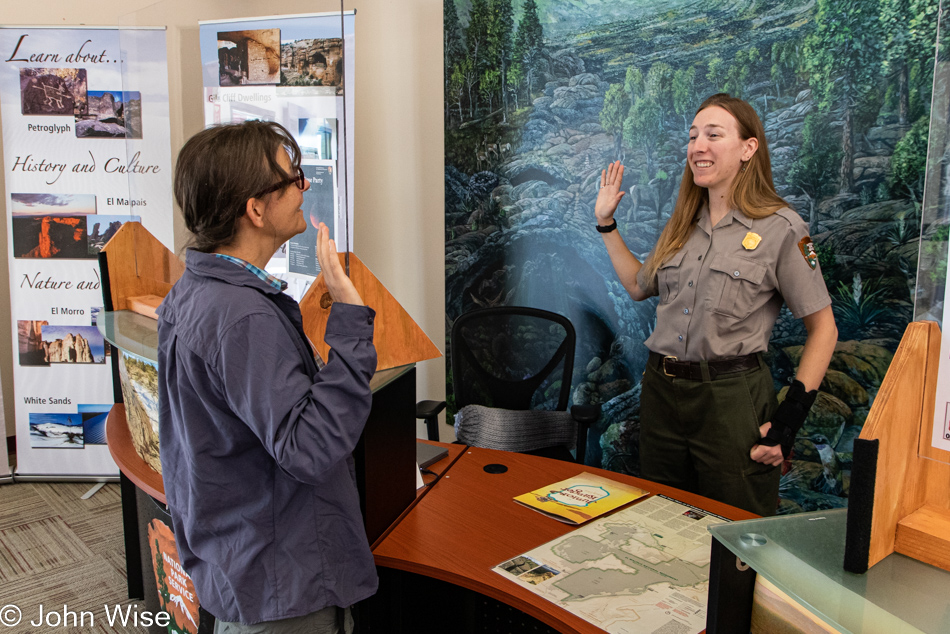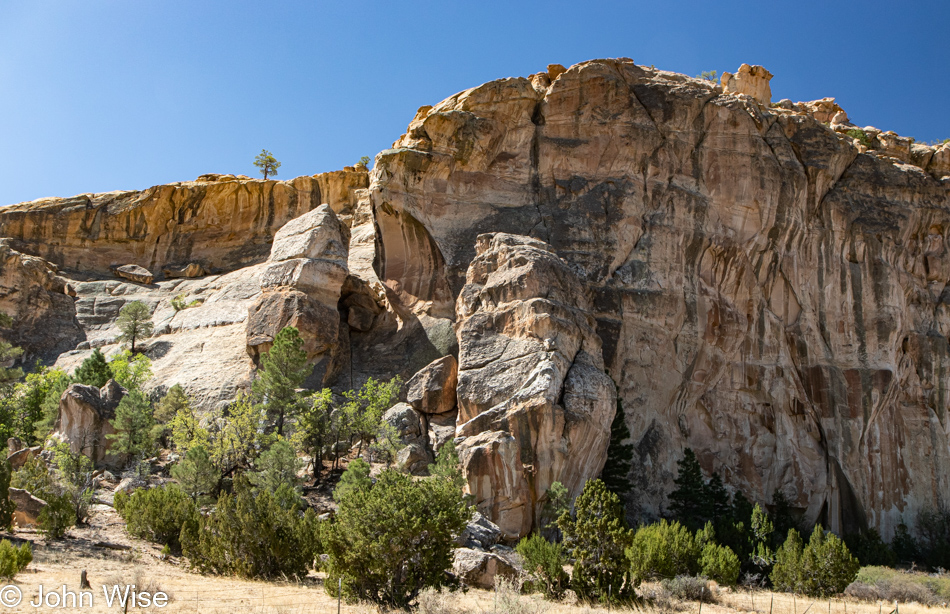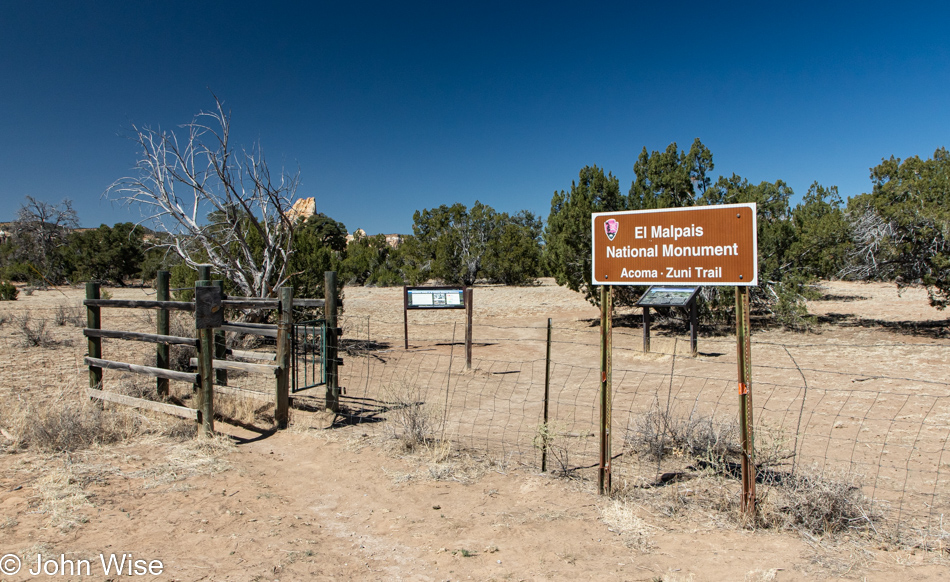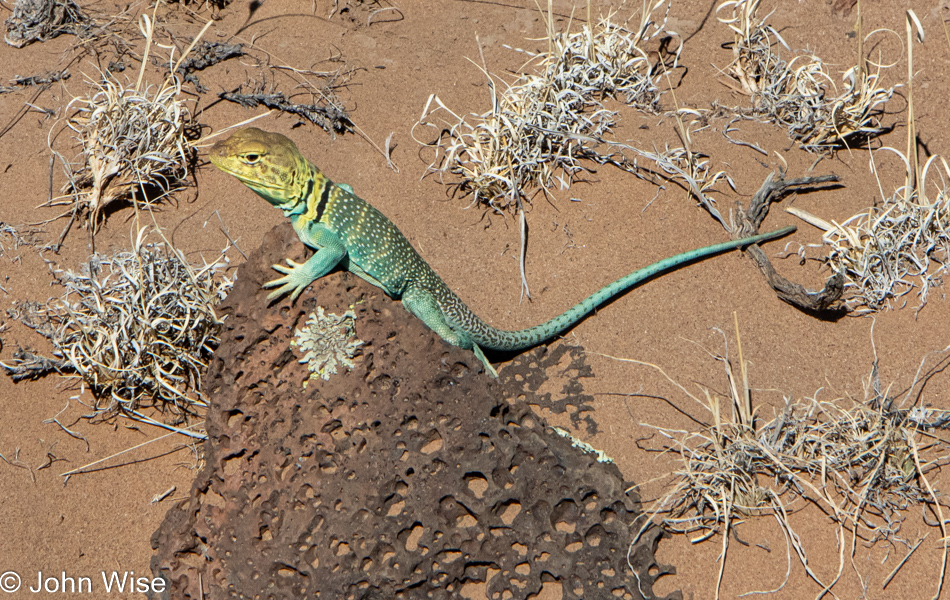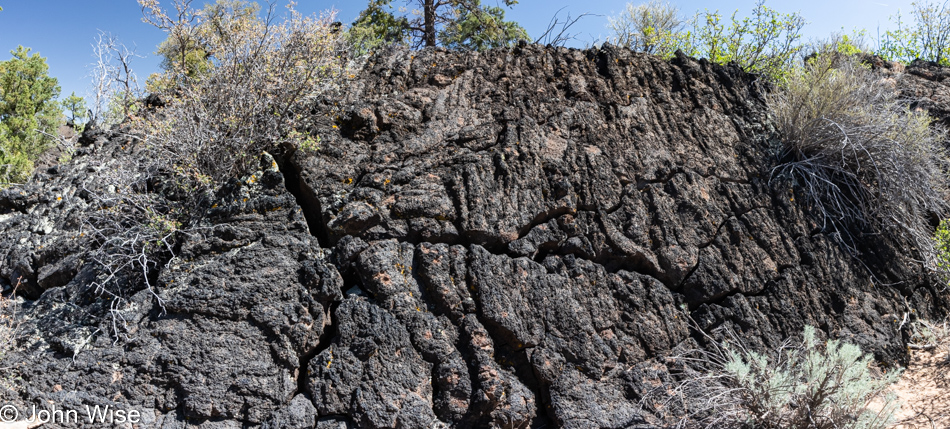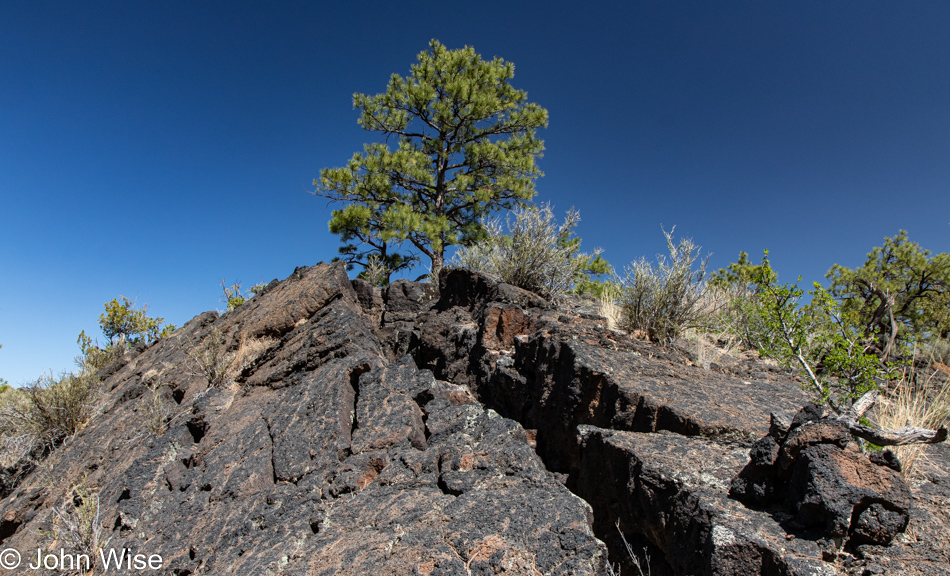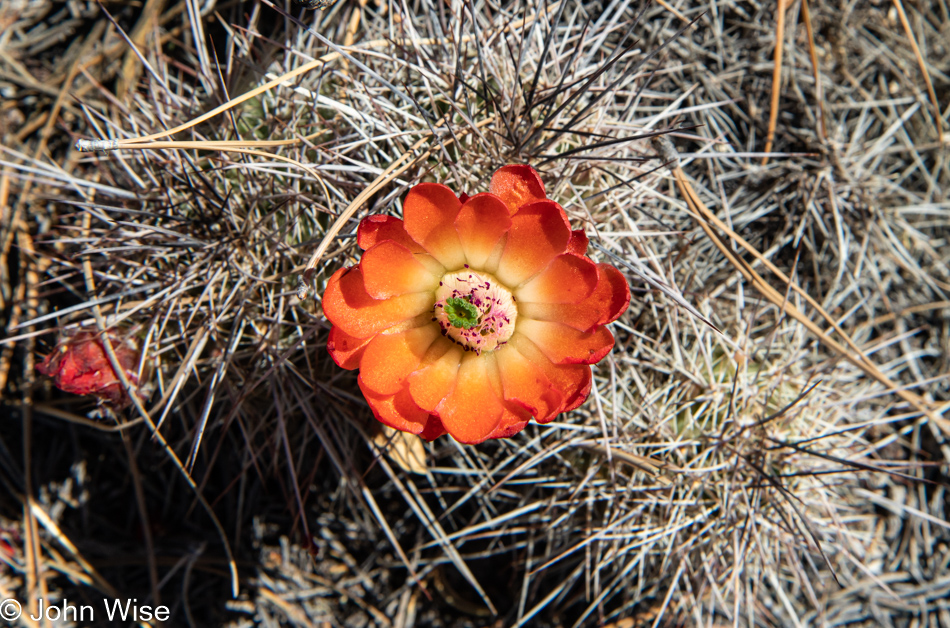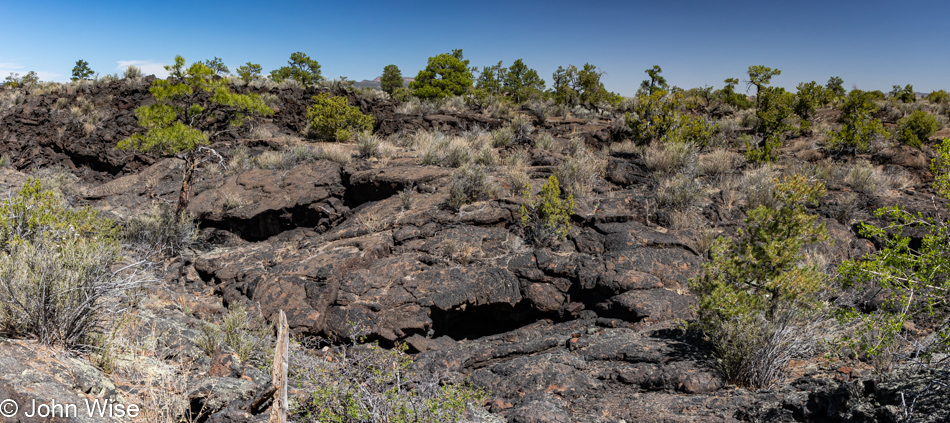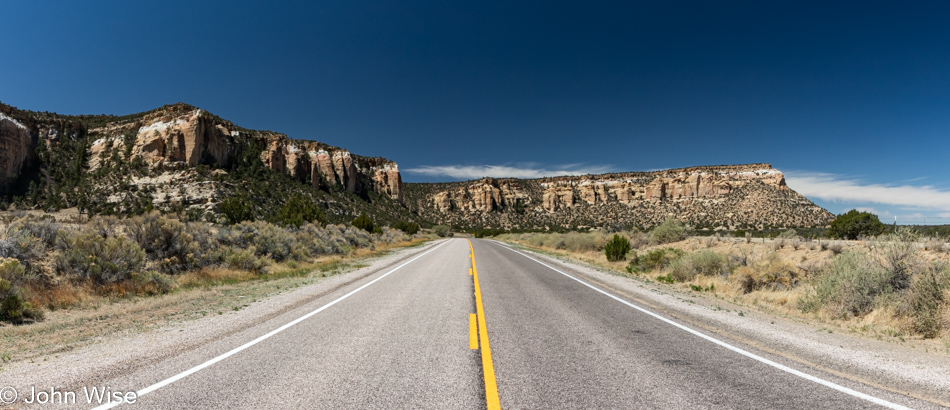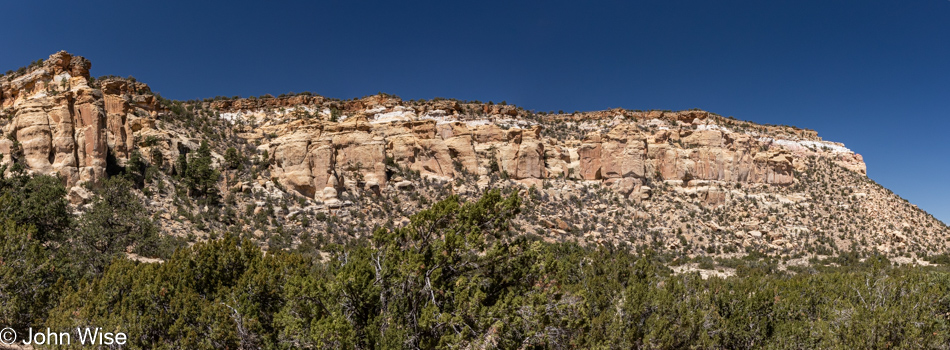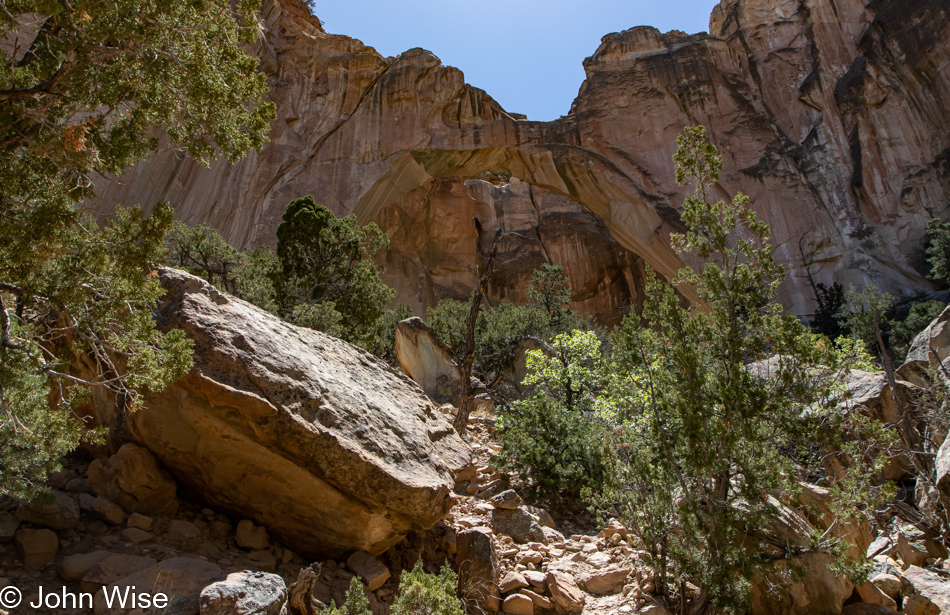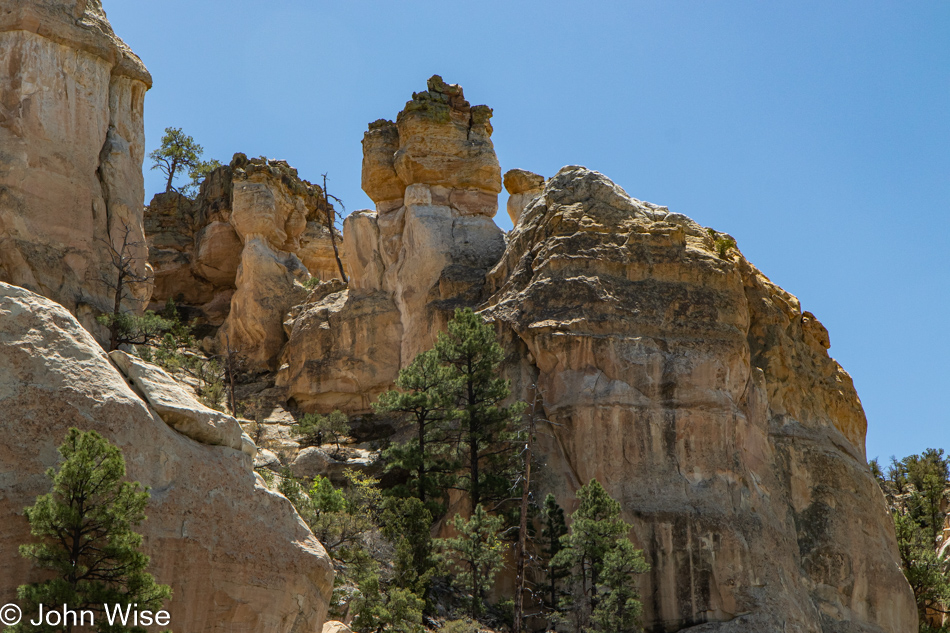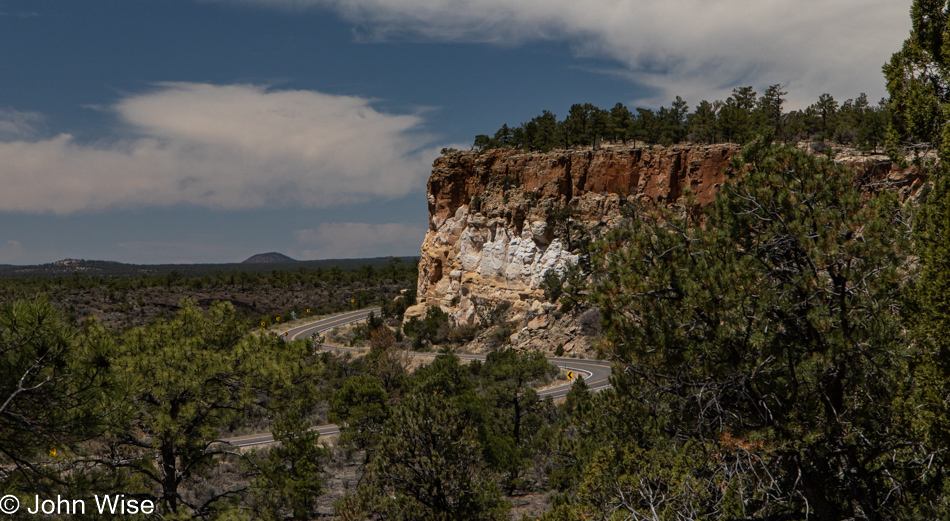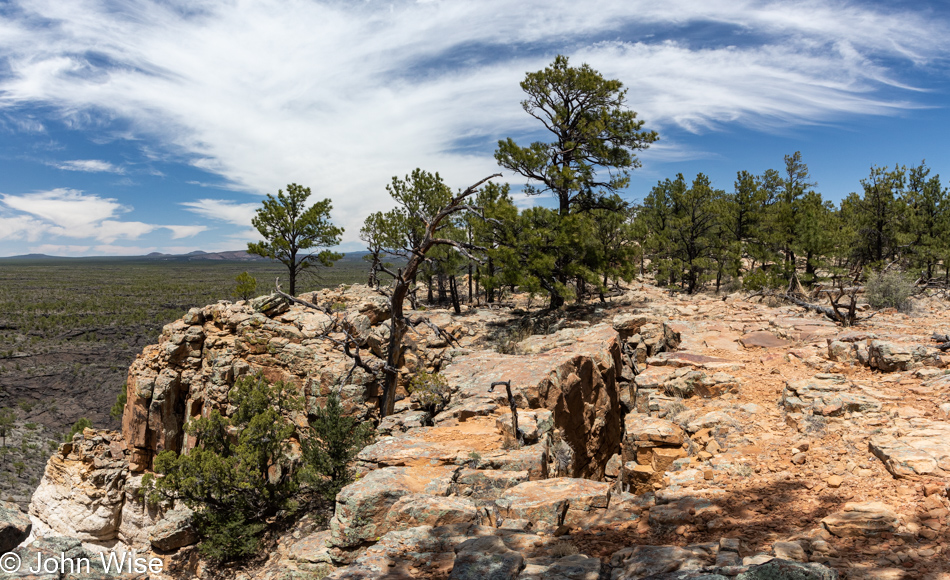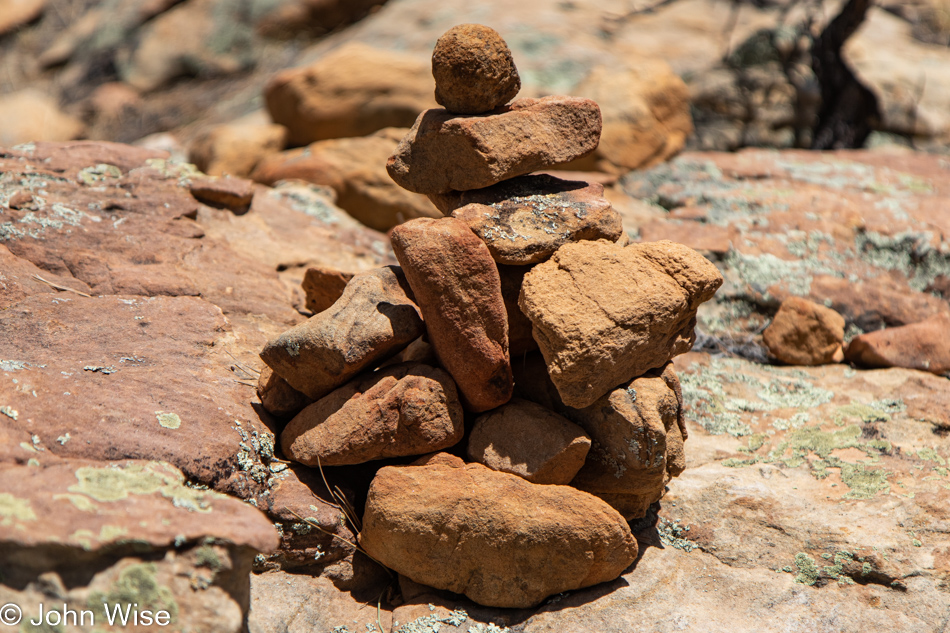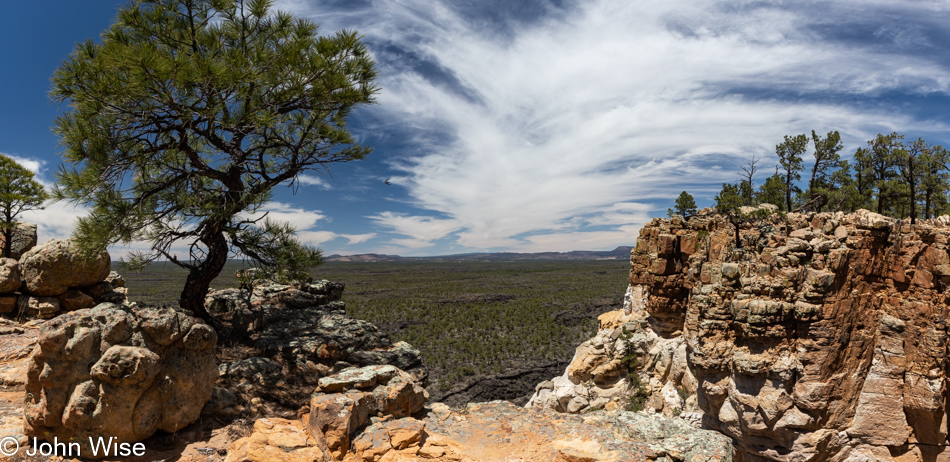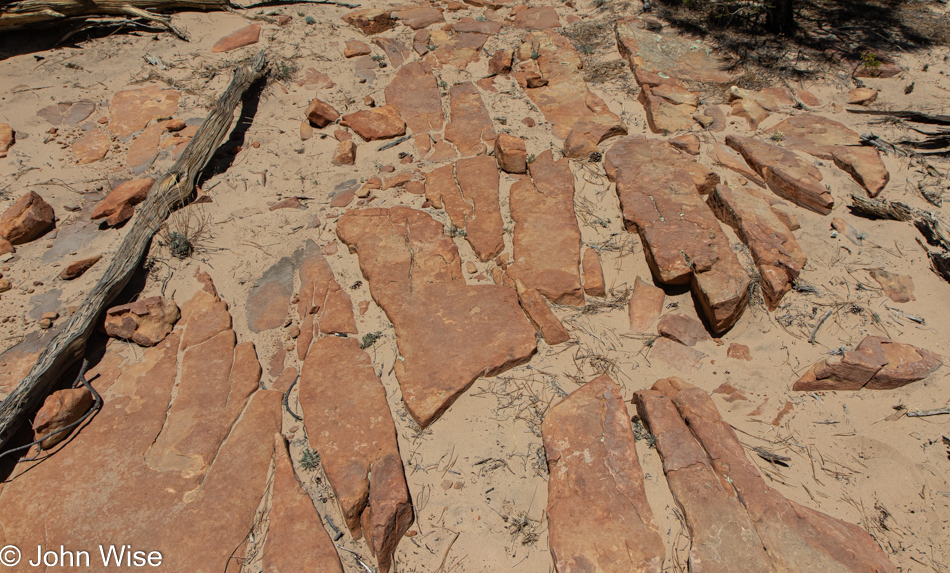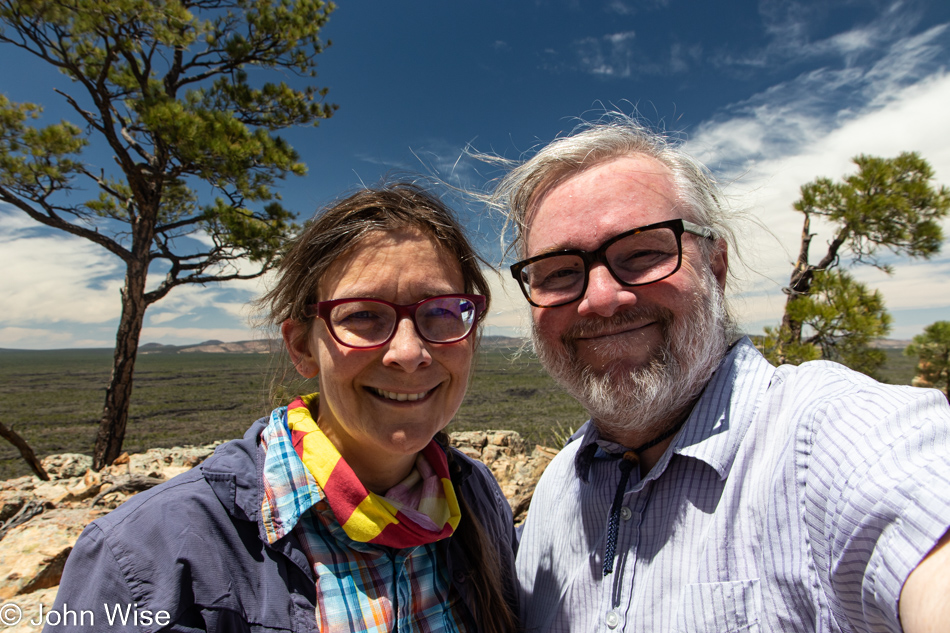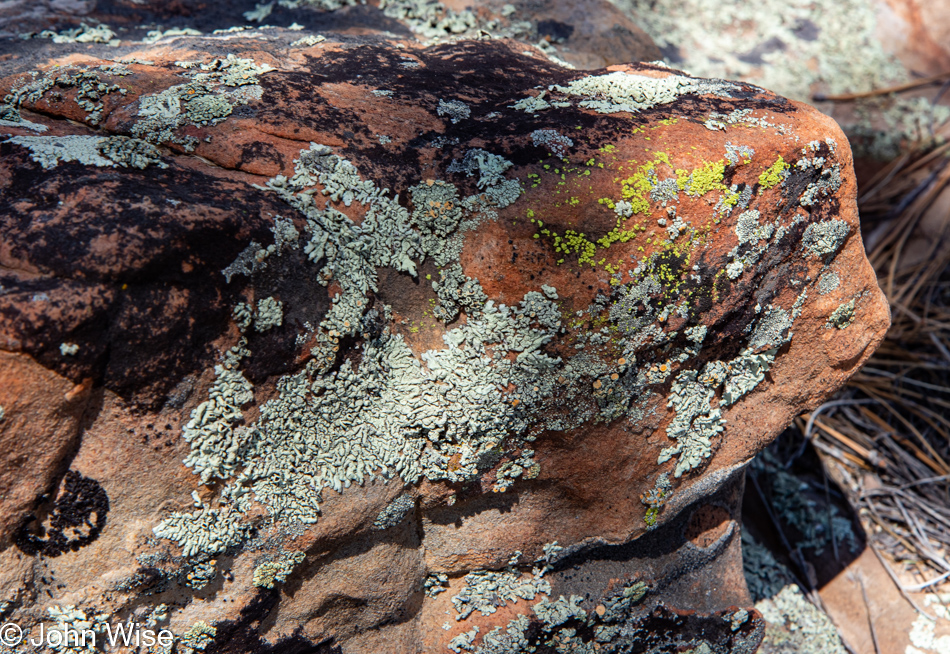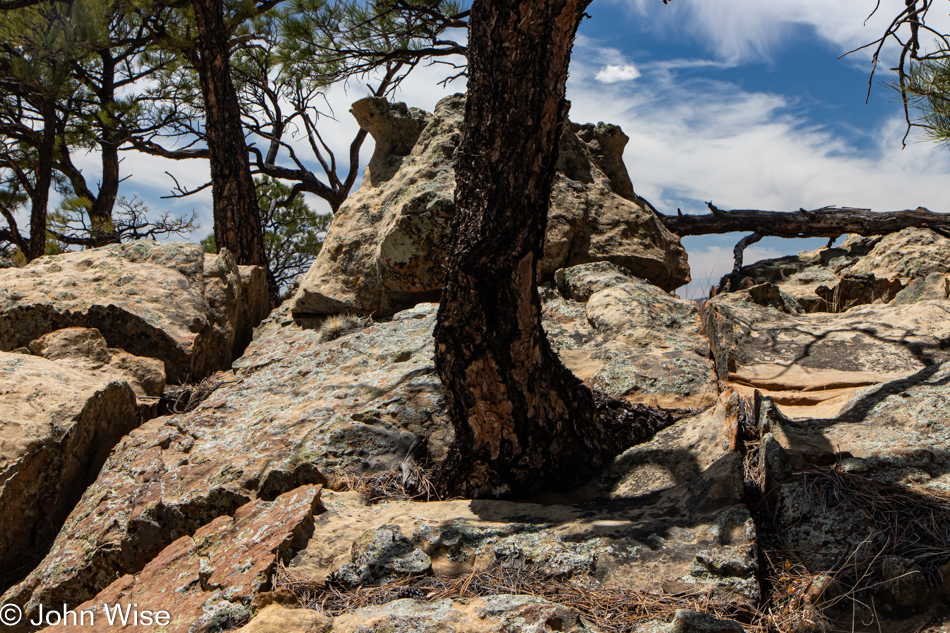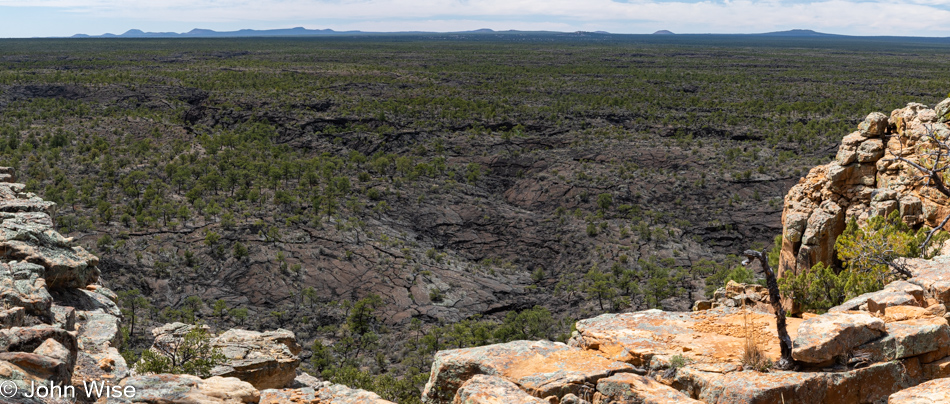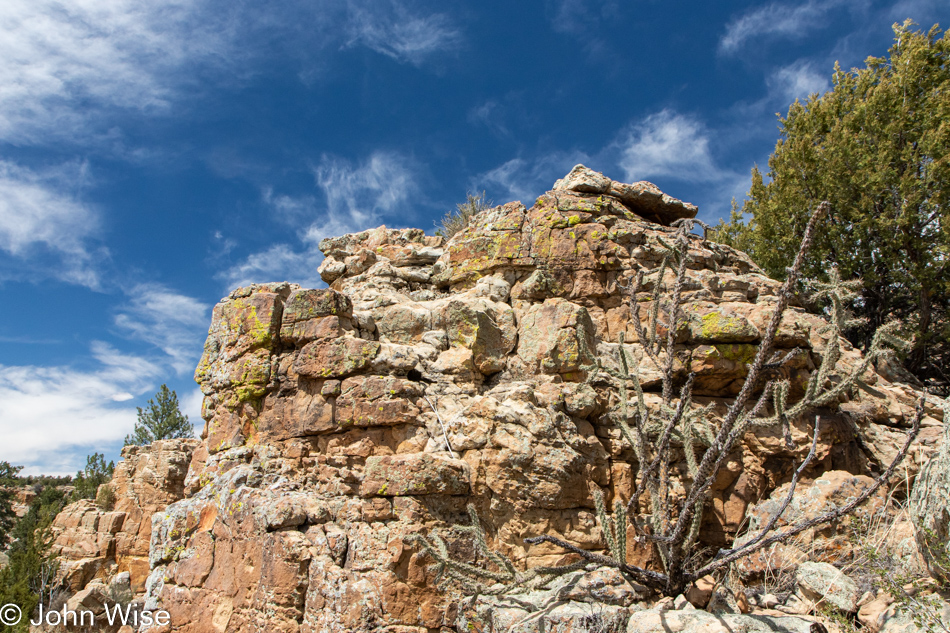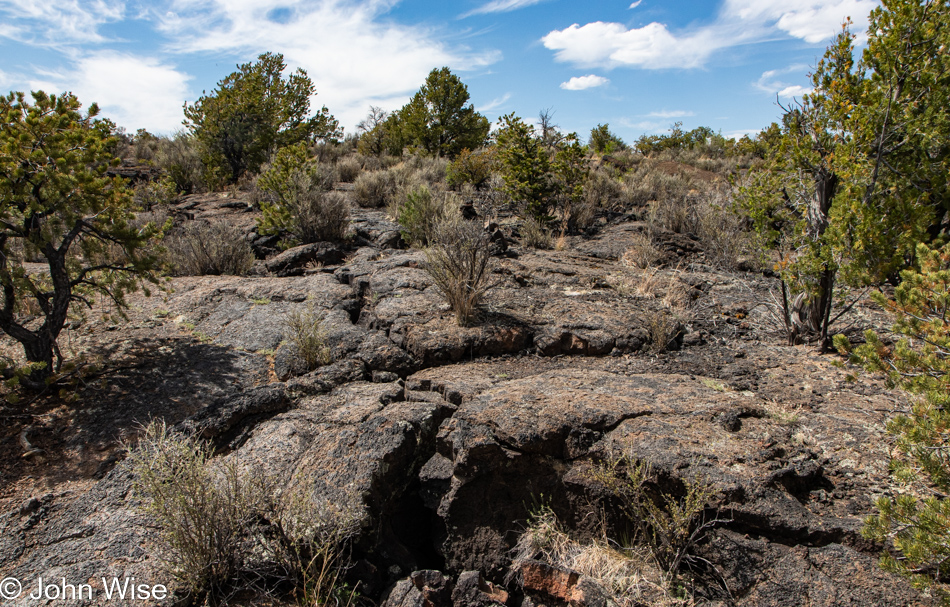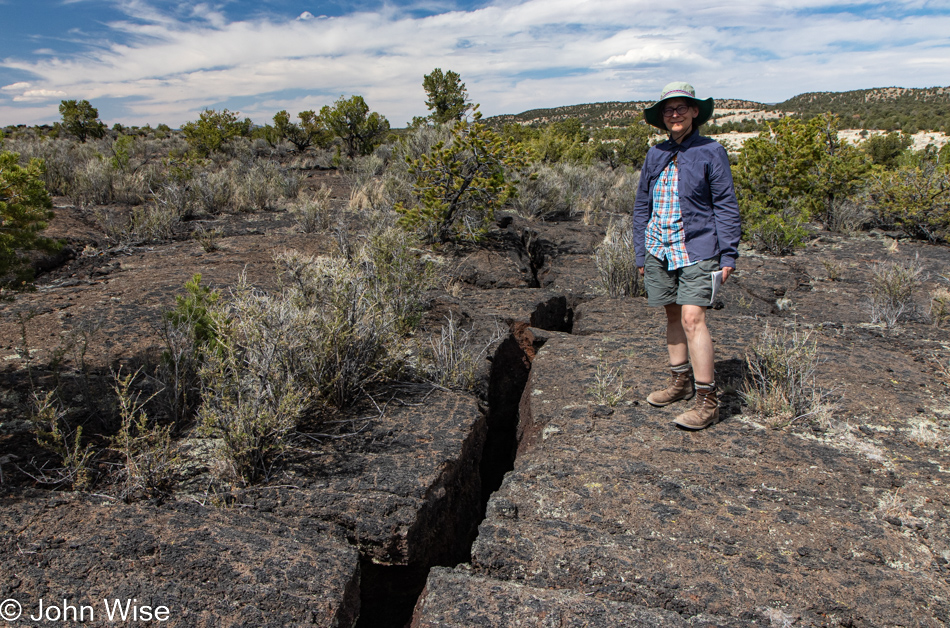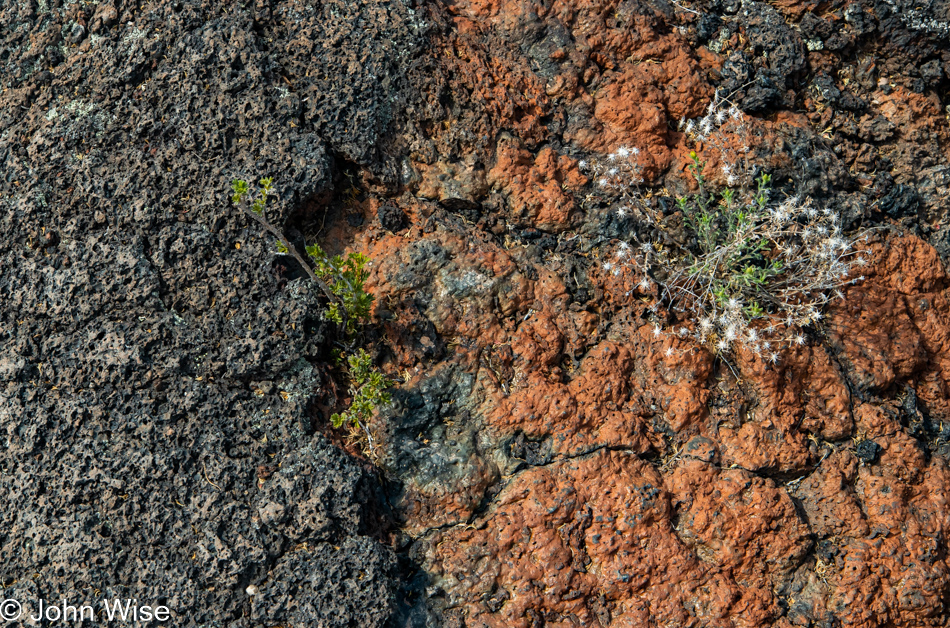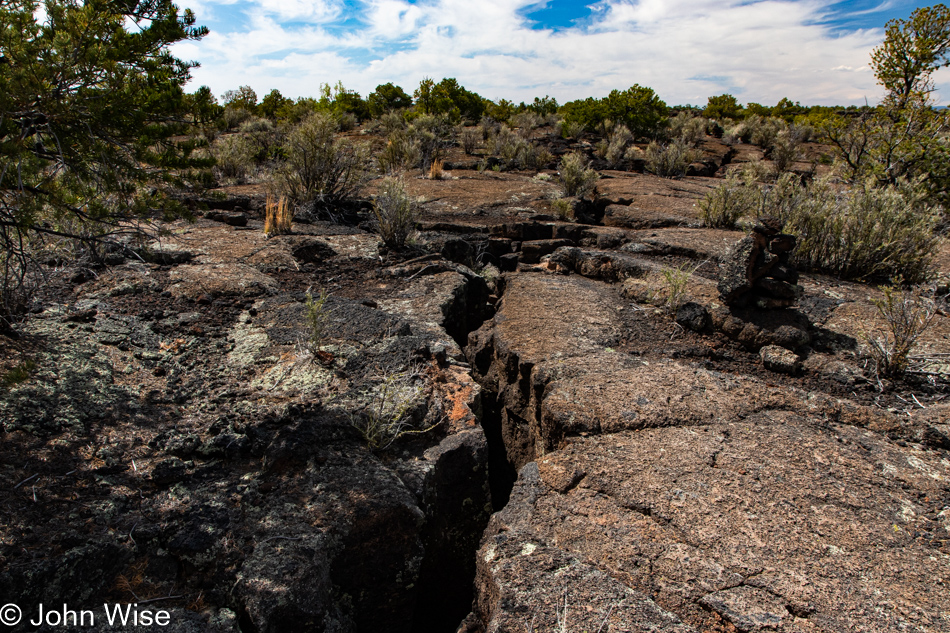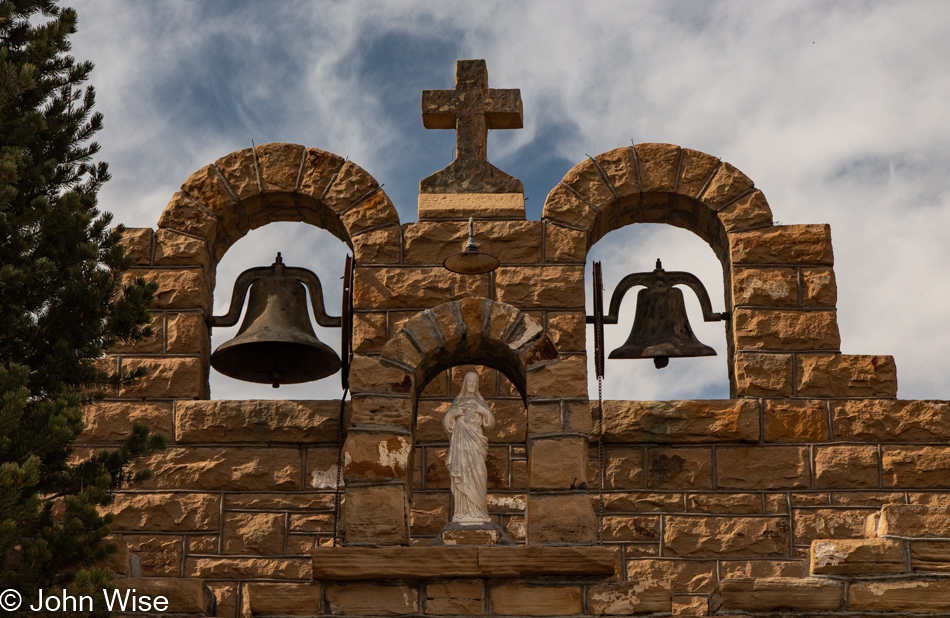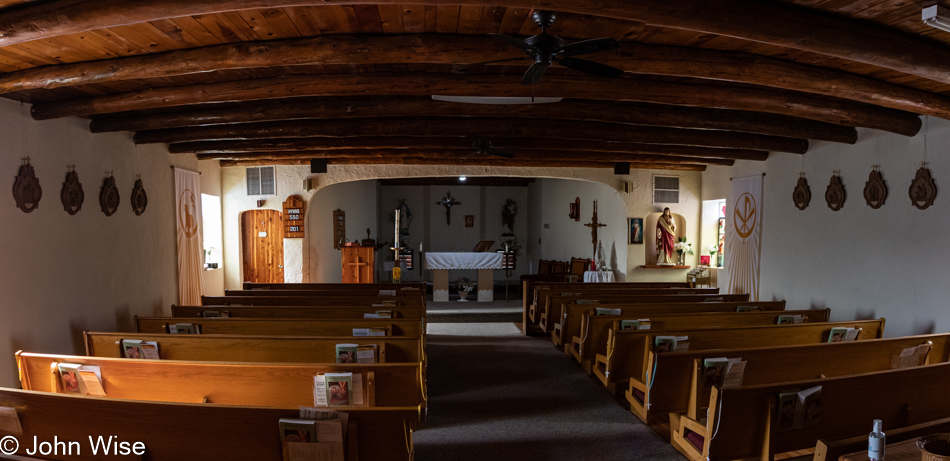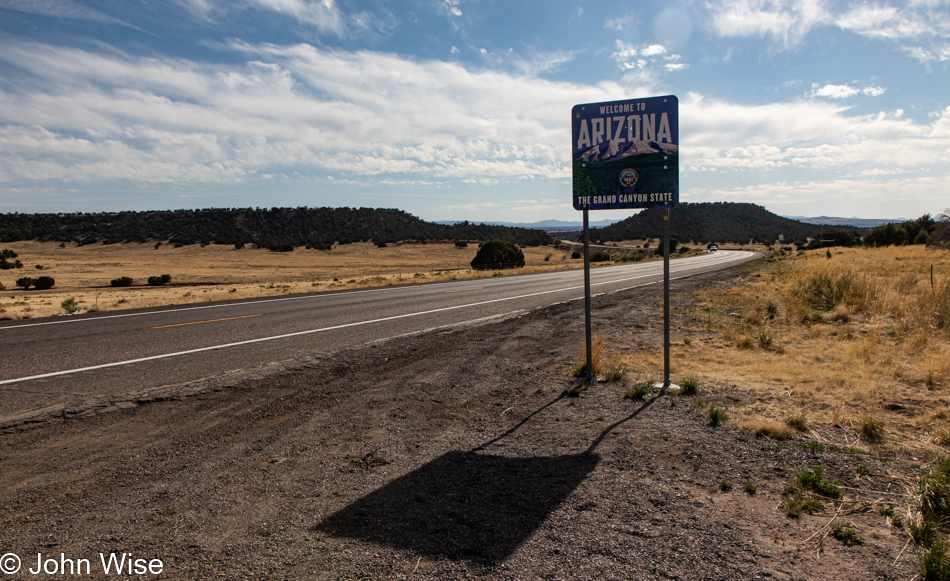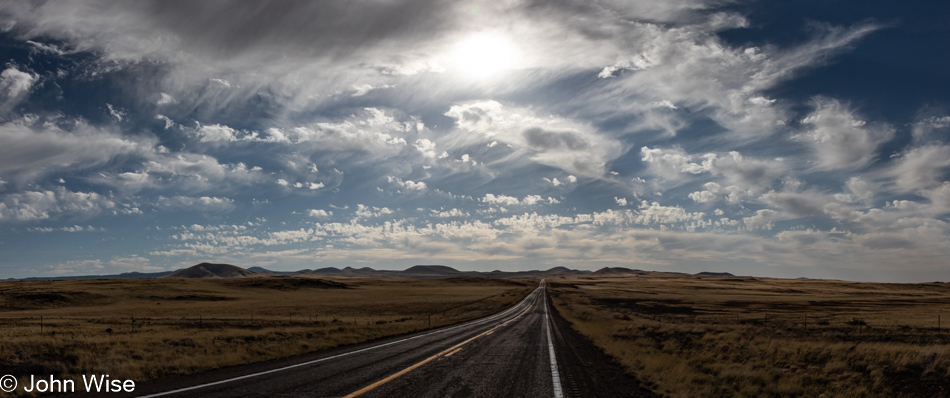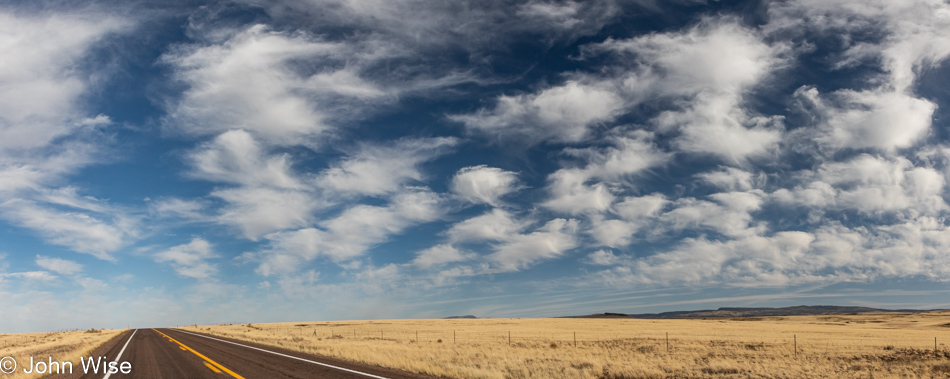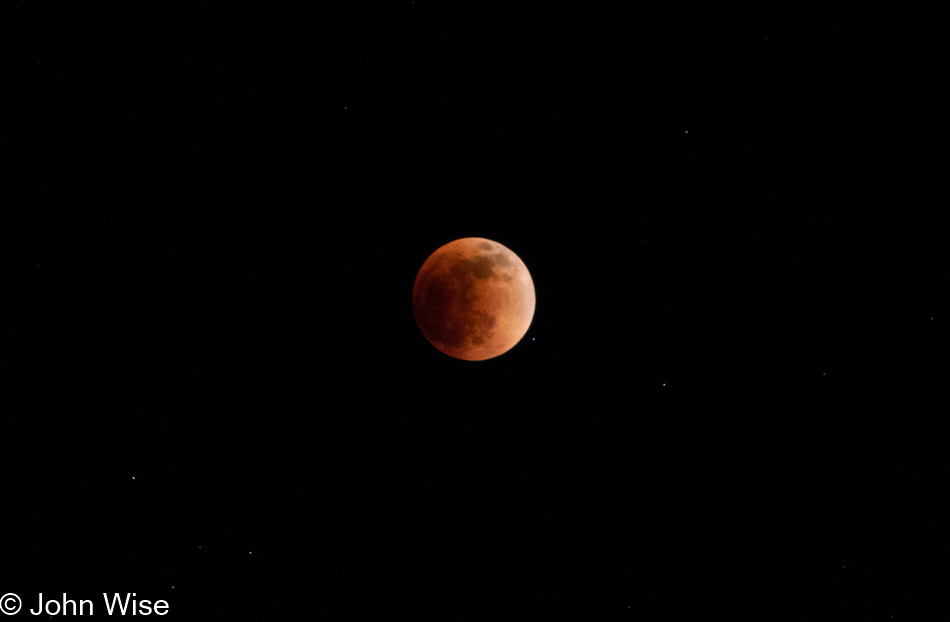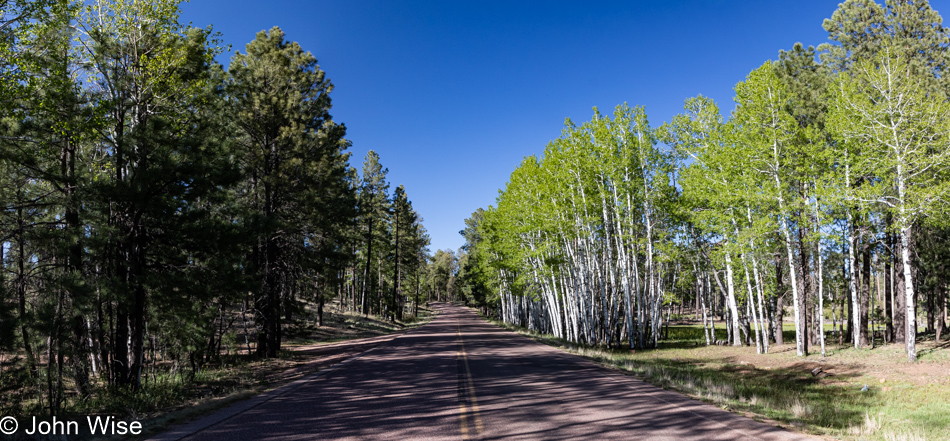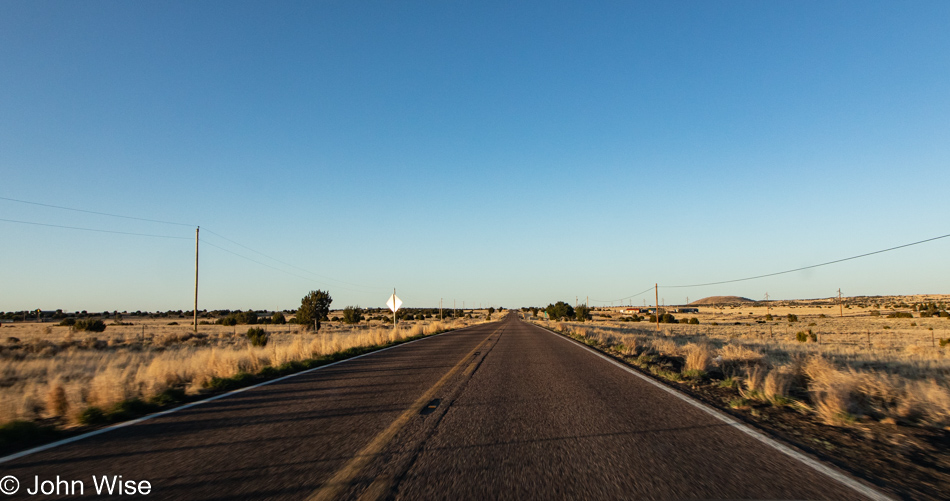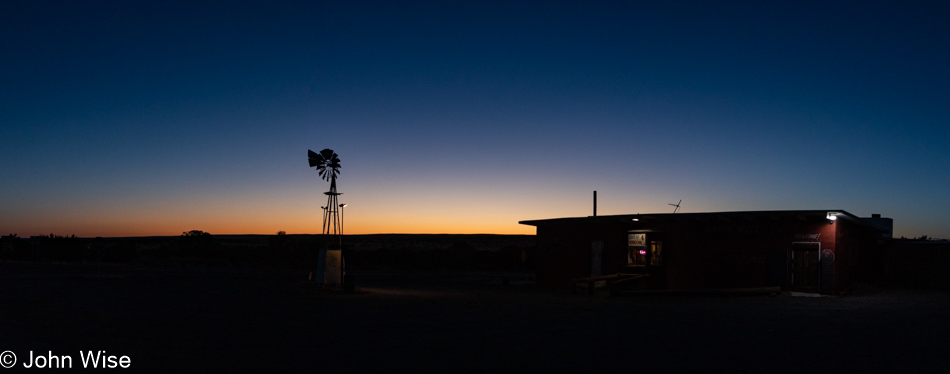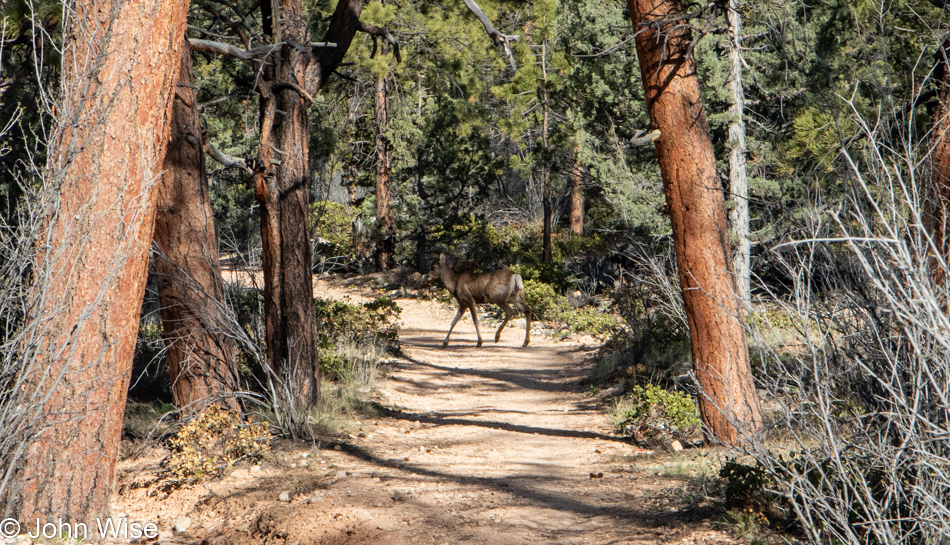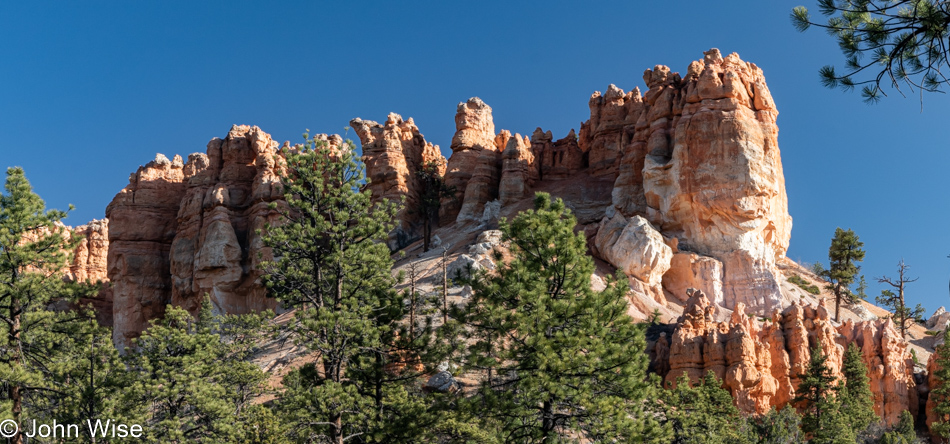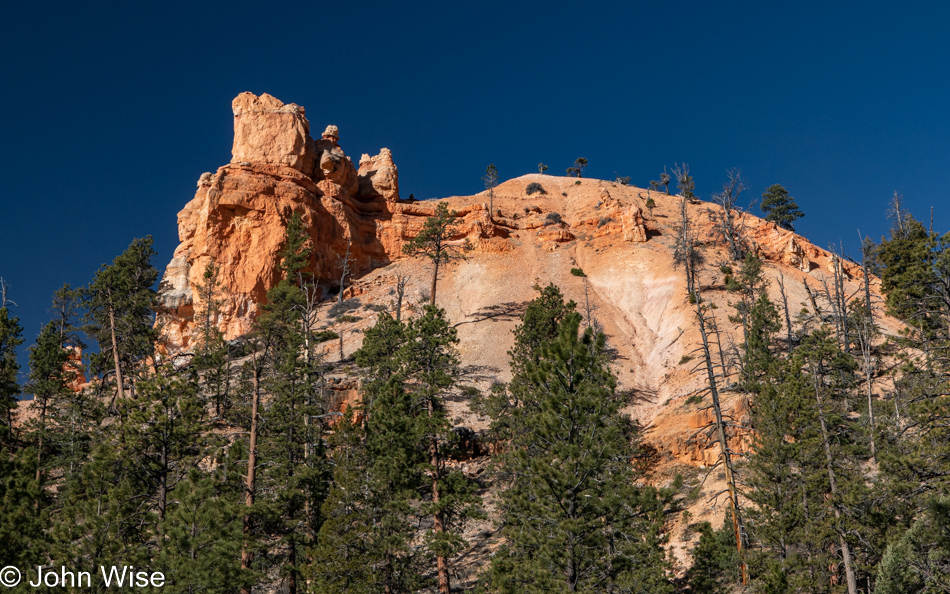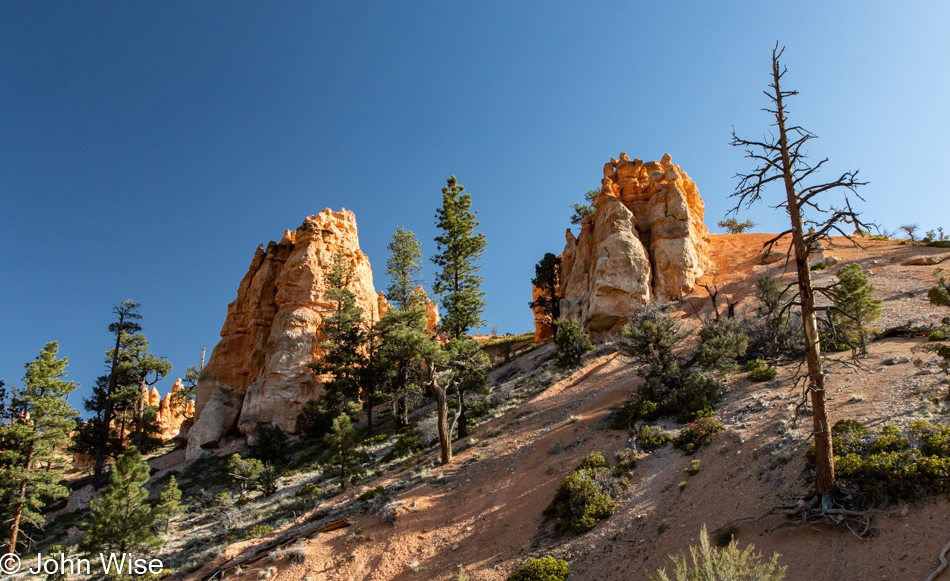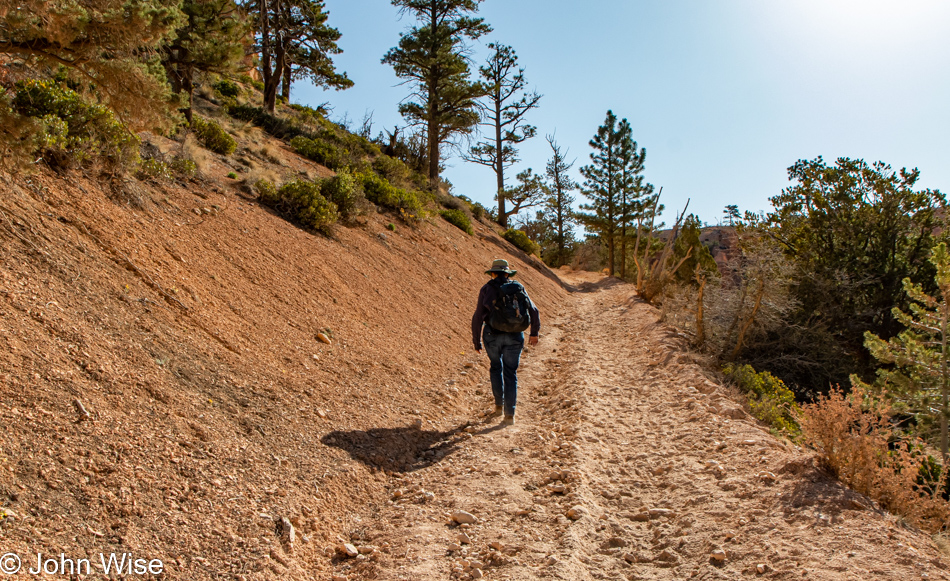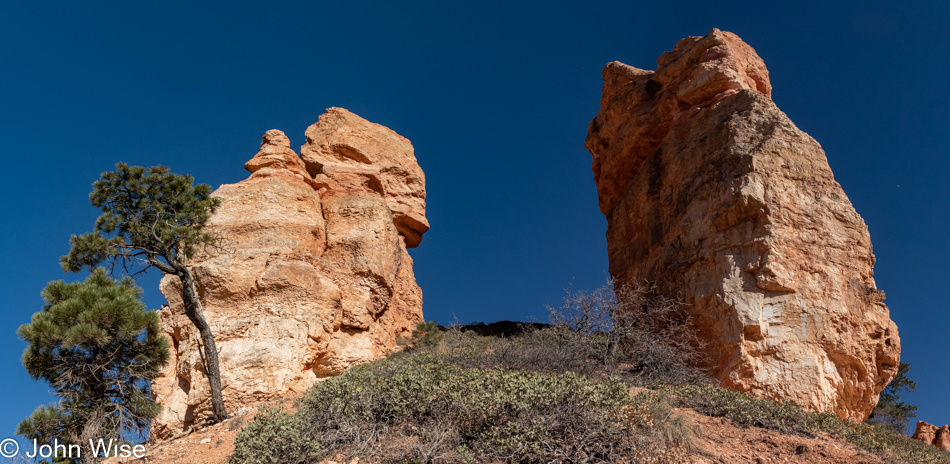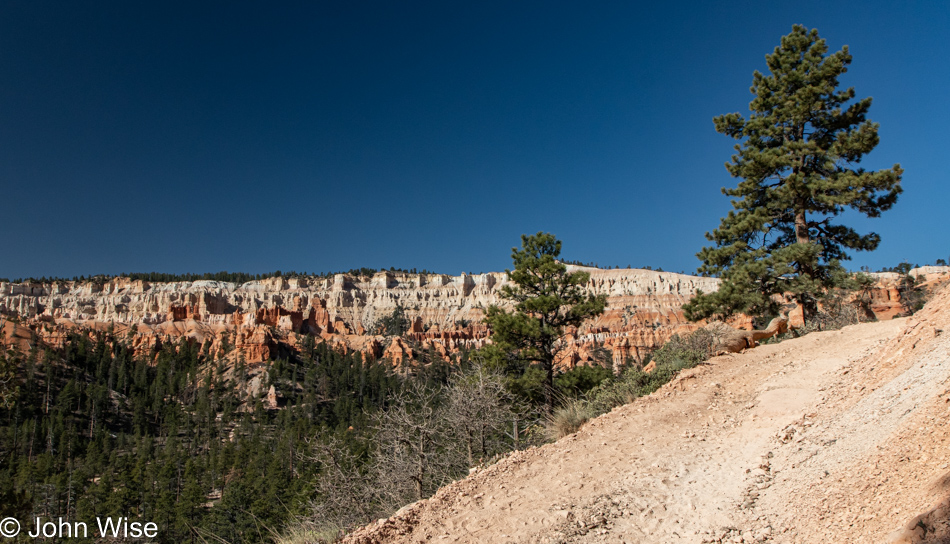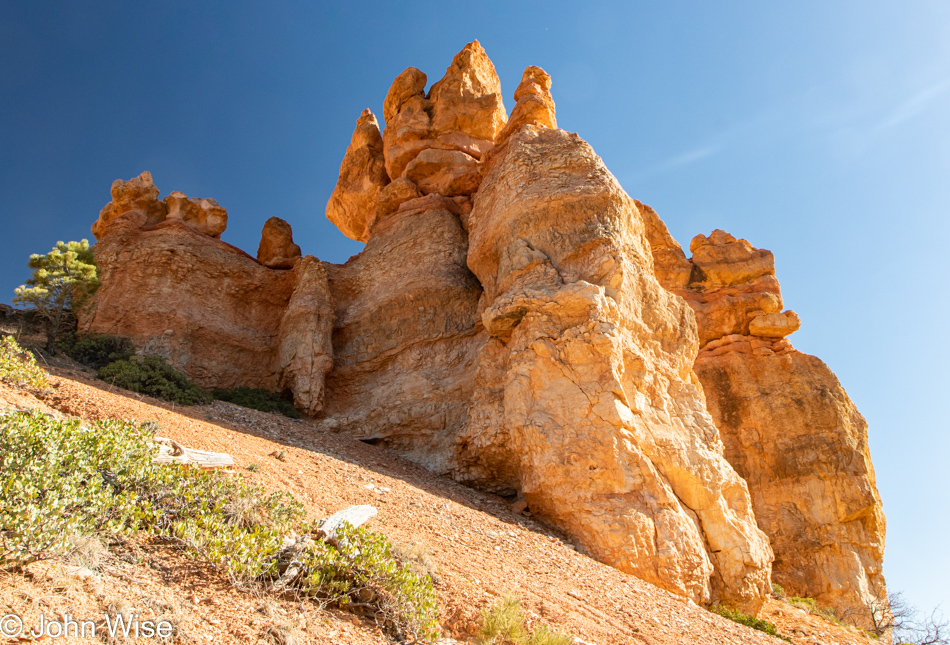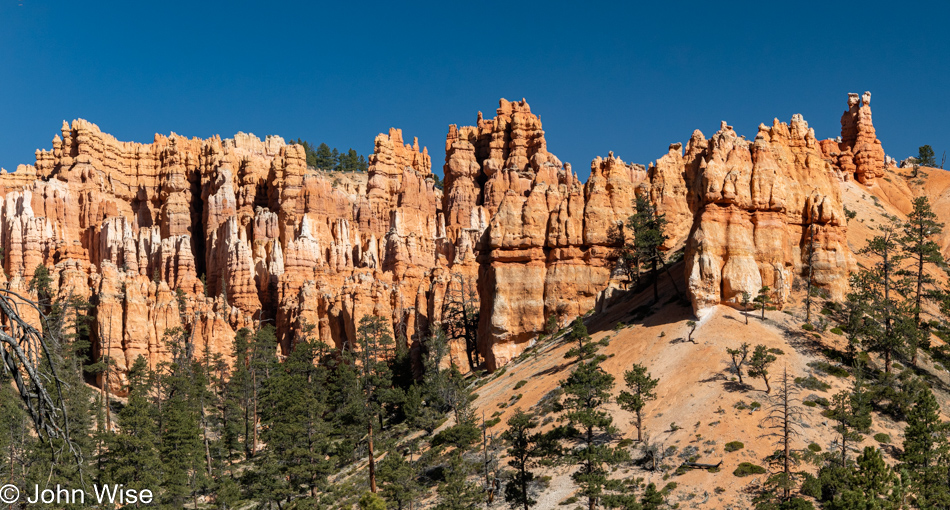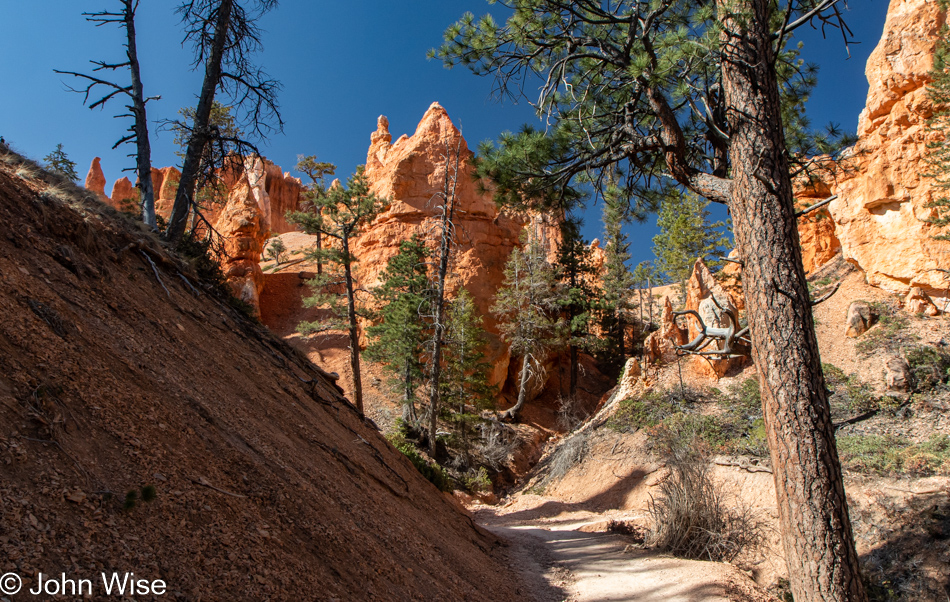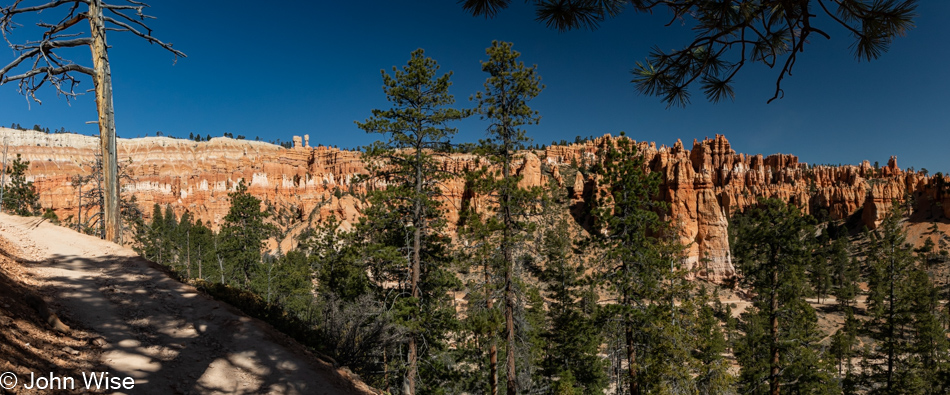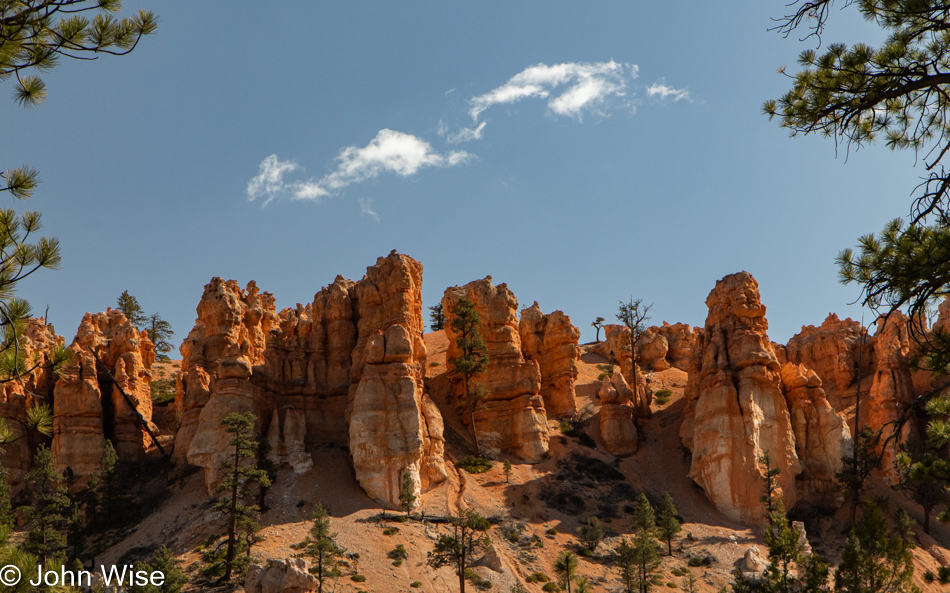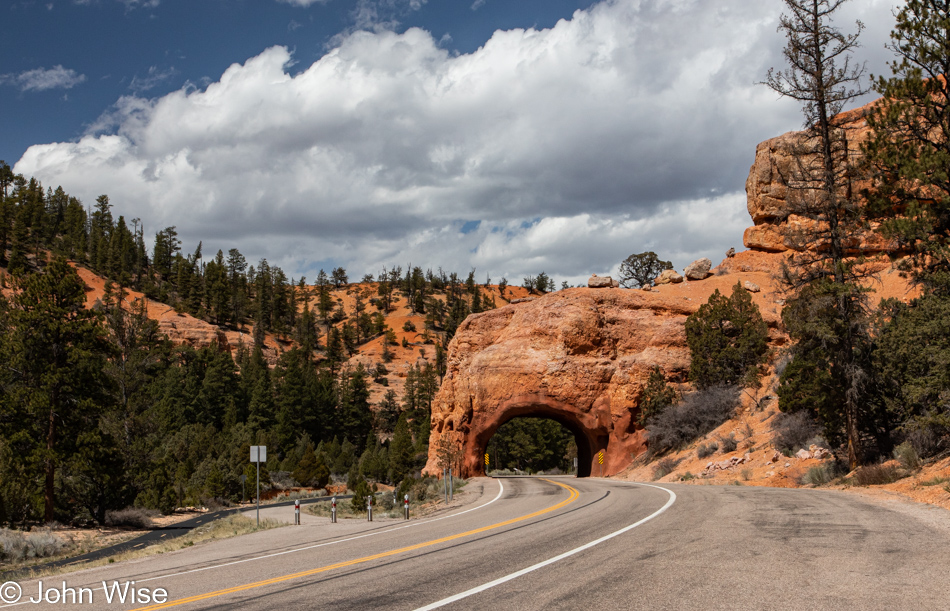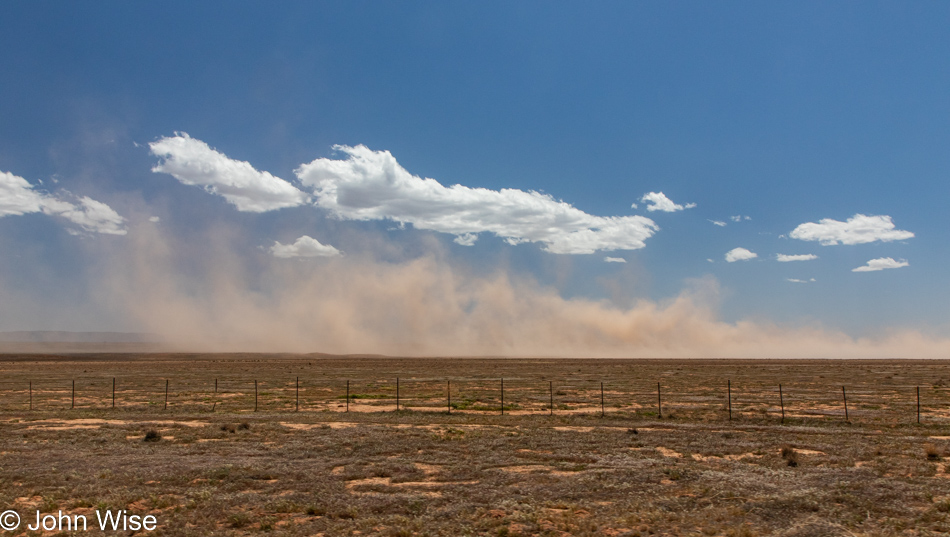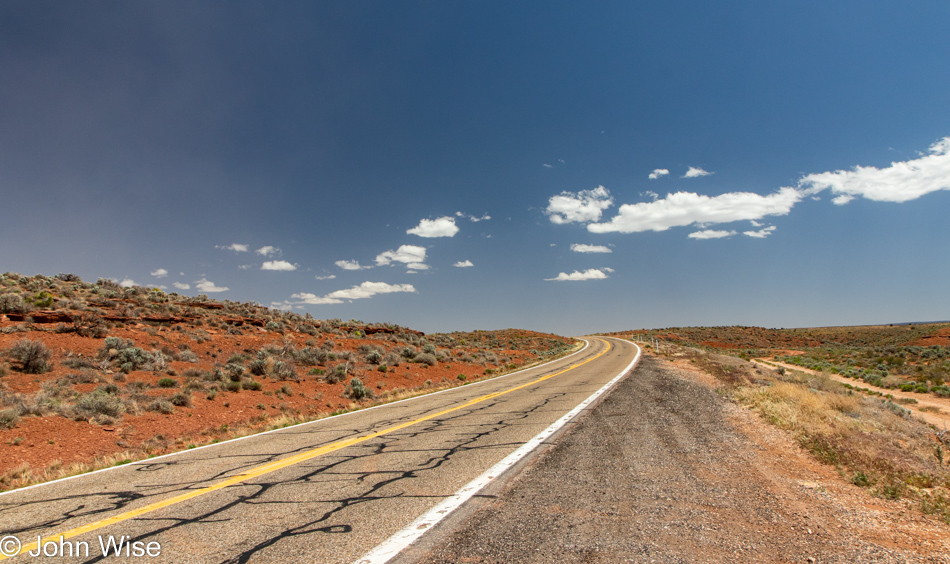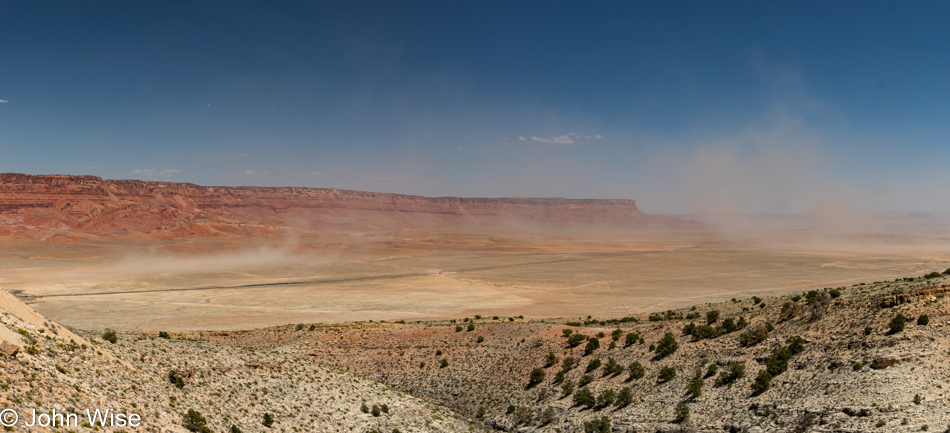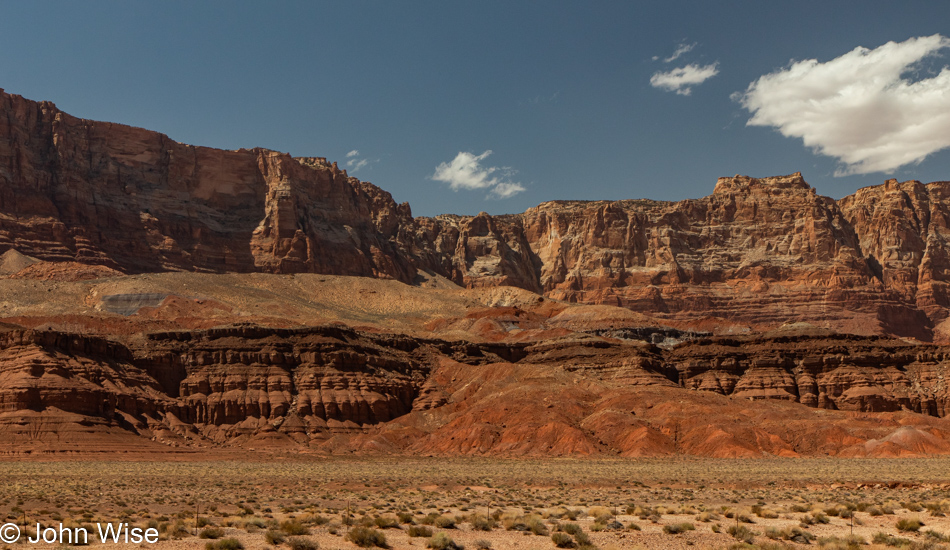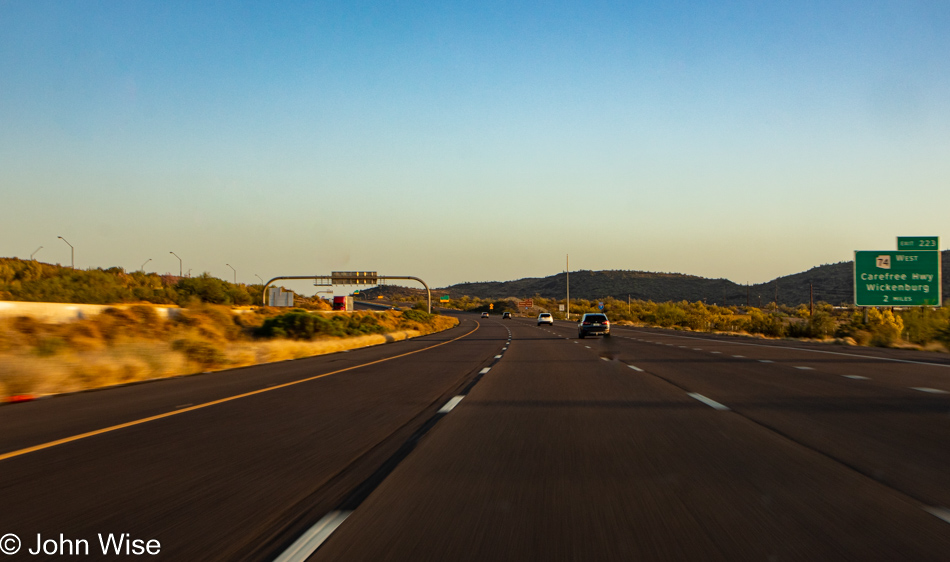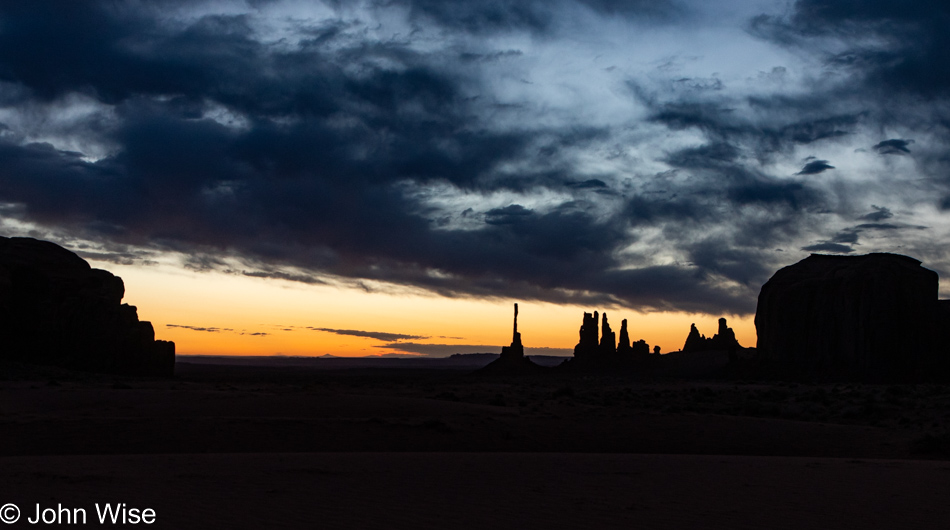
We were up before 5:30 and gone by 5:45. As luck would have it, we not only have the best hill in all of Monument Valley to experience the sunrise, but the sky has absolutely the right amount of clouds to deliver a level of spectacular that will help provide the most incredible photos of sunrise ever taken at this location. Then there’s that face in the clouds on the right looking down upon us that I can’t unsee. I’m studying it, trying to decipher what it wanted to share, but all I can do is look at those eyes and wonder if they are a portal through which the face with a bumpy nose in the rocks on the left is talking to the heavens, informing the universe to smile upon this day because we are here. I swear they are looking at each other, testing me if I know how to perceive my world.
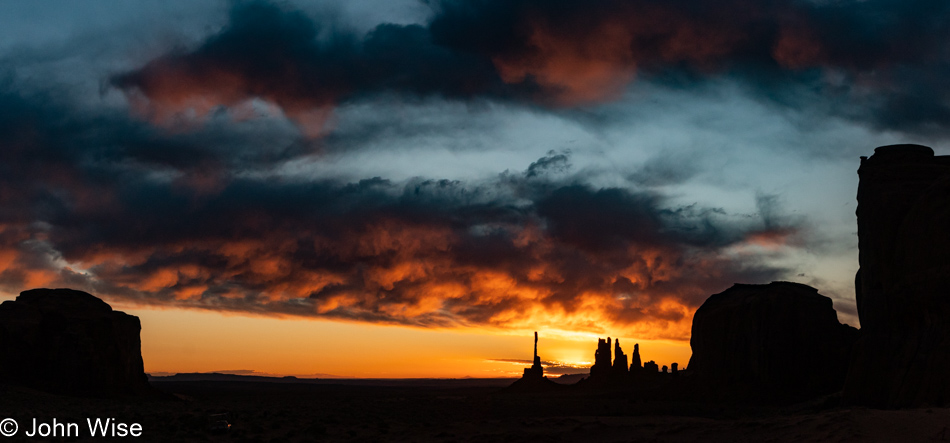
And then the faces give way, disappearing as the sky obliges their wishes to delight us down here. How about some night, day, blue, orange, red, and fire dropped into your eyeballs? Will that do, or do you need more?
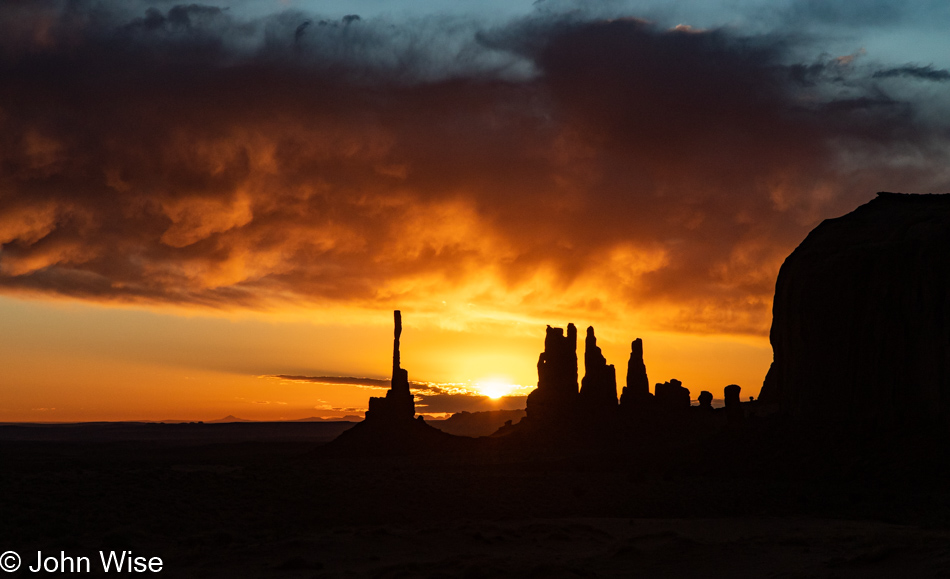
Look closely maybe everything is already here.
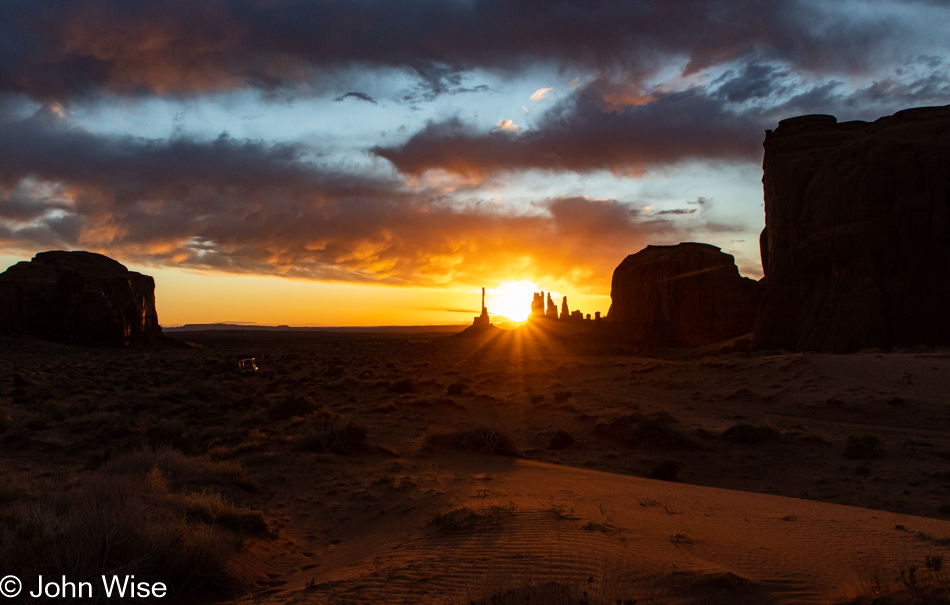
Oh, I’ve got it…here’s some white light with an intensity that will diffract off the clouds and rocks with rays that reach out to touch the sand. How’s that? Satisfied? Hmmm, something else huh? I know, turn around.
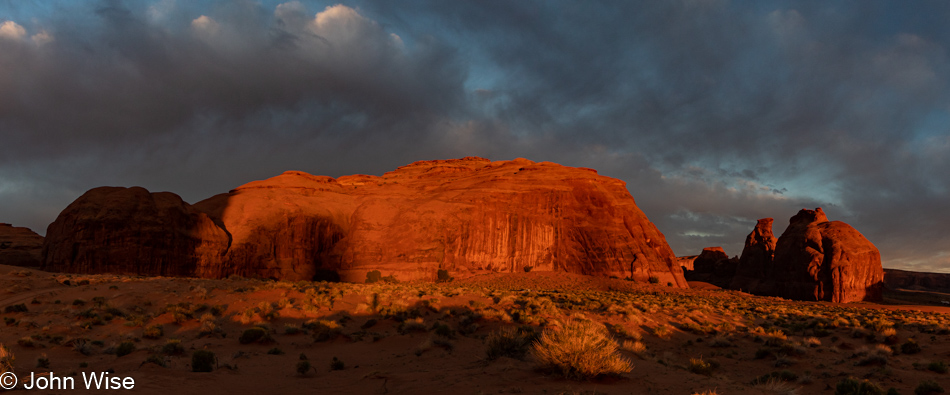
Come on now, tell me what’s being channeled; what’s your first impression? That’s right, for a split second, you thought you were looking at Uluru (formerly known as Ayers Rock on the other side of the earth for those who might know). The universe lets us know that quantum projection is one of its tricks if the mind is ready for phenomena that defy belief, but there it is. Maybe magic isn’t real, but then again, if the imagination is able to find a playground of knowledge that juxtaposes words and images at just the right moment when we are unchained from some small part of our critical mind, we can bask in the wizardry of allowing ourselves to be tricked. Now go forward and turn around.
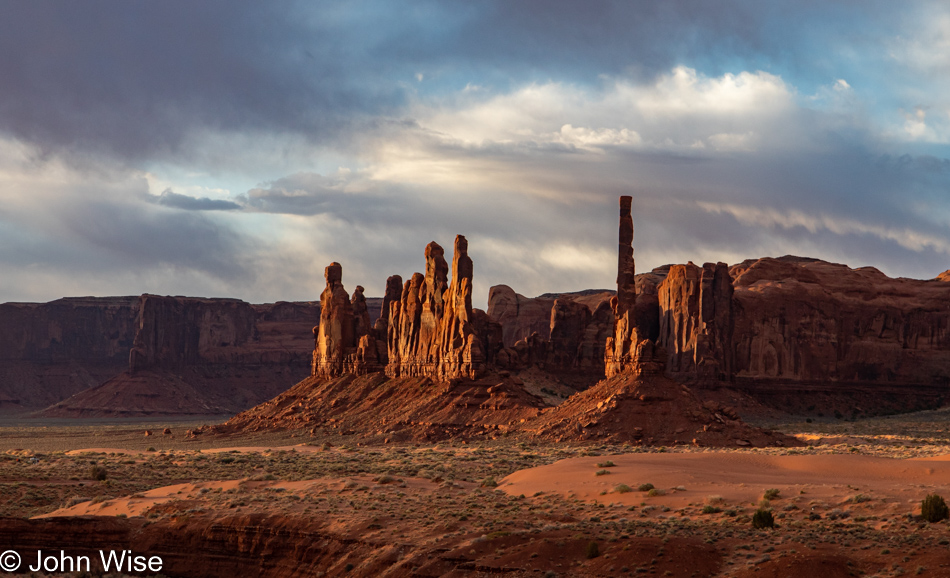
Two-hundred-sixty million years ago, the sand that would become the basis for the spires, buttes, and mesas of Monument Valley was deposited. De Chelly and Wingate sandstones are the names given to these petrified remnants, and that’s what we are looking at here at this incredible site. On the right, the spire standing alone is known as the Totem Pole; it is the remains of a butte around which everything else was eroded. How many other spires in the previous millions of years have come and gone, and how long will it be after this one collapses before something similar is ever seen again?
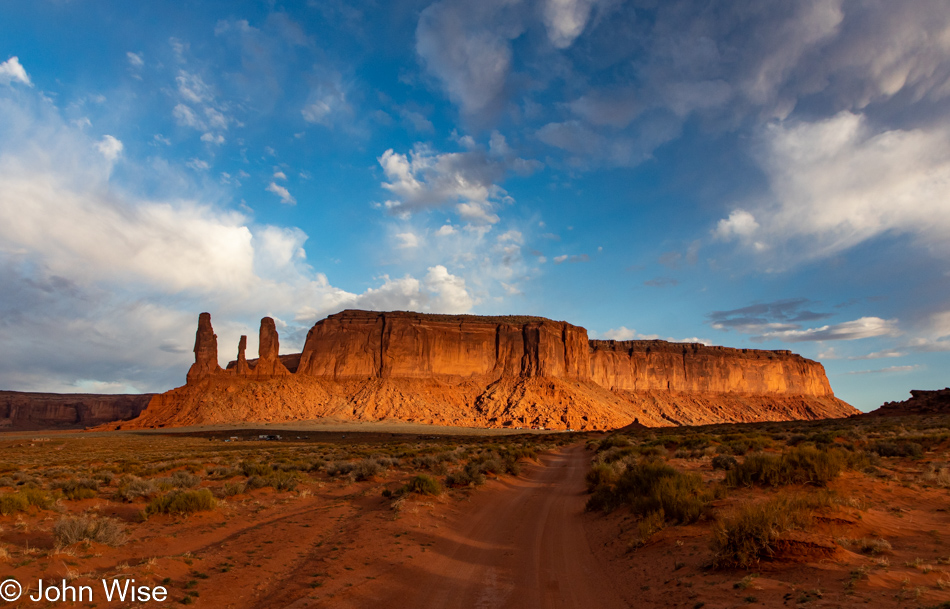
While others are heading in, we are heading out. Another adventure awaits.
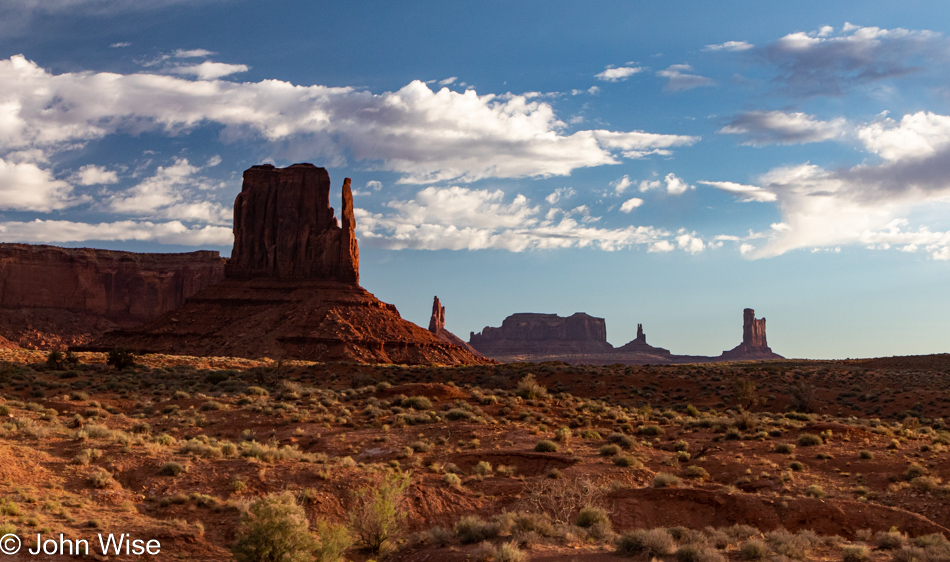
Not so fast but that doesn’t slow down Cody and his race to the exit for a hot meal. Our guide, as a condition of us staying overnight in the park, must stay nearby the entire time, as in the truck he brought us to the hogan with. For a short moment, he’ll disappear up the road for breakfast with his family in the warmth of his home. And besides, we passed all these places on our way in yesterday. Sure, but the air was choked on heavy dust that obscured the blue skies with haze, and while I’ve photographed it all before, I can never get enough of how beautiful it all looks to me every time I’m fortunate enough to be in Monument Valley yet again. So, from the crisp cold air in the back of the truck, I snap away, hoping a photo here and there won’t be too blurry from all the bouncing we’re doing down the well-worn dirt road.
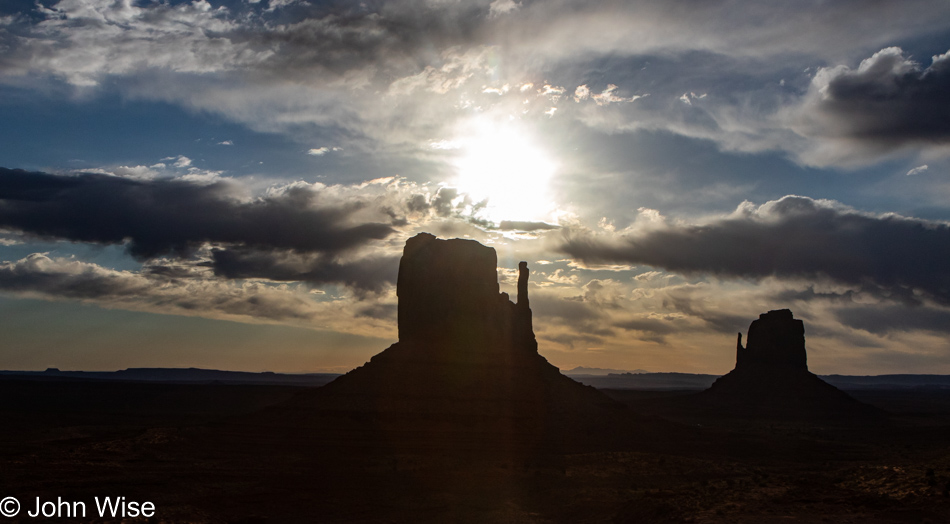
At the facilities of the View Hotel, yep, this is the view; we dipped into the restaurant and, mistaken for guests, were allowed to grab a couple of cups of coffee. This coffee was as necessary as capturing this image of the Mittens silhouetted in the rising sun on this promising day. I told you that Earth and Sky worked out a deal to offer the most impressive views of Monument Valley ever witnessed. Just wait until you see what comes next.
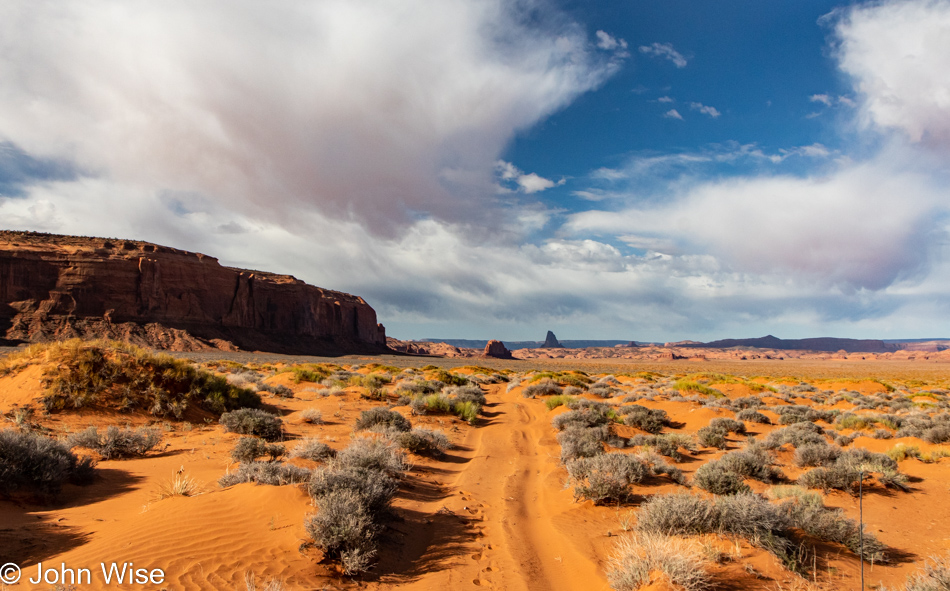
Buttes, mesas, and red sand, but it’s not exactly Monument Valley, though it is on the edge of it. It’s something else somewhere else, and that little strip without scrub brush or small bushes is our road to this place. We are visiting Mystery Valley.
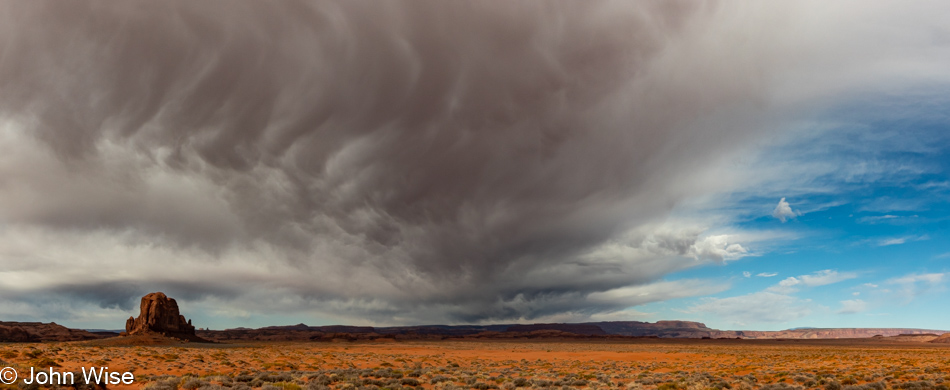
Or are we? Are those rain clouds starting to build up? Our guide wishes they were carrying rain as, according to him, it’s been too long since these parts have seen a good soaking. As a matter of fact, he says he’s not alone in his opinion that people up here are tired of all the wind and blowing sand. Come deep sand or a flood; we are not turning around as we are on an adventure to see things we’ve never seen before.
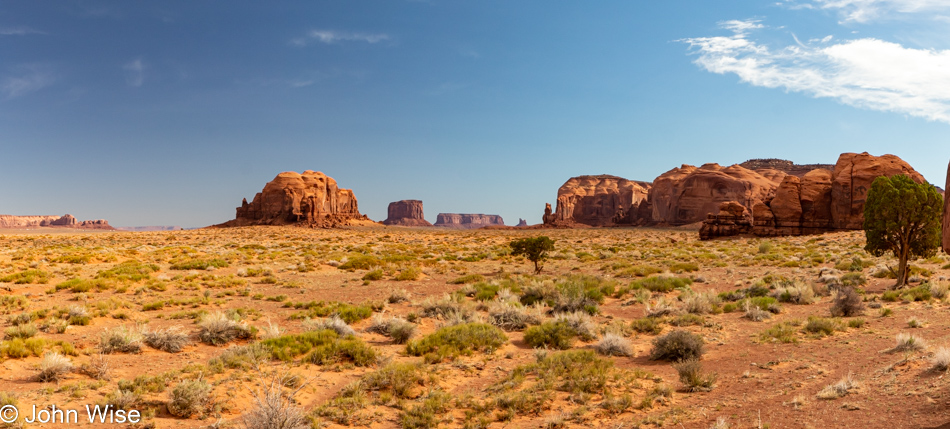
Thirty minutes earlier, as we rounded that bright orange butte left of center, Cody told us to take a good look at it because by the time we are done today, “You’ll have to look hard to find it.”
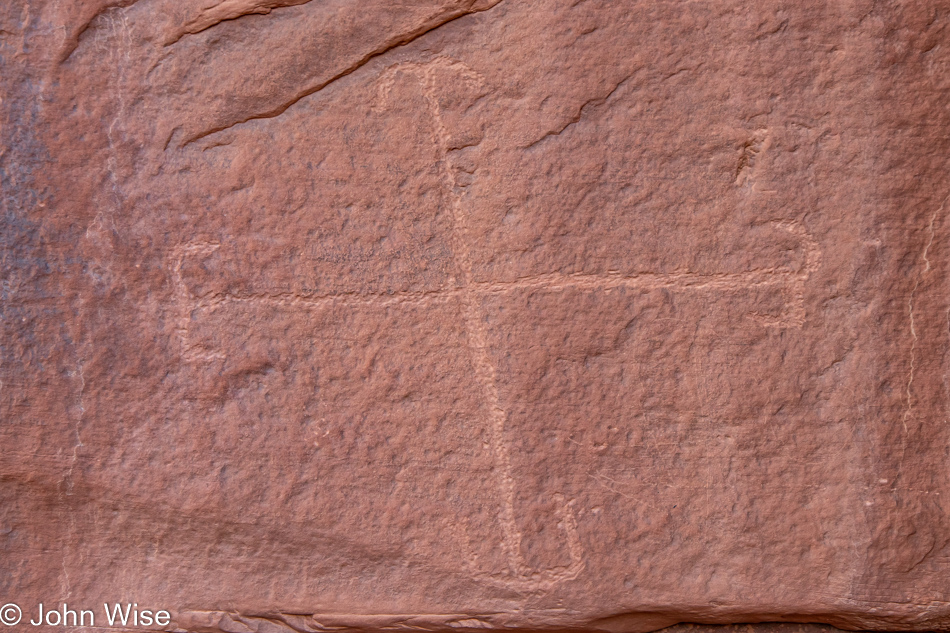
And so begins an interesting strategy in tour guidance; Cody stops for us to exit the truck and then informs us that we’ll be walking from this point. He’ll meet us around the corner, “Don’t worry, you’ll easily see where I park the truck.” We get walking, but I see it as a challenge as maybe we are supposed to find something, and he’s wondering how observant we are. The first thing I find is a small panel of a few petroglyphs with this one the most intriguing to my eyes. I have no idea what this could have meant other than the obvious regarding the four directions. A search for similar images offered no clues, so I looked into my theory about nursery rhymes I discussed in my previous post but came up flat there, too. When we reached Cody, I asked about the petroglyphs, and he informed me that there were none in this area; either he didn’t know these, or they were not supposed to be seen by outsiders due to their cultural significance. I’m going with the more intriguing explanation that these are secret symbols that offer clues about the mechanics of the world among the Diné (Navajo).
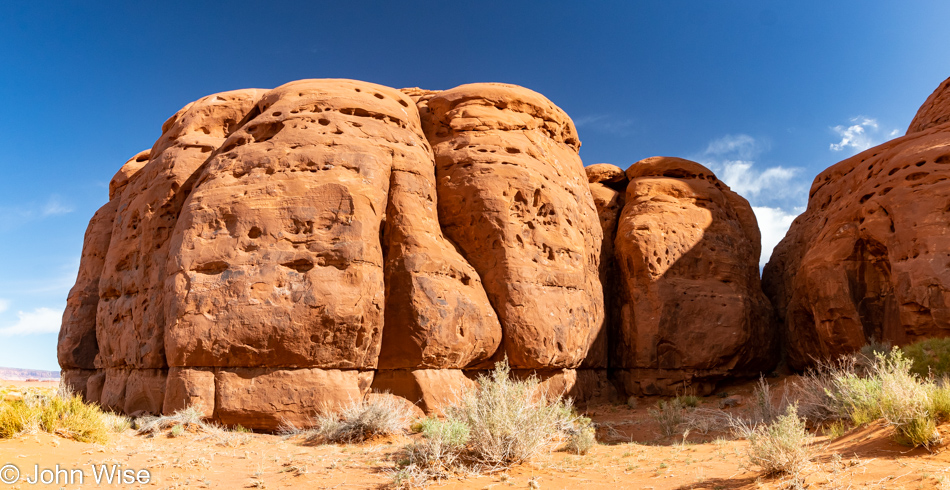
I not only closely examine the detail along this walk but I also have to step back as I just know we’ll be tested on what we found when we reach Cody. From this rock, I easily see a hidden Morse code message recorded in the dots and lines that spell out Ayoó án ín shí in Navajo.
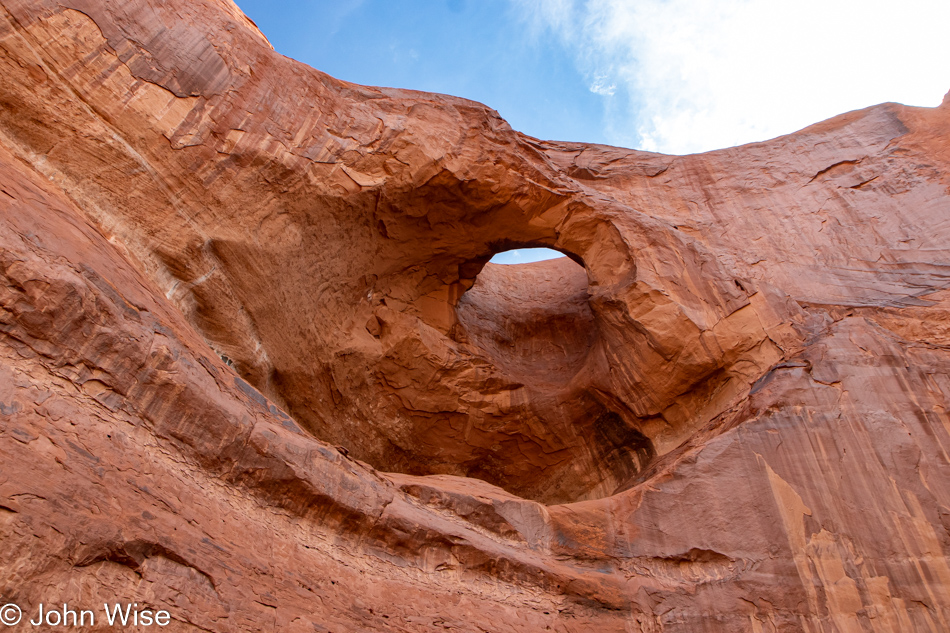
While I was able to identify the names of the various holes over in Monument Valley, this will remain a mystery which seems appropriate considering that we are in Mystery Valley. I’m already starting to understand the naming of this place we have only begun to explore.
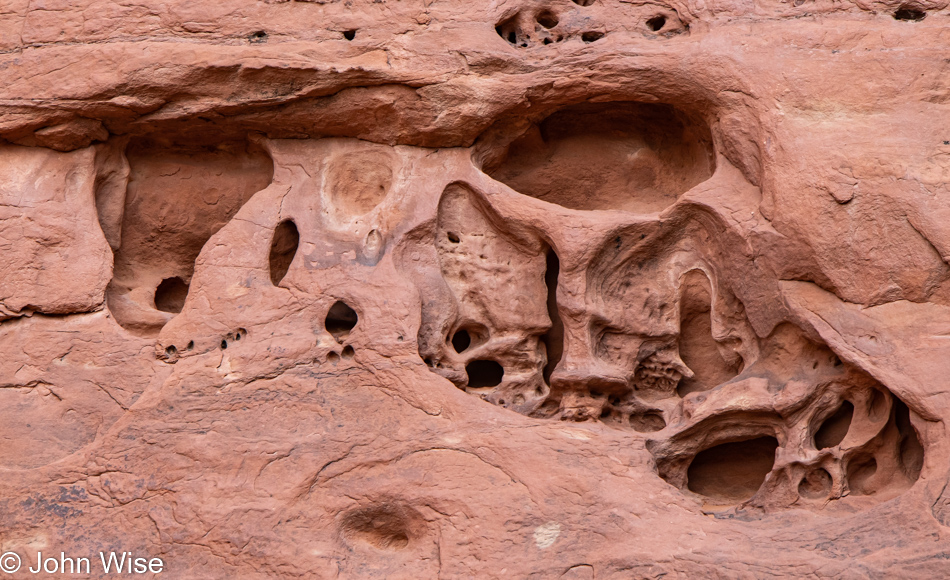
I fully understand that this next description will likely be met with a healthy amount of incredulity, but the truth, as it is, which has been pulled from the depths of the fantastic, goes something like this. This cavity is effectively a kind of MRI cross-section of the progenitor of an alien species that has since left this world. The petroglyph, along with the hidden Morse code in the rock, are the clues needed to decipher the mystery, while the hole in the rock points to the place in the sky where this race of beings took up residence. Please try to follow what I came to understand about what precisely we are looking at. This was a dual-brained creature with the limbic system housed in the rear part of the skull on the left while the cerebrum was found in the top cavity right-of-center. Below the cerebrum are the mouth and nasal passage. I should point out that this profile view has the creature looking to the right. This being was sightless, instead relying on the inheritance from sharks in the form of the Ampullae of Lorenzini in the lower jaw, bottom right structure.
I, too, am incredulous that this kind of information has been shared with me, but as I was informed, it doesn’t matter, as nobody of any real importance reads the crap I share here anyway.
Edit: I’ve since been informed that above the front brain, partially cut off in my photo, was the other part of the Ampullae of Lorenzini that allowed the electro-sensitive cells a vector-like operational capacity so the conducting positively charged hydrogen atoms (protons) were able to produce multi-dimensional images seeing not only the physical space before them but able to slice into time and quantum-realms to read in all directions.
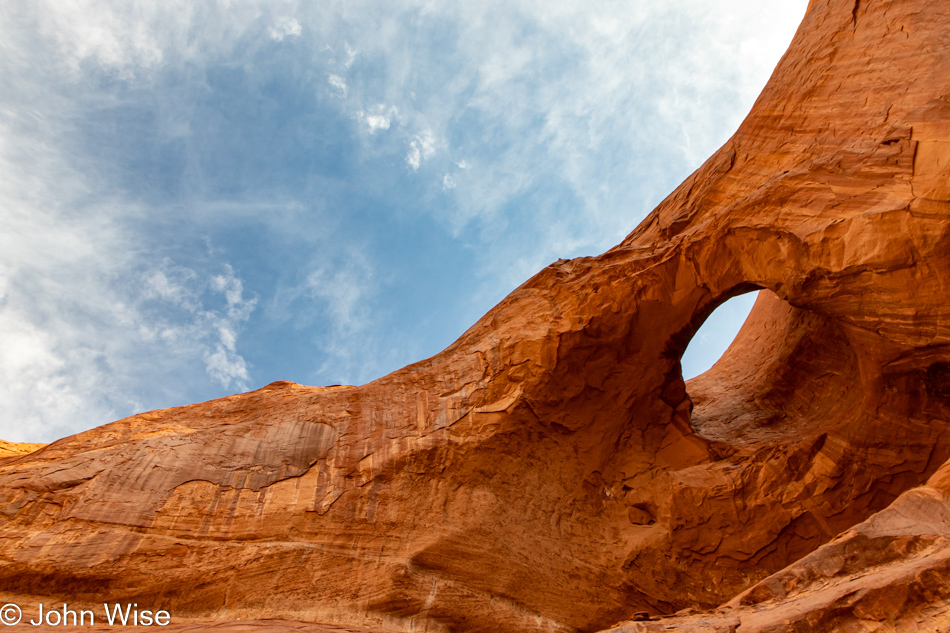
So, how in the world do I continue to make this post compelling after dropping such a bombshell? I’ll just come up with even more far-out nonsense, that’s how. Or maybe I don’t.
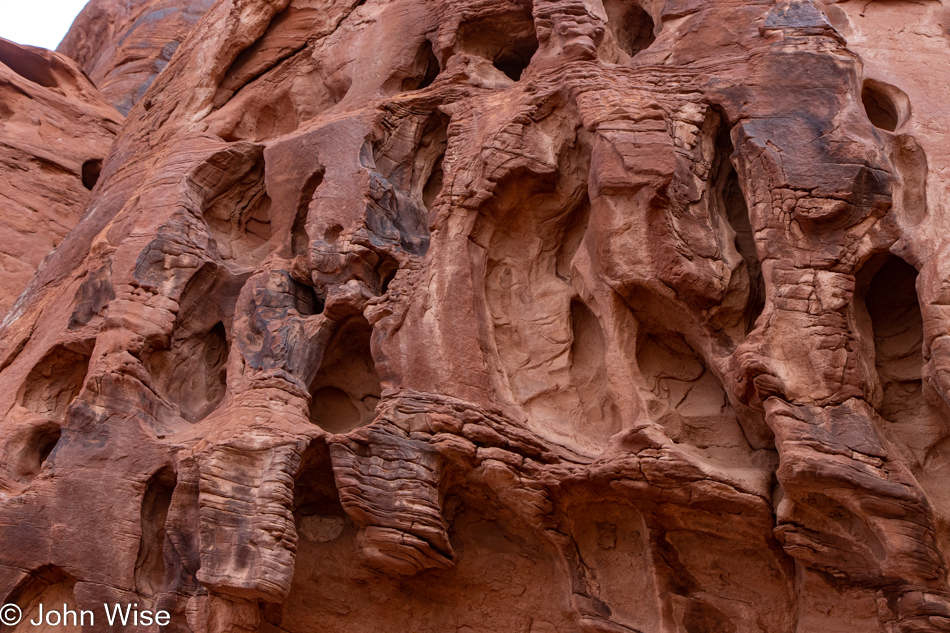
So, I have a basic understanding of this aspect of geology that softer rocks erode faster than harder ones, but I admit I have a difficult time getting my head around these formations. With this bit of knowledge, I can only figure that when this sandstone was settling, there were other things filling the area where these pockets are, but what could that have been?
Oops, I could have removed the previous paragraph and appeared smarter than I am but I’m leaving it here. After typing the question mark, I did what any half-aware human should do: go to your favorite search engine and enter, “How do pockets form in sandstone.” I ended up at a kid’s website called MiniMeGeology that explains it like this, “A liquid form of a mineral such as calcite or quartz “glues” the sand grains together. The holes that are left are great places for storing water or oil.”
[After inquiring with my favorite search engine, I found out that these sandstone shapes have a name. They are called tafoni and are caused by a combination of complex processes that involve water, salt, and mechanical erosion. Caroline]
I should have stuck to making up crazy stories that might camouflage my ignorance and lend authority that I’m actually exploring style instead of having to admit to a lack of real answers.
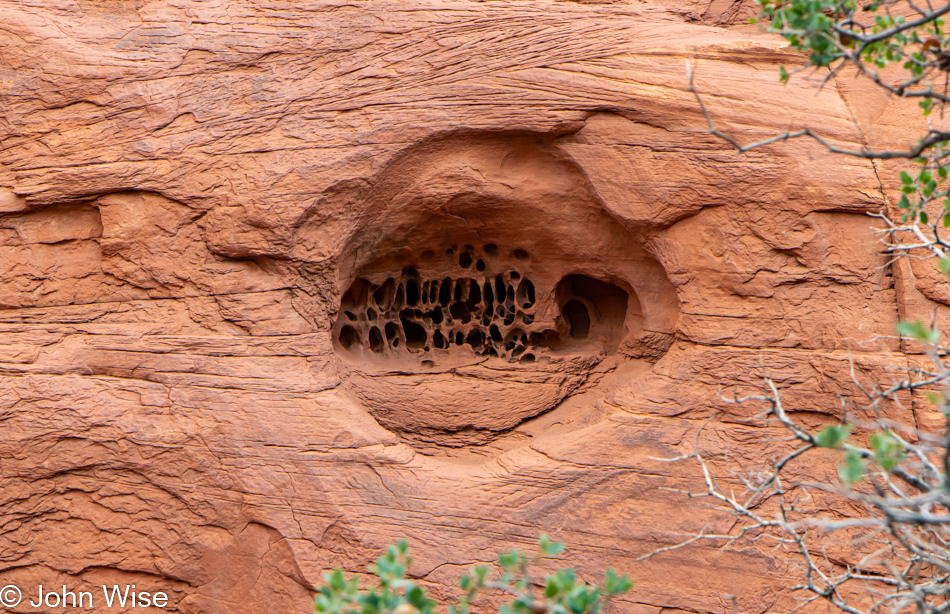
Hey, old dog, see those pockets? They were laser-etched by a race of two-brained aliens as a kind of punchcard that, once deciphered, will offer you magic powers to write beyond the mediocrity you currently are hobbled with. Now, get cracking.
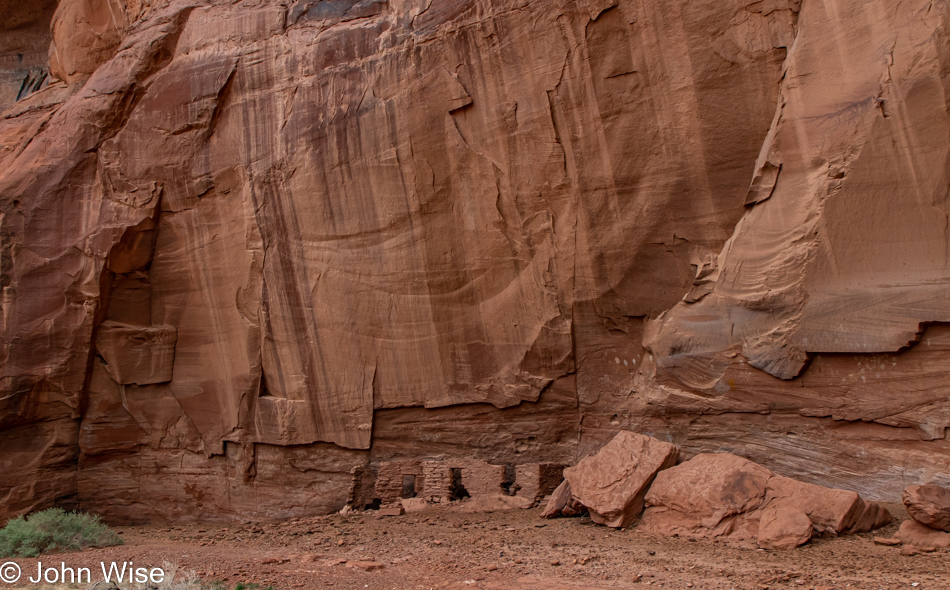
Our trek in Mystery Valley continues with a visit to the House of Many Hands.
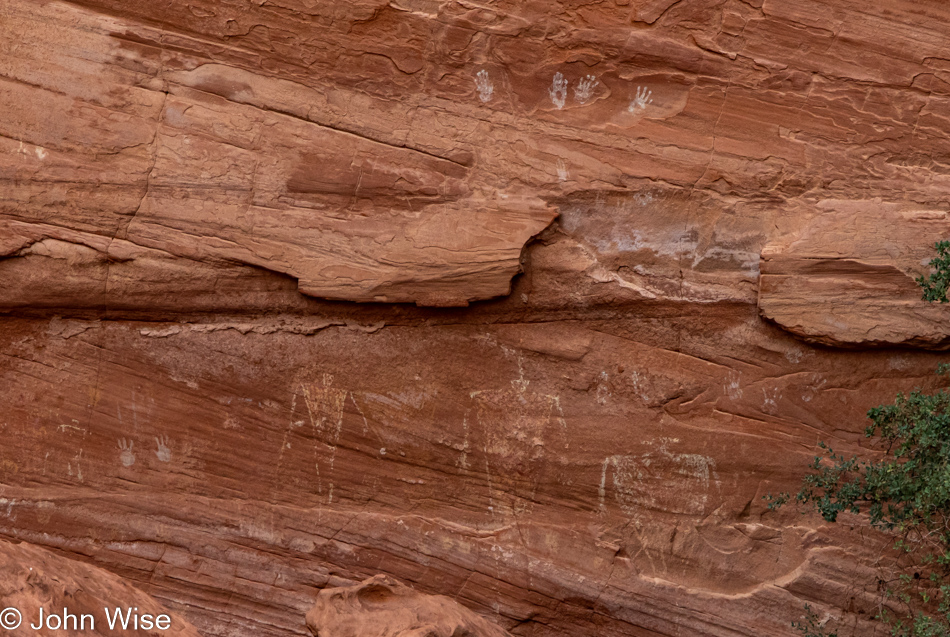
The area is fenced off, and it seems that visitors have been respecting the barrier, as only ancient cow patties are on the other side of the fence. Those plops of poo are looking fairly ancient and ready to turn to dust and are the first clue that the fence line was moved further away from pictographs and ruins in the hopes these artifacts will survive their encounter with modern man (and beast).
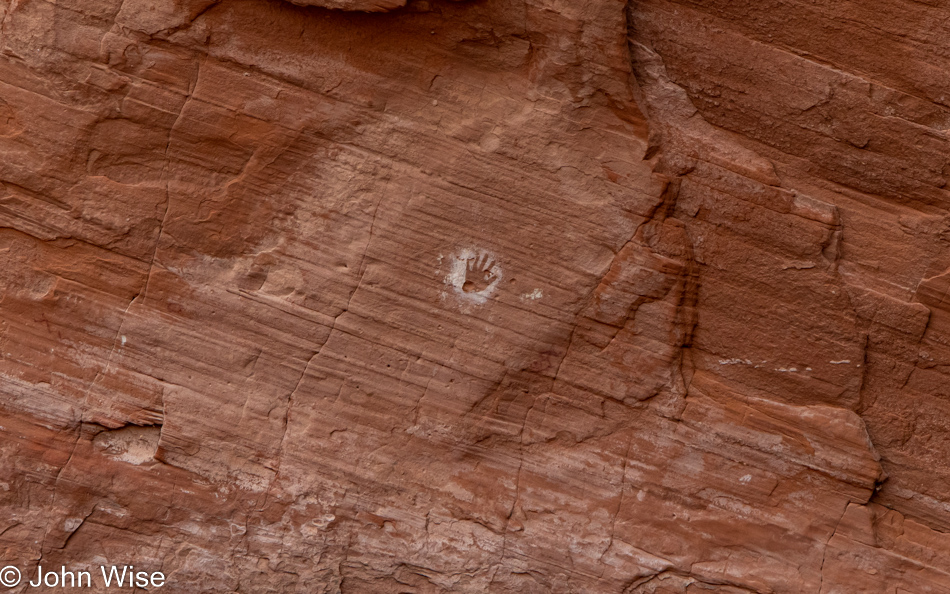
Thirty-one thousand years ago, people venturing into Chauvet Cave in what is today France blew a mouth of ochre over their hand, leaving a negative image of it. A thousand years ago, on this wall, people gathered here at their homes and did the exact same thing, except they used white clay to achieve the same effect.
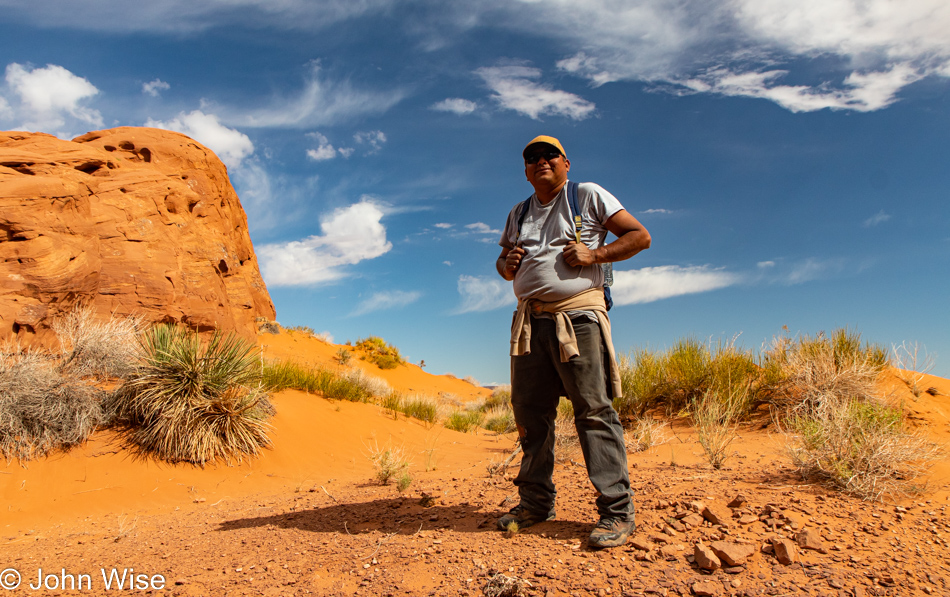
Meet Ferrison Cody (who prefers to be called Cody), our tour guide courtesy of Simpson’s Trailhandler Tours, who have been the provider of our sunset tour in Monument Valley, Navajo taco dinner, evening in a hogan, sunrise tour, and now this visit to Mystery Valley. Cody is a funny guy with a wry sense of humor that might keep you guessing, but by the time we depart company, we’ll be looking forward to the day we can employ his services once again. While he suggested a short 3.5-hour hike when we return, that would never be enough, so we’ll also consider a 5-hour slog up Hunt’s Mesa so we can capture an entire weekend of his time. While this hike isn’t over with as far as the blog post is concerned, I’m sharing right now that this guy ranks up with being an all-time favorite of ours, and we certainly let him know just that.
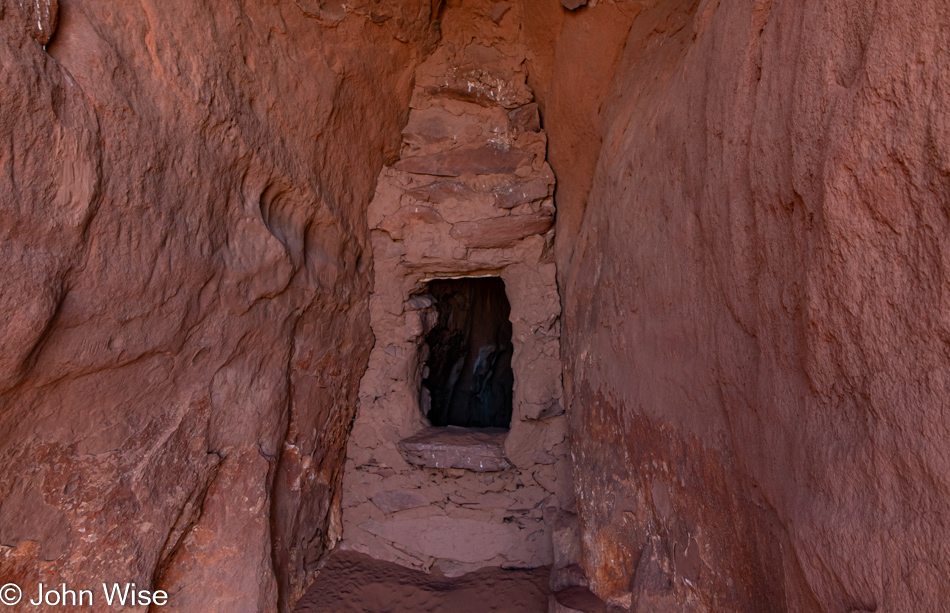
With the photo of Cody, we were now on the hiking leg of this 5-hour adventure. Our attention was directed to a narrow crack that was reminiscent of granaries we’ve seen elsewhere; if there’s any truth that this one hidden well out of sight actually stored mead, well, I’m taking that with a grain of salt.
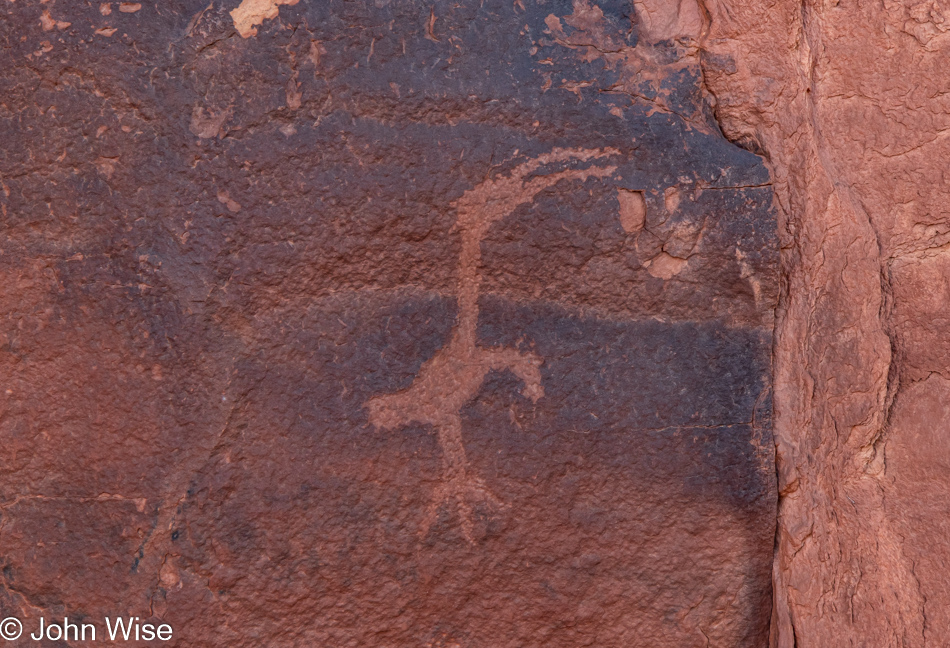
I don’t know if this was meant to be a curlew, a pelican, or maybe an ibis, but I’m not aware of any long-bill birds that don’t live near water. That doesn’t mean a lot when you consider all that I don’t know.
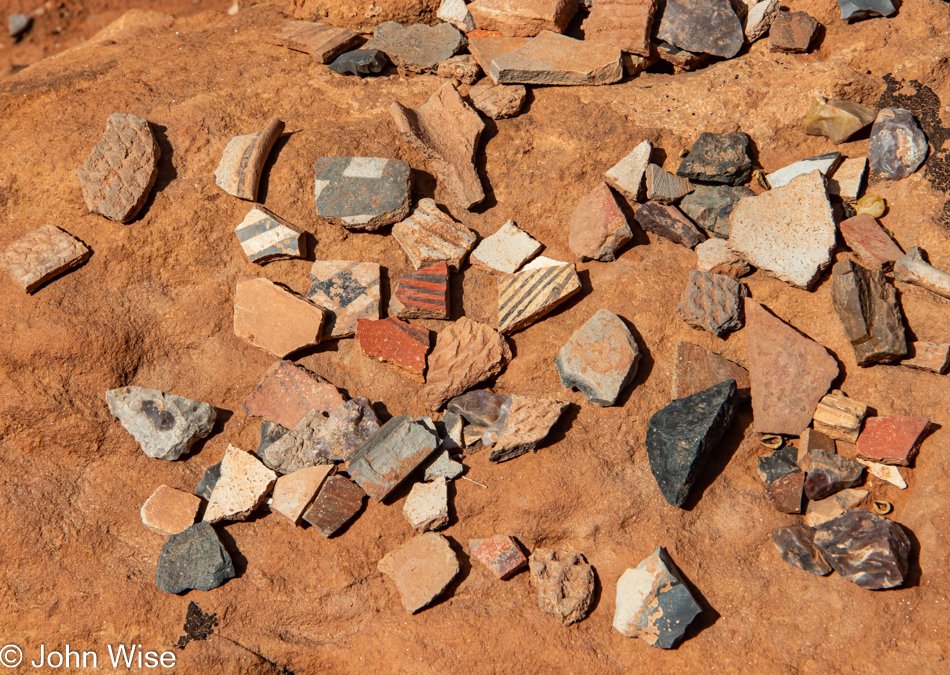
Pottery shards, cutting objects, and gold nuggets are just scattered about willy-nilly…oh, did I say gold? I meant rocks.
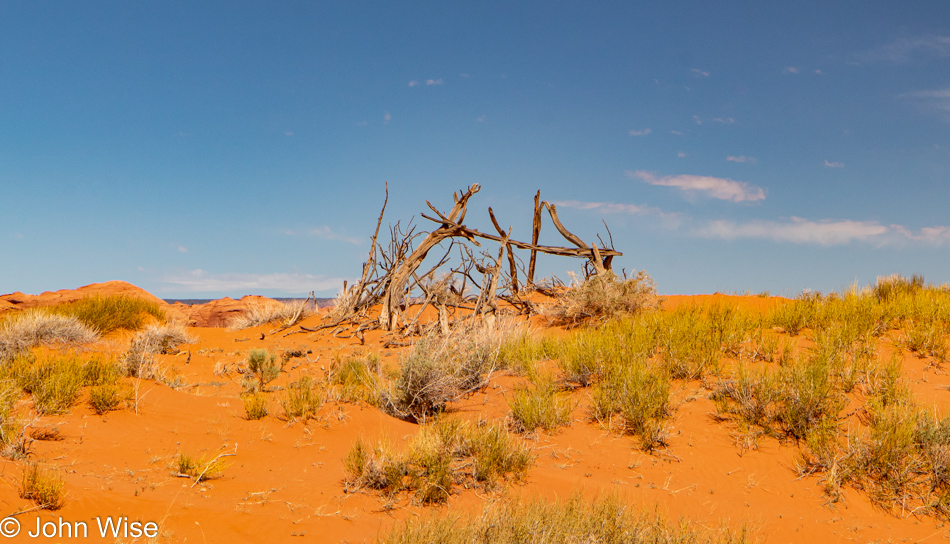
John Ford slept here.

This landscape, from a distance, appears as if it’s just another part of Monument Valley, but out here on foot, the diversity of views seems to be shifting constantly, just as these sands frozen in time must have been doing millions of years ago.
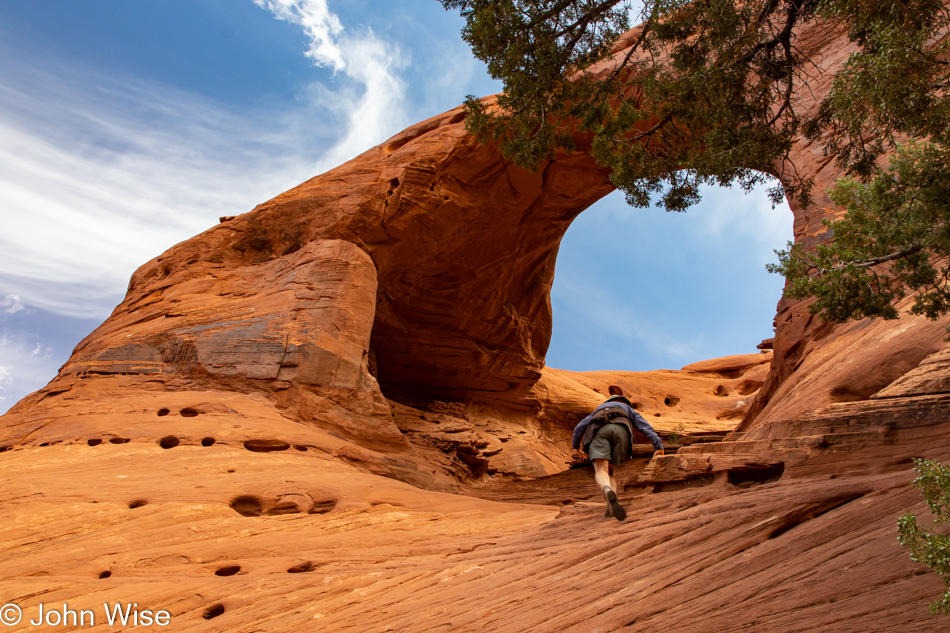
Maybe I could offer you more information about this arch but if I share too much, you might have your curiosity sated and then not have the need for the services of Cody. Speaking of curiosity, up under the arch are some ruins that will not be seen in close detail by my eyes, but obviously, my wife will see them with a better view than I will. The ascent seemed straightforward enough, but I turned myself around in my imagination to see that if I were up there, getting back down would likely turn into some terrifying moment of gut-wrenching acrophobia.
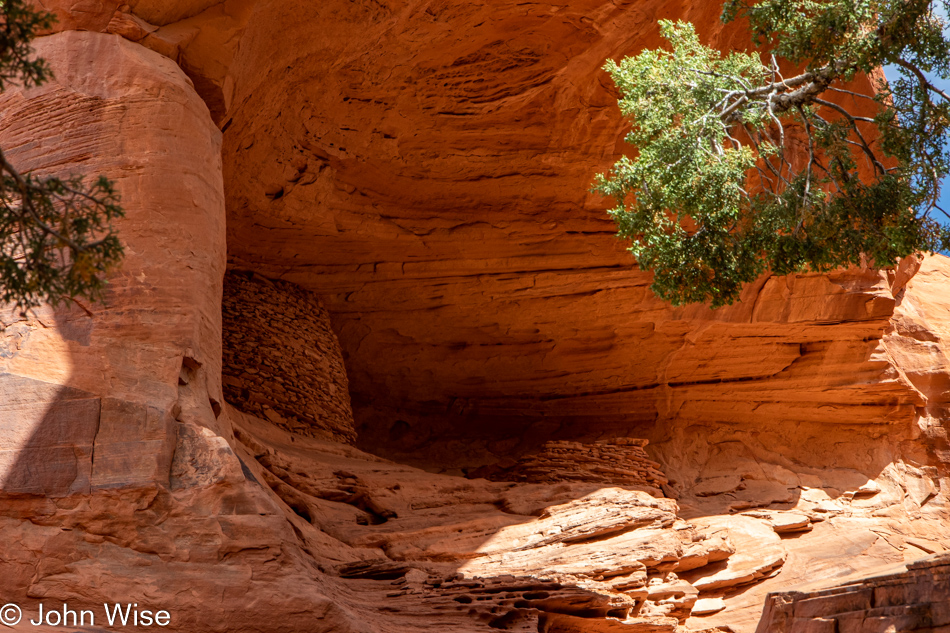
This was my best vantage point to see what my wife would have a more intimate experience with. On the roundhouse, there was an entry on the right side, and while she could have easily gotten much closer than she ultimately did, she kept a respectful distance. and when she was finished with her inspection, she finally considered that she had to come back down. Funny enough, she didn’t use her boots but instead relied on her butt and the intense friction its mass would provide her, ensuring there’d be no slipping on the steep sandstone.
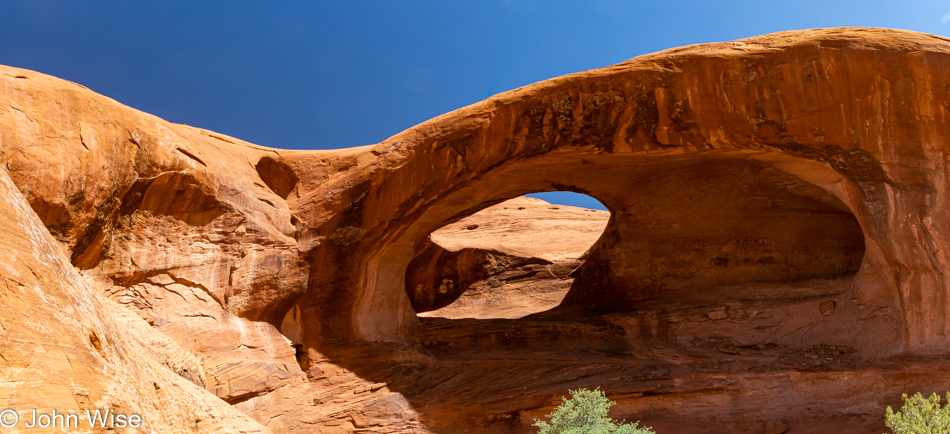
I spoke of shifting perspectives, and these three images demonstrate just that, I hope.
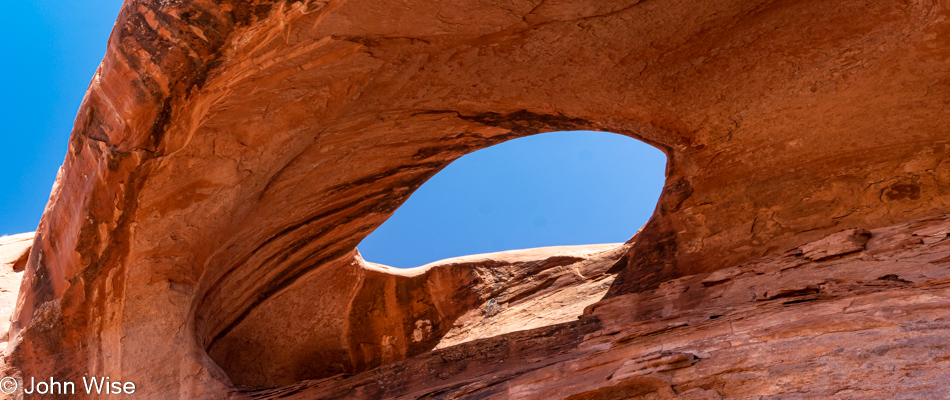
Same arch different place standing underneath it.
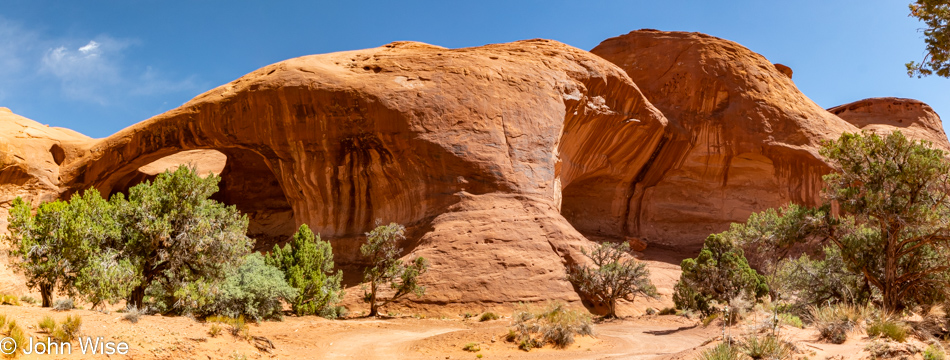
And finally, the majority of its surrounding structure.
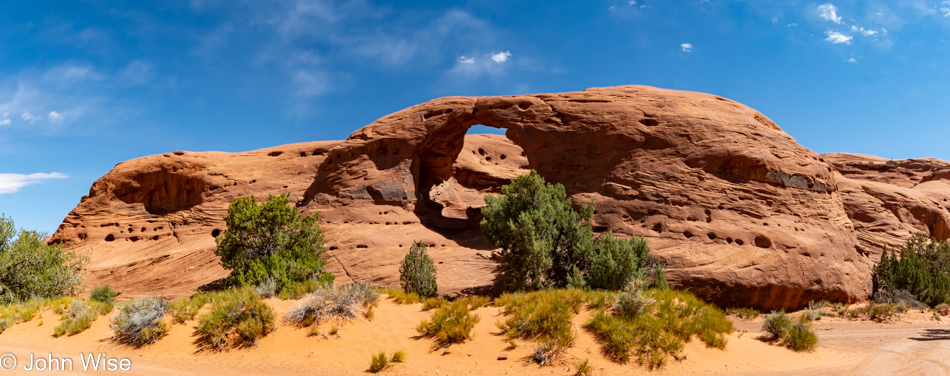
Obviously, not the same arch and maybe not even the same sandstone, although weathering and a slightly different amount of iron are the reasons behind the darker color. At second glance, I’m also noticing the Swiss cheese holes spread throughout that appear to correlate to different epochs.
Little fun fact: looking for information regarding different layers and how and when they were laid down, I discovered a word that’s new to me: chronostratigraphy. Wikipedia describes chronostratigraphy as the branch of stratigraphy that studies the ages of rock strata in relation to time. The ultimate aim of chronostratigraphy is to arrange the sequence of deposition and the time of deposition of all rocks within a geological region and, eventually, the entire geologic record of the Earth.
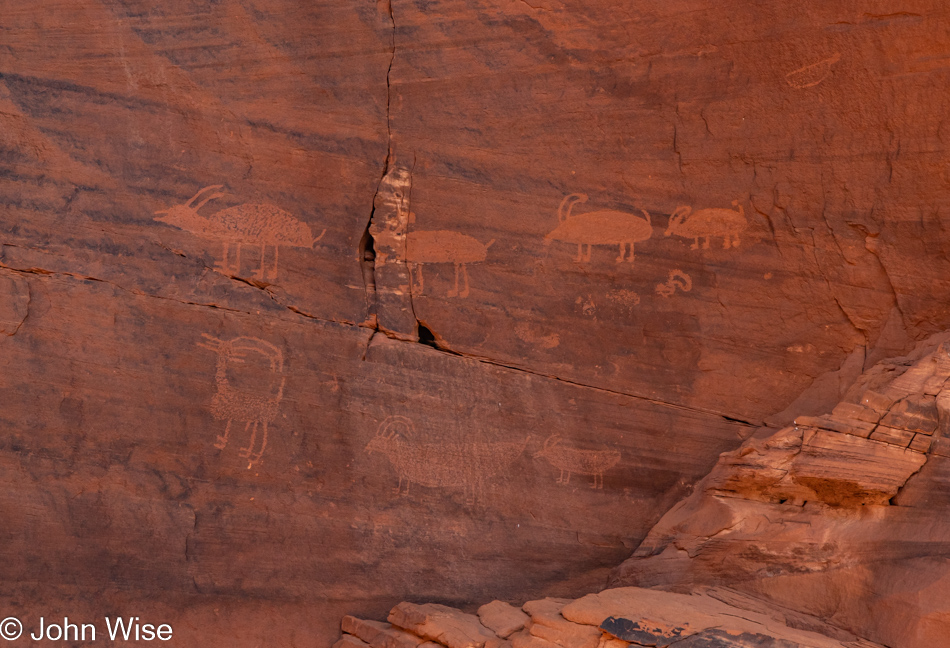
Three blind mice meet seven wandering antelope.
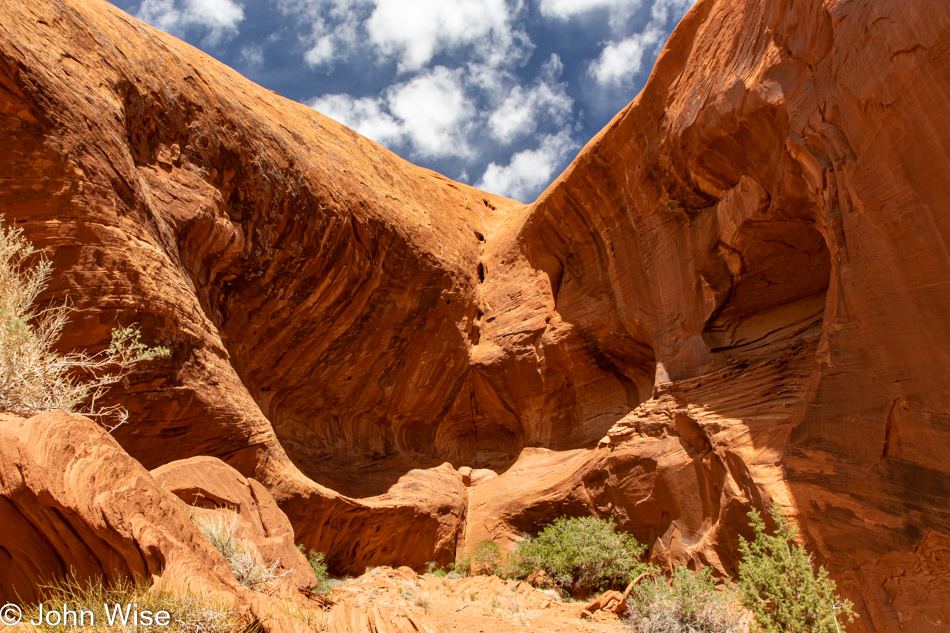
Those petroglyphs were seen in this crevice on the right. Damn it, I was trying to avoid my inner-teenage mind that filters far too much through an immaturity I can’t seem to shake, even approaching the cusp of 60 years old. It is my genuine hope that knowing that no one could possibly get through the preceding 2600 words of this post and still be reading at this point of the story, so throwing caution to the wind, I’m just going to put this out there. I don’t know about you, but to me, there’s something a bit vulvic/backsideish about this image; seriously, that’s why I even took this photo. If I lost some credibility with this, you don’t really know me. Then again, if someone is reading this in the year 2322, I’ll have to assume that you couldn’t have ever known me. And if someone says this is disrespectful of Diné culture, I’d say meh and argue that minds in the gutter are a normal part of life.
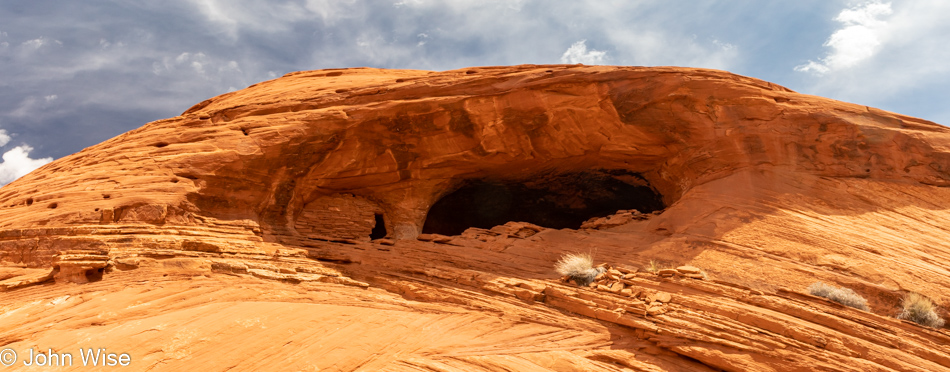
Now that I’ve said all there is to say, assuming I can recover from comparing rocks to genitalia, I should probably just stop right here. I’m groaning myself by now but what would you do after writing more than 13,000 words to 164 photos with only 44 hours left until you leave on your next trip? You, too, might be loopy by now. Compound that with this being the last 12 hours of a 5-day fast, and I’m a recipe to be relieved of a keyboard and any attempt at making sense. I should just hit the backspace key at this point because if I know anything, it’s that I don’t think anyone would want to read this far to listen to my lament, my whining, my poor excuse at trying to explain why I’m not really adding anything of value to the narrative.
Okay, breaking out of that miasma of thought, I introduce you to a cave-dwelling tucked on high over some spectacularly angular petrified dunes that are not very well represented by this photo at all. Go see it for yourself is my advice.
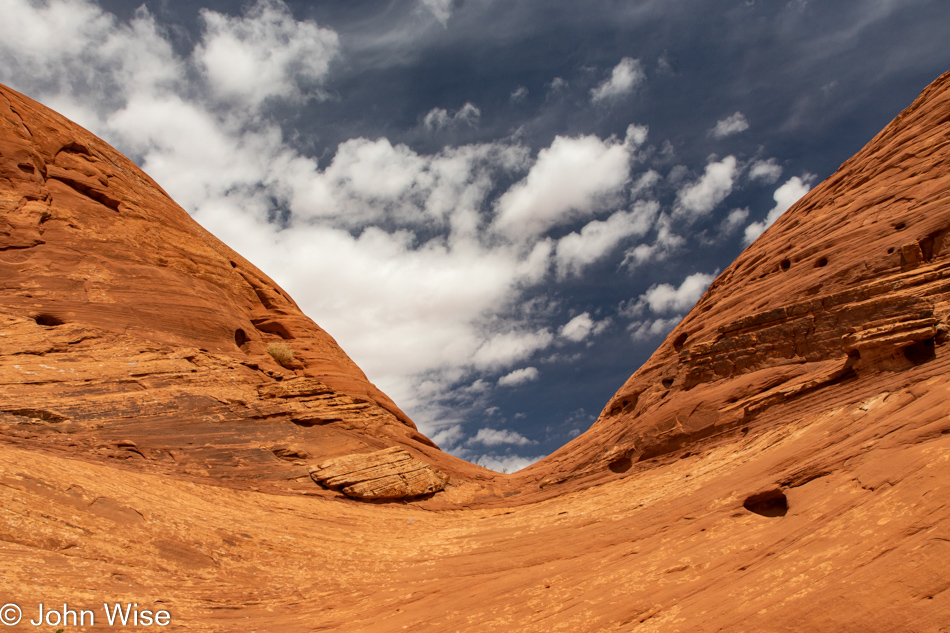
Cleavage.
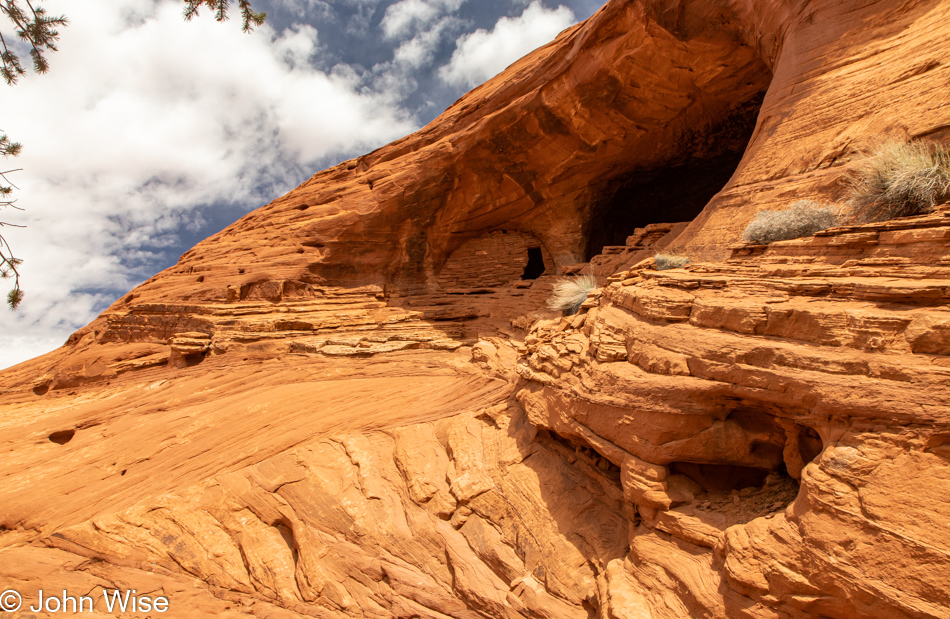
Oh yeah, I forgot that this wall of photos features another view of the mishmash of angles that were petrified in such an impossible way. If I were smart and still full of energy to continue this story, I’d return to MiniMeGeography and find out how it’s explained to children.
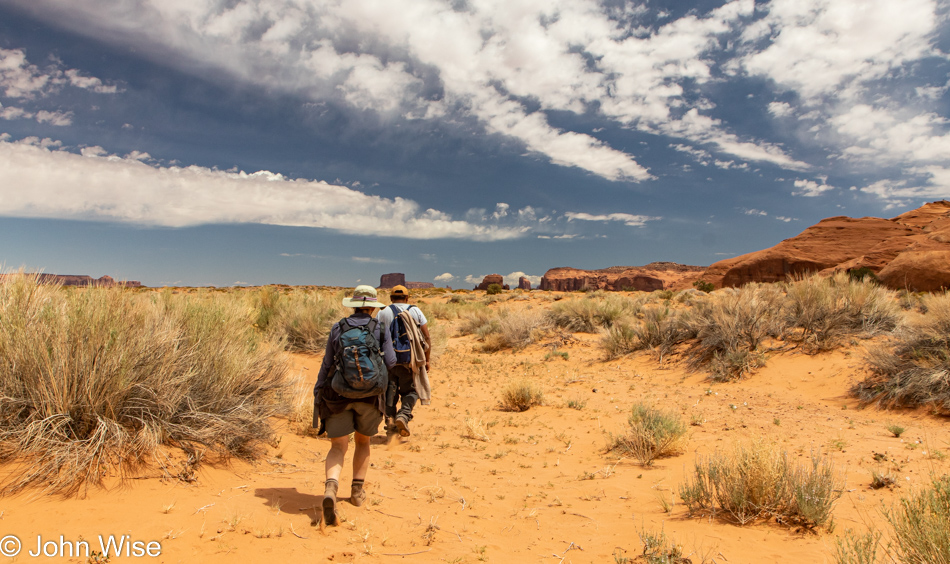
Are we outta here yet? Soon, we are heading back to the Jeep that is somewhere out there. I think I have as many grains of sand in my boots as I’ve gathered impressions today. This has me thinking about how when we’ve been hiking in fine sand, and our feet are sweaty, we rub our toes together to feel the stony little granules as though we could measure the amount of sand that is down in there by the intensity of feelings. When we finally get somewhere to whip off our boots and strip off the socks to inspect our feet, we look at our toes and the mud ring that outlines them, and I, for my part, am kind of impressed. Then, without abandon, we shove our fingers between our toes and try dislodging the red/tan/ or brown paste that’s probably collected a bit of sock fuzz in it before shaking out our socks with satisfaction, knowing comfort is about to return. Well, that’s where I go; your results may vary.
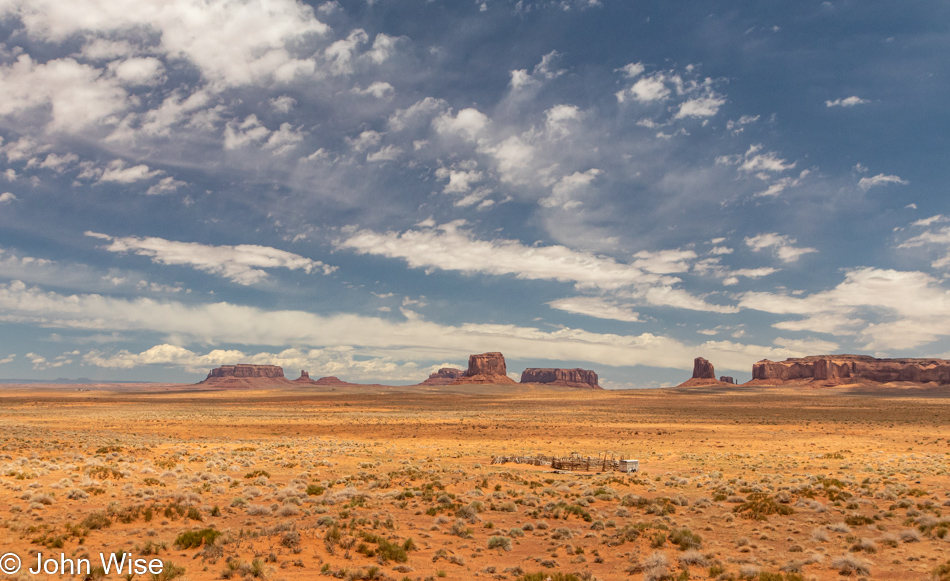
And with this last photo looking back towards Monument Valley, our Memorial Day trip is coming to an end.
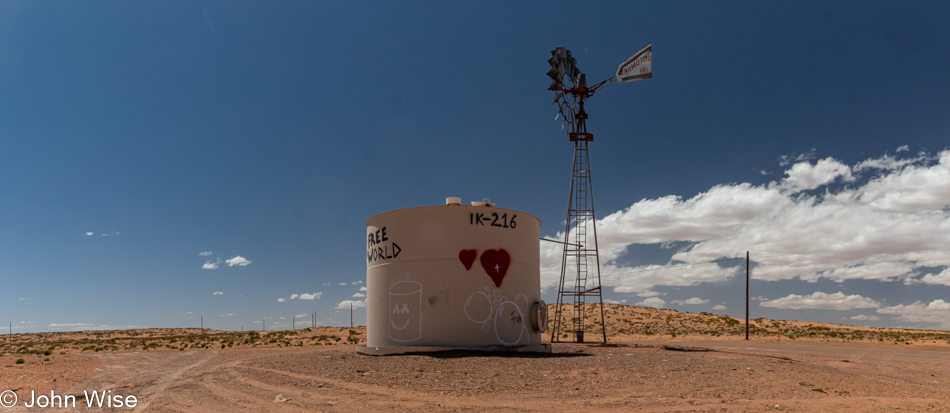
We’ve been driving south for some time now. My hope of finding some roast mutton on this adventure never came to fruition, so we had stopped in Kayenta at the seemingly most popular fast food joint on Navajo Lands, good old reliable Church’s Fried Chicken. Sitting in the parking lot gobbling down our hot lunch, a nearby rez dog we mistook for being dead meandered over, looking starved. That sad old animal was the beneficiary of a lot of crust, skin, and a sizable amount of meat as it stared at us with tears of loneliness in its eyes. Guilt is a powerful weapon when used against the sympathetic.
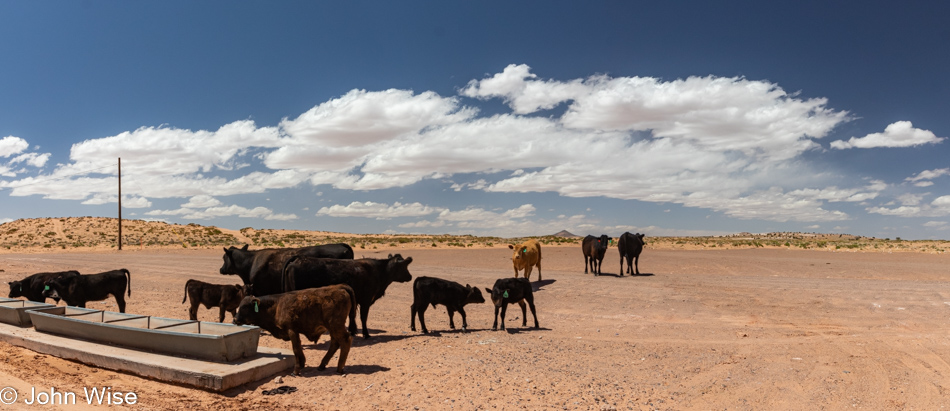
Well, here it is, the end of the trail. It wasn’t supposed to be this way, as we had designs on another night out, this one in Flagstaff. The idea was we’d avoid the grueling drive home to Phoenix on Memorial Day weekend because that’s always nothing shy of awful. Not this time, as we’ve already been witnessing, fear of recession, the effects of inflation, and high gas prices are keeping people at home. Covid already stole their time of enjoying the world, and now they’re giving more of it away to sequester themselves in their caves. So it goes, the cows don’t miss any of them anyway.
